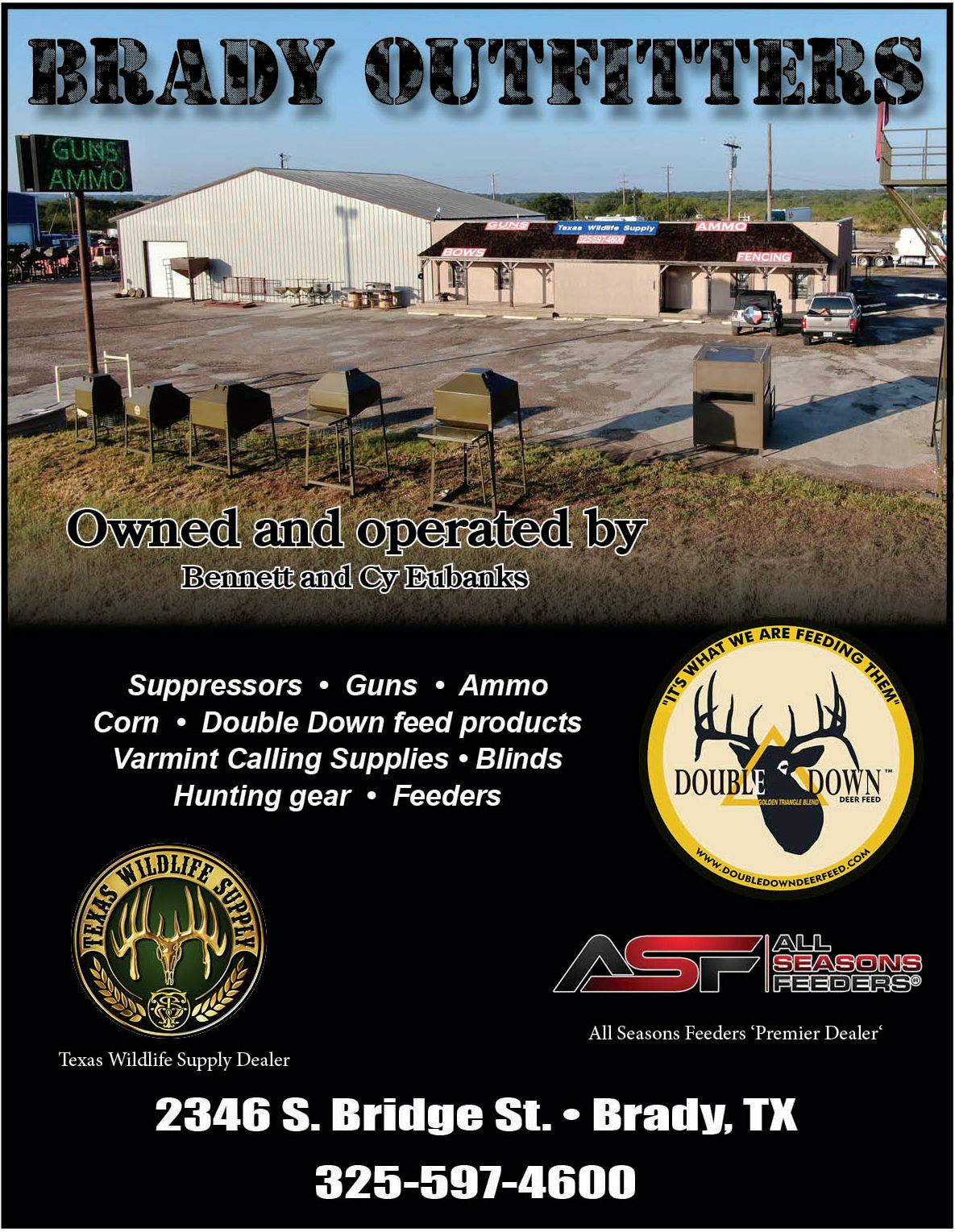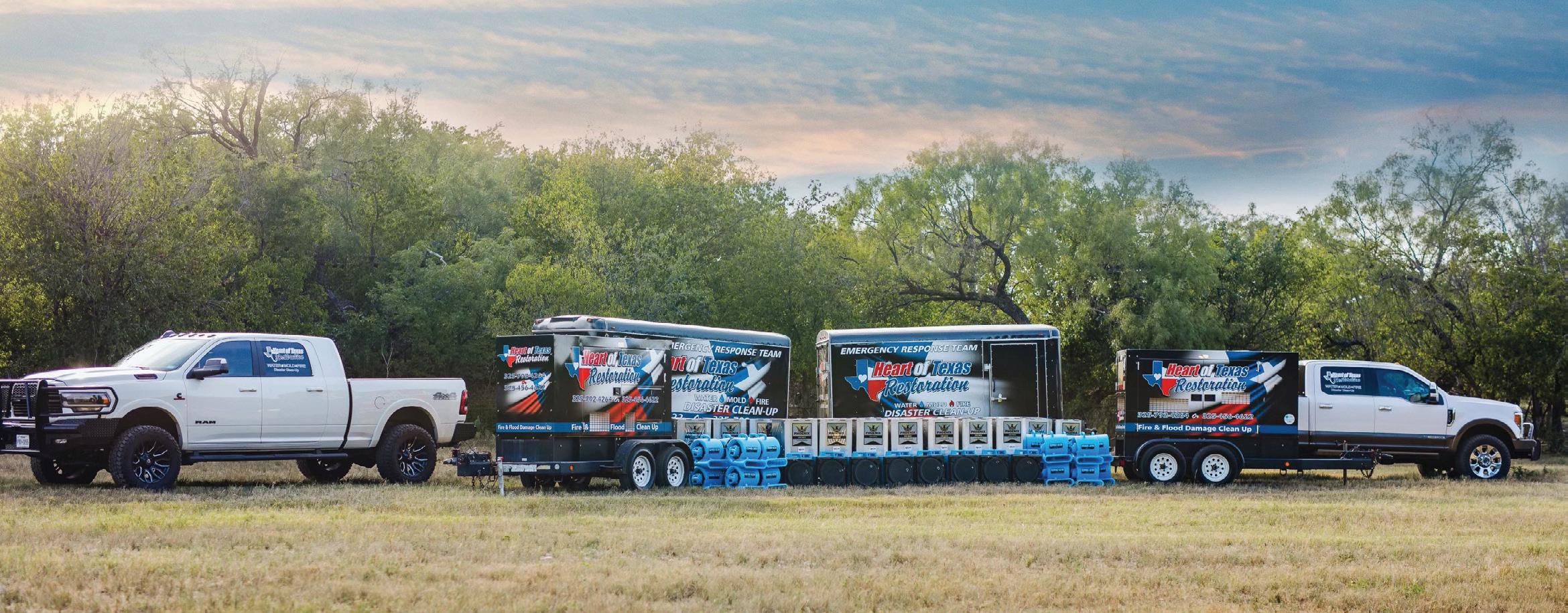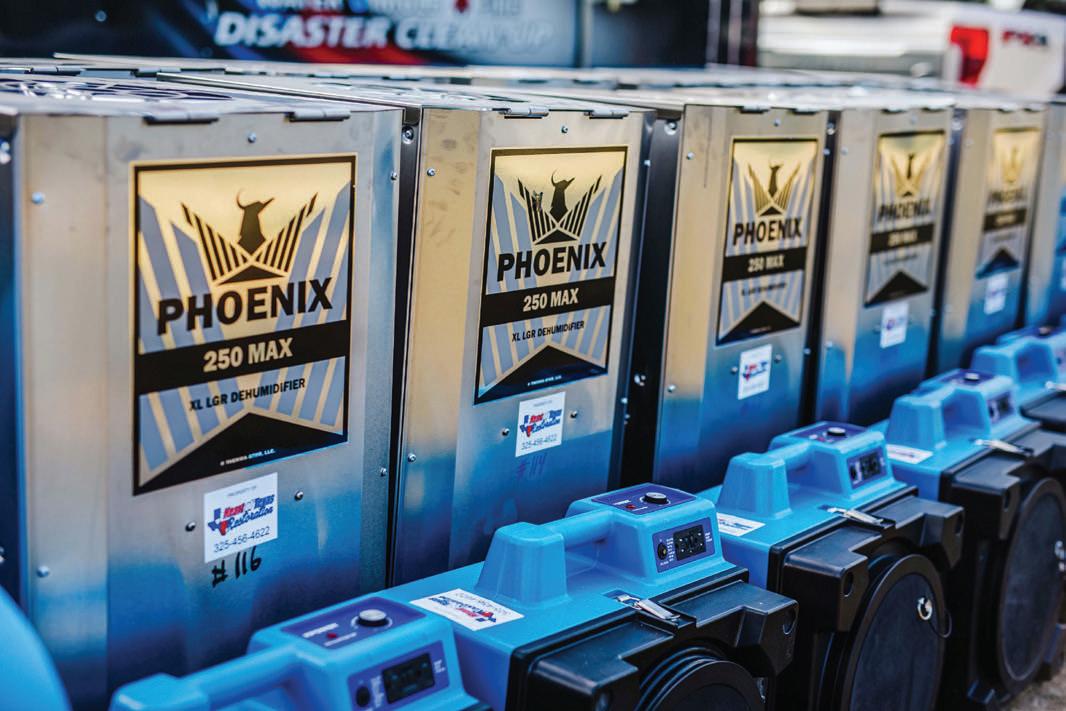
























































































































It’s hard to believe that this edition marks the 25th time I’ve published the annual Hunter’s Review. Looking back at the covers of the previous 24 editions evokes pride and brings a smile to my face to see images that jog memories of time spent behind a camera enjoying what I love to do and sharing it with my readers.
Of all the hunts, fishing trips, hiking treks, and time I’ve spent in the woods, there’s not one I could say was my favorite. I have so many that could be at the top of the list for many different reasons. In each one, I’ve likely shared it during one of the past 24 years of publishing my hobby and passion. The best ones always involve family and/or friends.
During the last quarter-century of being an outdoor writer, I’ve always tried to communicate my passion and educate folks. As with anything, the first time one goes on a backcountry mule deer hunt, a hog hunt with dogs, or even a cast and blast on the coast, one learns best through first-hand experience. I’ve been blessed to participate in several great outdoor opportunities, and I hope I’m afforded many more.
My hope and prayer is that these hobbies of mine prompt others to get outside and try something new. Elk hunting with a bow and arrow is quickly climbing the list of new things I hope to one day experience for myself as soon as I can draw a tag in the unit I’ve been traipsing around for the past two Septembers. But between now and then, I’ll keep ringing steel in Old Eighteen Defense run and gun competitions, and I might even venture out and do some competitions that are hosted by someone other than OED. If you’ve ever needed a reason to get out and use your pistol and AR-style rifle, give me a shout because I’m addicted to the sport. I think most folks are scared off by the name ~ but I tell anyone who will listen—walk and gun works just as well. It’s the experience of using your weapons and gear in situations other than punching paper on the range that makes the sport so rewarding.
I’ve already planned at least one backcountry fishing trip for the summer, and I hope to make several more. Maybe I can do one in Jackson Hole since my son lives and works there now and has an inside scoop on fishing guides.
As I was hanging out with elk hunters this past September, shooting bows and arrows, watching successful hunts on video, and gathering around the dinner table, I got excited about the opportunities that are ahead of me.
Watching several hunters get their first-ever bull elk with a bow got me excited, and enjoying their excitement and success is almost as fun as having your own successful hunt. It’s not all about the size of the antlers—it’s about the experience. That’s what we all live for. I’ll keep working for G3 Outfitters, but I’m going to start putting in to draw an elk tag to see if I can get the lucky draw and try my luck as the hunter. When I do draw, it’ll be an epic brother-brother hunt, to say the least.
Back in September, we had one hunter kill a bull on the last morning of his week-long hunt. He had put 10-15 miles on his boots every day and was feeling it by the end of the week, but hauling that bull off the mountain gave us all a great sense of

25 YEARS LATER—My hunting partners have changed over the last quarter century. Spending time in the field with my daughter and her husband makes for fun times for an aging coot like myself. While not downing any big game last year, I spent more time in the field than in previous years. But taking time to hunt together as a growing family is a fun part of life. I’ll always remember my first-ever dove hunt in Brady and look forward to many more to come.
satisfaction and smiles all around. He even made comments that no matter how hard he’s going to try to explain it, folks won’t be able to truly understand the whole experience.
We also had one other hunter drive from Mississippi and kill a nice bull the very first morning he hunted! There’s a saying that goes something like, “Do not pass a bull on the first day of the hunt that you’d be happy shooting on the last day of the hunt.” He didn’t. In his case, the hunt was almost too easy— no near misses, no frustrated guide or hunter; it just all came together. The guide was tickled, and I’d wager that the hunter and his family members who tagged along were just as happy.
As I get this publication ready to go to press, I have fond memories pop into my mind as I thumb through the previous editions. It’s been a wonderful ride over the years. I hope you enjoy reading my work. It comes from the heart. Thanks for your support!—JS
Hunter’s Review 2024
A supplement to the Brady Standard-Herald USPS # 062-900 Published at 201 S. Bridge St. Brady, Texas 76825
E-mail: publisher@bradystandard.com
Phone: 325-597-2959 James Stewart—Publisher/Editor
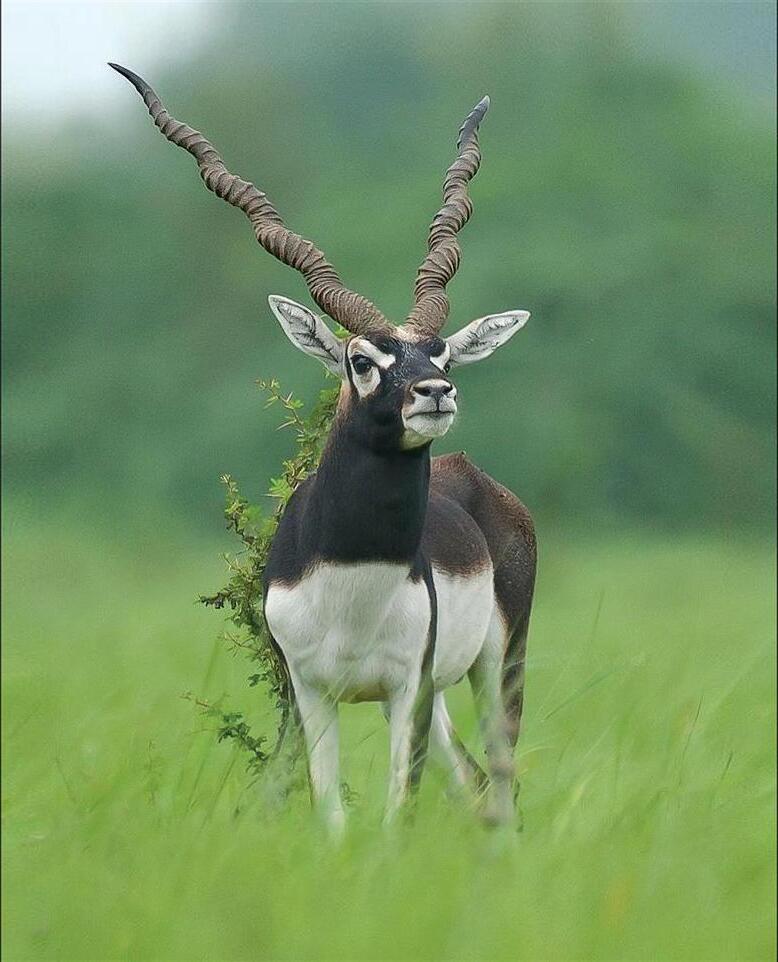
This annual edition is solely made possible by the businesses and individuals who advertise within these pages. We encourage you to patronize them and support our local economy with your dollars.
To our advertisers:
Thank you for continuing to support the Brady Standard-Herald and our efforts to provide local, hometown stories and services.
—James Stewart, Publisher
By JA mes stewA rt
The infamous ‘Brady Buck,’ a monster 286” whitetail that is legendary for its former world record status, has been the topic of discussion and controversy ever since the deer was brought to town more than 124 years ago by a man named Jeff Benson. More than a century later, McCulloch County native the late Bobby Hurd made a stand that adds yet another wrinkle to the legendary sets of antlers that still hang in the Hall of Horns at the Buckhorn Saloon in San Antonio.
One set of antlers, mounted behind the bar at the museum, is a set of shed antlers, while the other is the set of horns that have been determined authentic. The sheds actually outscore the real mount 286 to 284 3/8. Between the two mounts, they held the number one and two rankings in the world for most of the early 1900s.
Since it was first ousted from the top spot, three other naturally grown bucks have been found throughout the world that score higher than the Brady Buck. The current world record holder scored 333-7/8 and was found dead in St. Louis County, Mo., in 1981. The newest change in world ranking for deer killed by a hunter happened in 2016. The Tennessee deer was shot by Stephen Tucker. It had 47 points and scores 312 3/8.
Legend states that the monstrous Brady Buck was killed in McCulloch County in 1892, but the actual location where the buck was found is still the topic of controversy amongst people in McCulloch, Menard, Mason counties and beyond.
According to the legend that has been passed on to the Buckhorn Museum in San Antonio, two sets of nearly identical antlers were procured by museum curator Albert Friedrich sometime around 1892. The two sets of antlers were scored and hung in the museum, where they remain today.
“Papa Jeff” Benson showed up in Brady so many years ago with the two sets of antlers. The one unclear part of the story is just how he came upon the set that was still attached to a deer carcass.
The Kothmann family, with deep family roots in Menard and Mason counties, has one version of who found the famous buck back in the late 1800s.
Based upon stories told to them by their grandfathers, Menard residents Raymond and Dan Kothmann and their uncle Karlton Kothmann lay claim to the fact that the buck was discovered by their forefathers.
“My grandfather Dan told me the story one day when I was little, and up until a few years ago, I never really paid it any attention,” said Karlton. “I honestly believe in my heart that he had no reason to make up a story that tells how he and his brother, Lee Kothmann, are the ones who first discovered the deer.”
As the Kothmann family tells it, two brothers, Lee and Fritz Dan, were cowboys in the area near where the current counties of Menard, McCulloch and Concho meet. Lee was apparently the one who found the buck dead and rotting with worms and decay somewhere near where the three counties meet. To this day, the description of that location adheres to the fact that it would have been found within the boundaries of what was the Ford Ranch.
The story goes on to tell that Lee sold the deer head to Dan for a then hefty sum of $10. This is where the details become fuzzy. From there, no one knows what happened to the antlers, that is, until Papa Jeff arrived in Brady with both sets of antlers.
According to the story passed down through the foremen of the Ford Ranch, there is a slight difference in how the antlers got into
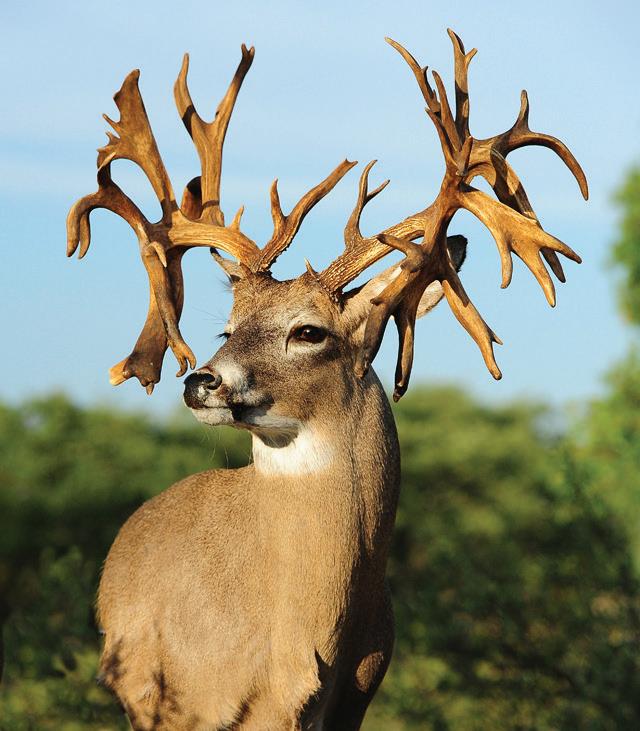
LEGENDARY—While the original antlers and mounts are on display in the Hall of Horns in San Antonio, there were a limited number of replicas made of the massive wild and naturally-grown antlers.
Benson’s hands.
As the story from the Buckhorn Saloon goes, in 1891, “Papa Jeff” found the sheds of a deer in the western portion of McCulloch County. The sheds measured 78 nontypical points and, by today’s standards, scored 286 Boone and Crockett points. The sheds sparked local interest in finding the buck that left them, and the nickname “The Elk” was soon formed to identify the elusive trophy.
In 1892, someone apparently shot and wounded the famous deer but was unable to find it. An unknown amount of time passed, but Benson is believed to have found the deer dead from a gunshot wound at a particular location that was located on the Ford Ranch.
Before his death, lifelong McCulloch County resident Bobbye Hurd circulated a recount of a story about the infamous deer that was passed on to him by his grandfather, Ben Smith, also known as “Daddy Smith.” As the story goes told by Hurd...
“In the mid-1870s, Joseph S. Smith, “Pappy Smith,” father of Ben Smith, came to McCulloch County with 500 mother cows and a string of horses. He ran his cattle in the area, which is now part of Brady Lake.
In 1886, thousands of cattle from McCulloch County to the Cana-
See Legend on Page 6
Continued from Page 1
dian border died due to extreme drought and a cold winter. Joseph’s remaining cattle drifted down to the San Saba River on what is now the Gray Ranch. After all of his difficulties, Joseph had only 80 head of cattle survive, which he gathered and sold. He then went to work as a cowboy in charge of the chuck wagon and cowboys gathering cattle to send back to the Ford-Oglesby Ranch. Pappy kept a black book with all the ranch owners and their brands to help in separating cattle. His job had him traveling throughout Menard and McCulloch County.
While living and working on the Ford Ranch, he was aware of the whereabouts of a large antlered deer’s movements. Late one evening, he shot the “Brady Buck” but could not find the body of the deer because of the approaching darkness. Three days later, due to his work, he found the body of the deer and removed the head with the antlers. He placed the head in his wagon for safekeeping from the ranch dogs and other varmints.
According to Ben Smith’s account, Jeff
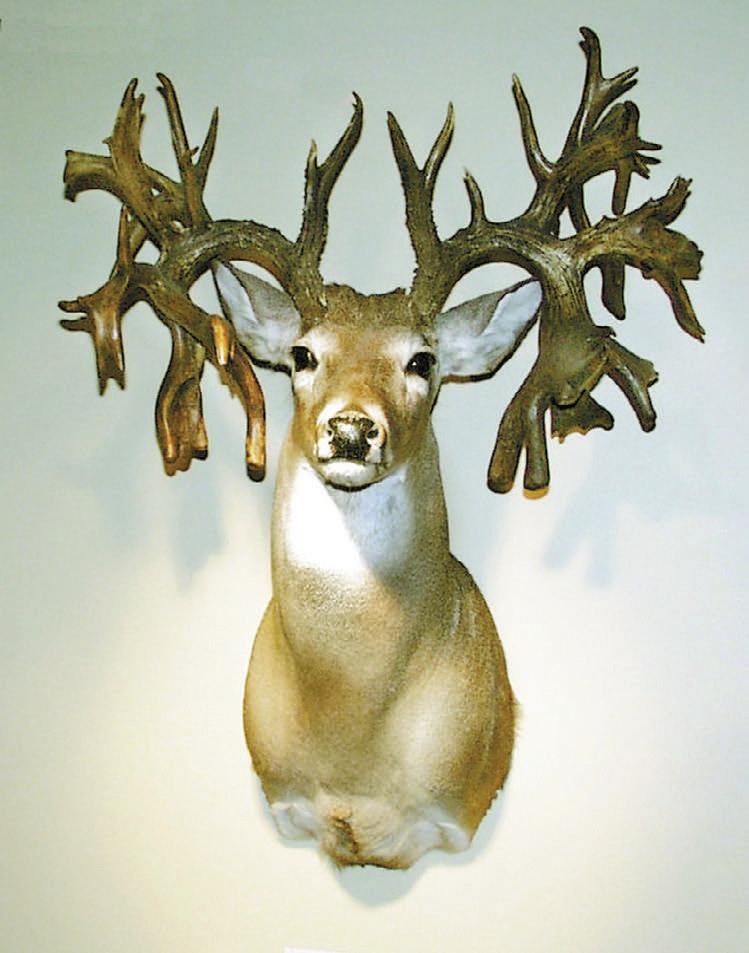
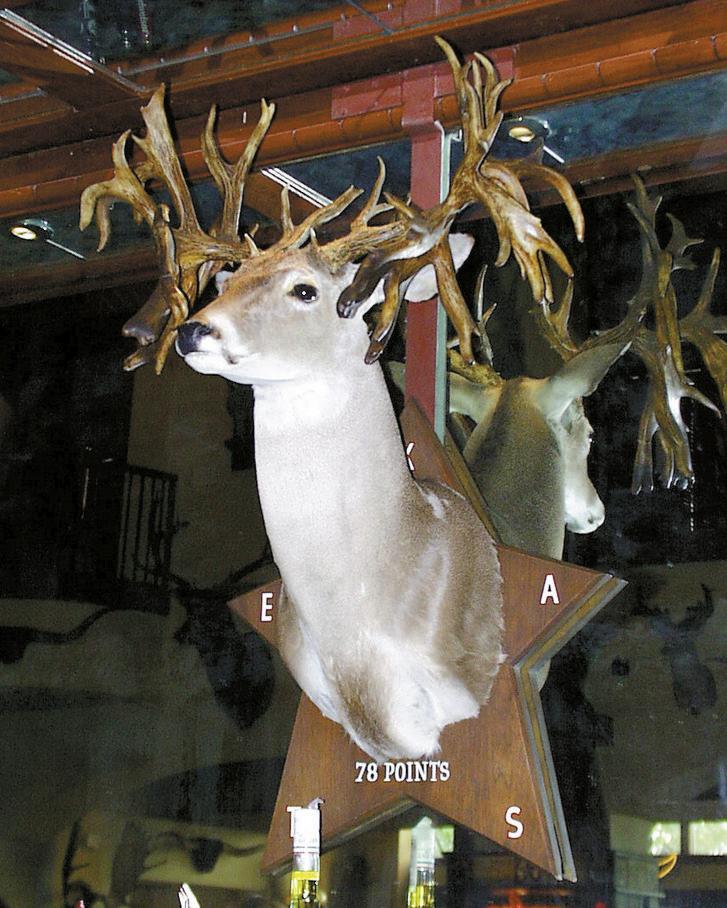
Benson took the head of the “Brady Buck” without Joseph’s knowledge and took it to Brady to sell.
Ben Smith was approximately 12 years
old at the time his father shot the deer. He is pictured above in the area in which the deer was killed. Ben Smith shared his account with generations of his family, including his

grandson Bobbye Hurd, until he died in 1984.

Daddy Smith stated that when he worked for the Ford Ranch, the water table was two feet from the surface. The cowboys would split an oak log, place it two or three feet apart, and dig out between them, and water would seep up, creating a watering hole for the cattle.
There were prairie dog towns in most of the draws, and when it rained 3-to-4 inches, it would go into the holes, staying in the ground rather than running off.
He also said that the cowboys would wrap 3-to-4 tow sacks into a bundle, tying them with wire and soaking them with coal oil. The cowboys would hook the wire through a lead rope and then light it on fire and ride through the brush, setting it on fire. Hundreds of quail would come out ahead of the fire.”
Coupled with the above statement about the chain of events, Hurd also had a copy of the 1964 edition of the Footnotes of the Buckhorn Saloon in which the curator of the museum autographed the copy and wrote, “For our friend Ben Smith, the 78-point deer man!”
Printed on pages 54 and 55 of that booklet are photos of the deer and also of Ben Smith with a caption about Smith and the deer.
“For years, I’ve told folks this story but haven’t made a big deal about it, but I’m tired of the Smiths not getting credit for this deer, so it’s time someone set the record straight,” said Hurd.
No official record or actual proof of who killed the deer has ever been produced. It is not challenged that Benson was the one who brought the antlers to Brady and sold them. The documents Hurd has do seem to substantiate the story as he recounts. Will this prove to be enough to finally put credit where credit is due? That remains to be seen.—JS

By wes virdell , President tex As ch APter of gun owners of A mericA
If you have ever ventured into politics, odds are you have attended a rubber chicken dinner fundraiser. After more rubber chicken dinners than I can count, it was my turn to host a fundraiser.
I find most fundraising events to be mind-numbingly boring and I wanted to do something fun and non-typical. I have long wanted to get a bunch of folks together and fly around shooting machine guns, and now was my chance. I mean, really, though, what guy doesn’t want to feel like Rambo and fly around in a helicopter? At least one study found that doing manly things boosts testosterone.
After making some phone calls and getting the helicopter and the ranch lined up, we settled on September 7th. This is a good opportunity to thank Jimmy and Susan Crowder for letting us use their amazing ranch near Junction. Their ranch is one of the prettiest in Texas that I have seen.
We arrived at the ranch near Junction a day early to host Gun Mag Warehouse so they could get some social media content of their M60, M249, and MP7 machine guns. The weather was perfect, and the ranch was amazing, especially after the rain earlier in the week.
Luke Rizzo, our pilot for the weekend, flew the guys around. At only 23 years old, Luke has already accumulated 2500 hours flying in a helicopter. His day job is as a medivac pilot. I have flown with a few pilots, and Luke is definitely up there in ability.
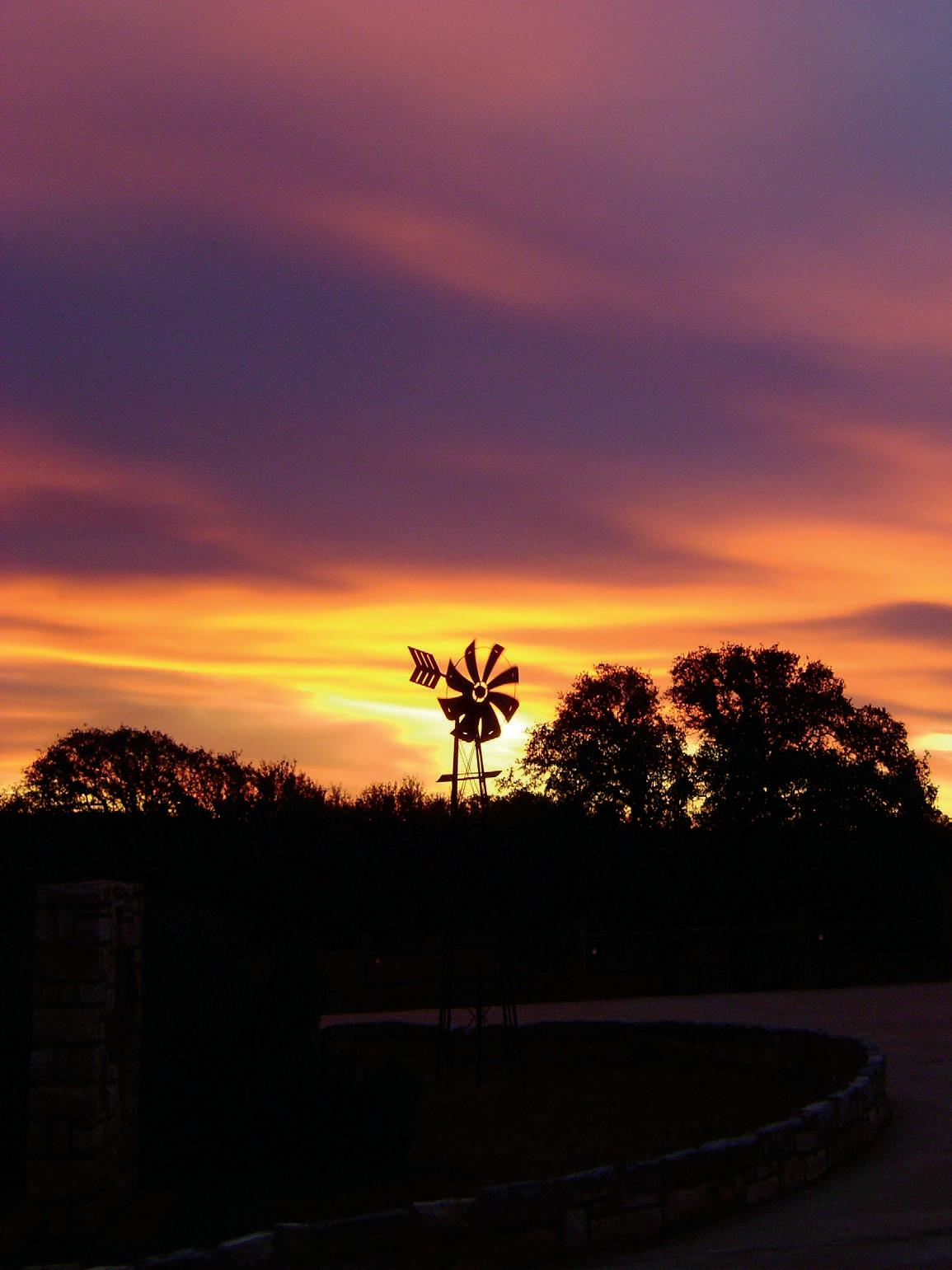

On Saturday, folks started rolling in around 0830. Luke had a team of guys to help with safety and communications. After a quick safety brief, folks were able to hop in the helicopter and be flown around the ranch while engaging steel targets.
We had some of the local law enforcement come out and join us also. One might assume only guys wanted to do this, but we had sev-
See Fun on Page 11

call



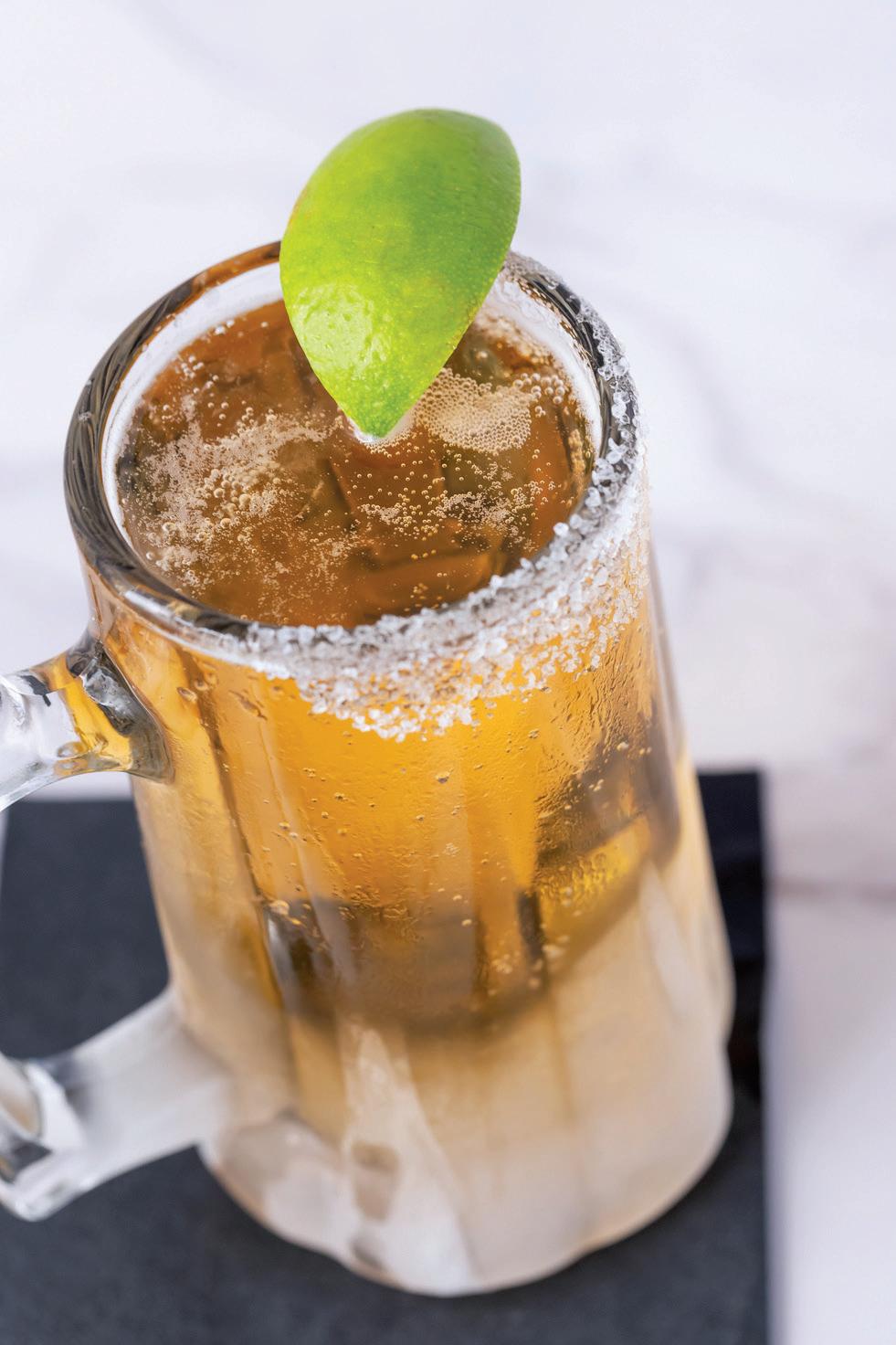


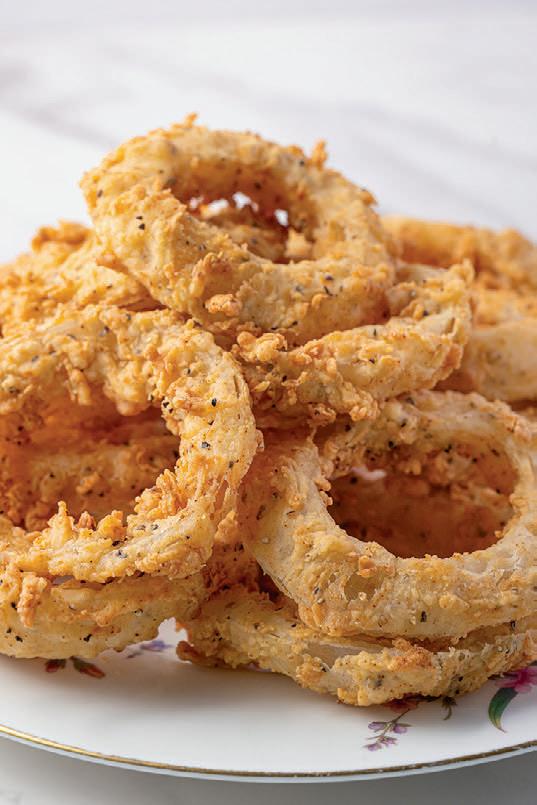
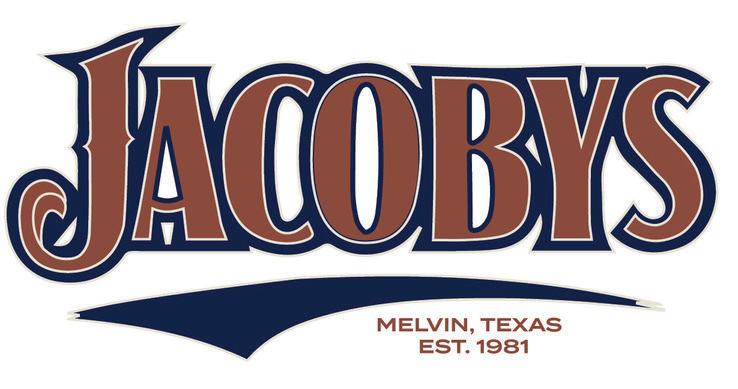
Blinds, Hunting Equipment, Game Guard Apparel, Deer Corn, Protein, Feeders, Blinds, Jacoby Brand Beef, Onion Rings, Ice Cold Beer, Mouth-watering Steaks, Homemade Desserts, and Excellent Customer Service
Cafe Hours: Mon.-Sat. 7:30-2 PM Fri.-Sat. 5-9 PM
Continued from Page 8
eral women join us. As expected, none of the other genders showed up that the left claims to exist. Just men and women, and they all had a great time. Even my mom went up in the helicopter and shot the M249 SAW machine gun. You can add that to my list of “Things I never thought I would see.”
I had challenged Luke that he wouldn’t be able to get me sick while flying around. I take pride that I don’t get car sickness, or whatever else it is that causes motion sickness. The more movement, the better I enjoy it. Luke took me up and tried his hardest, but I prevailed, feeling great.
Overall, I would call the fundraiser a success. You don’t typically find politicians who are willing to do fun stuff, and hopefully, people are getting tired of milquetoast politicians that are full of hot air. If we want to change how government operates, we must change who we send to represent us.—WV
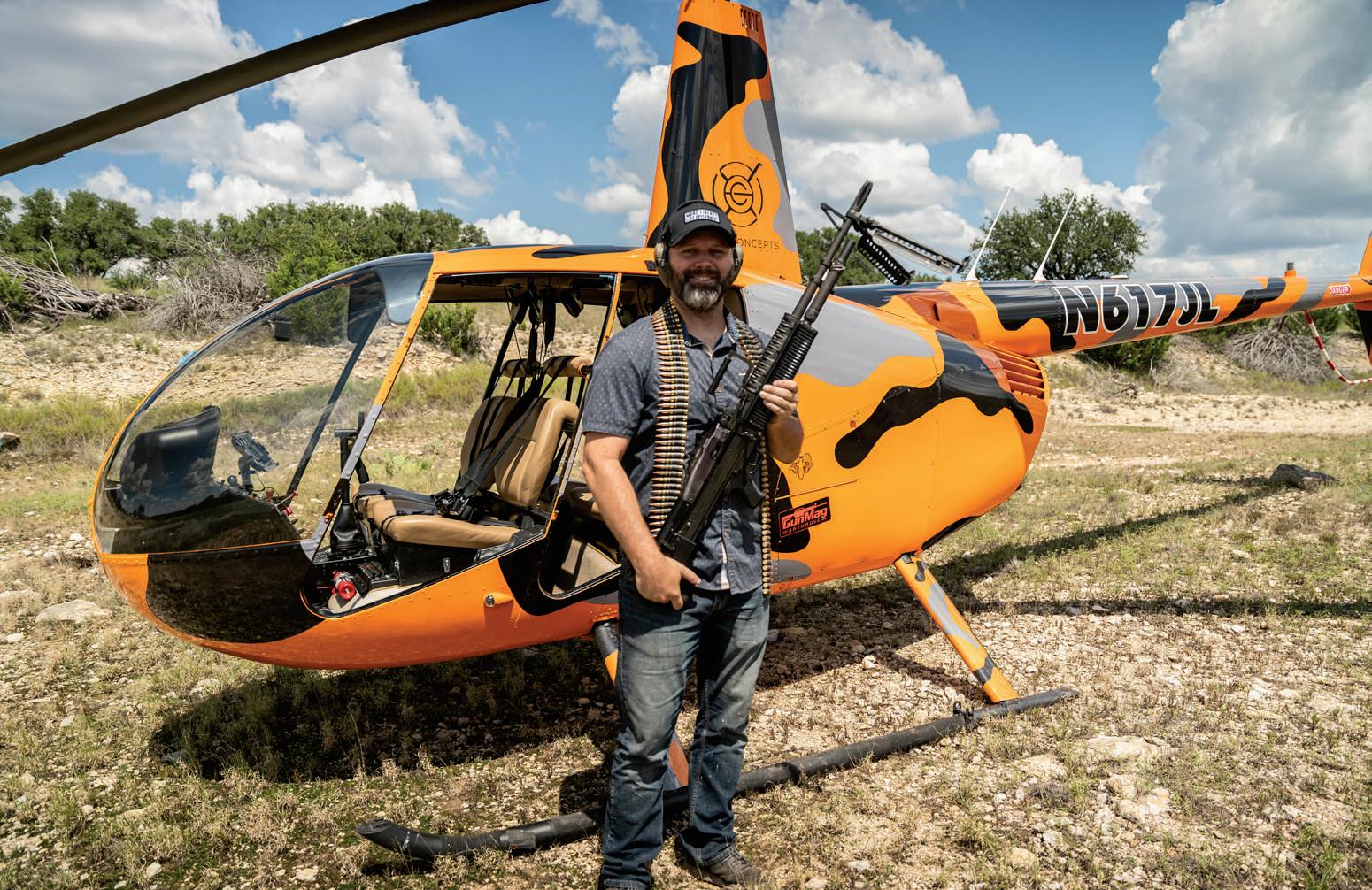
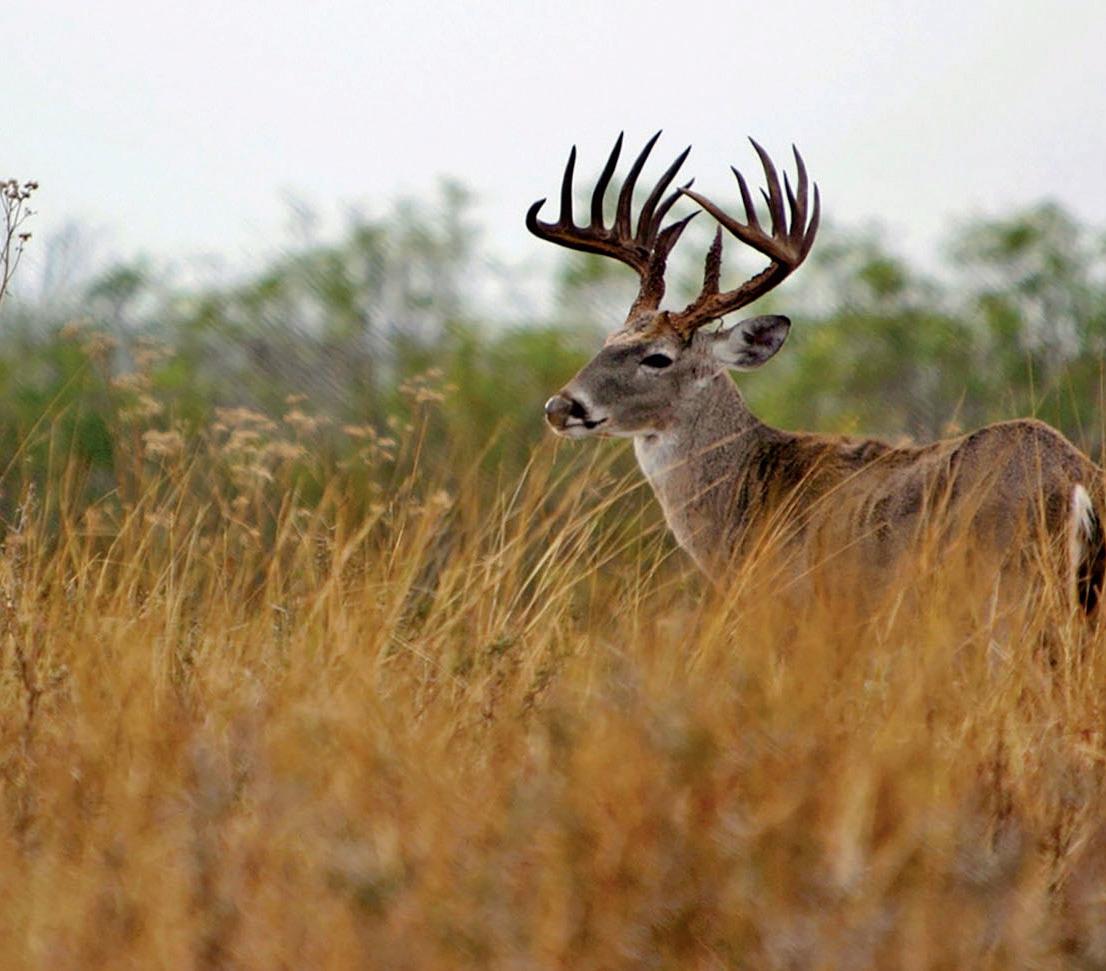
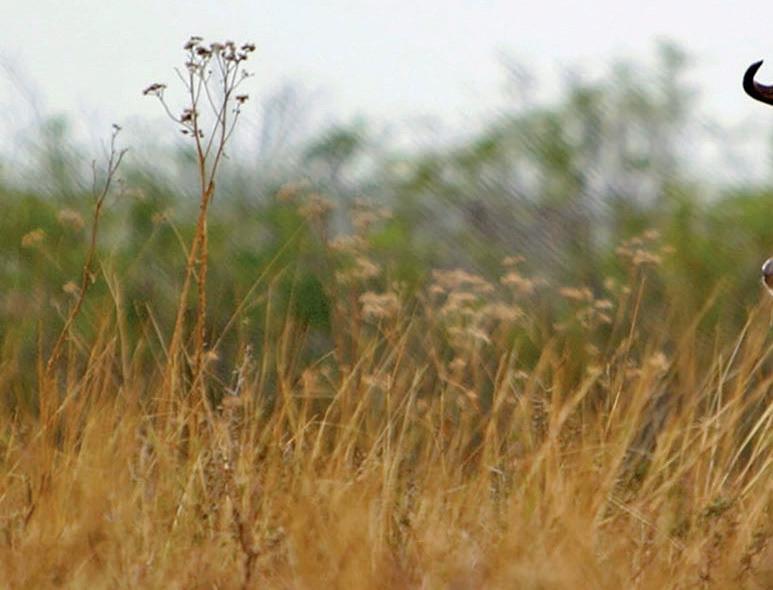



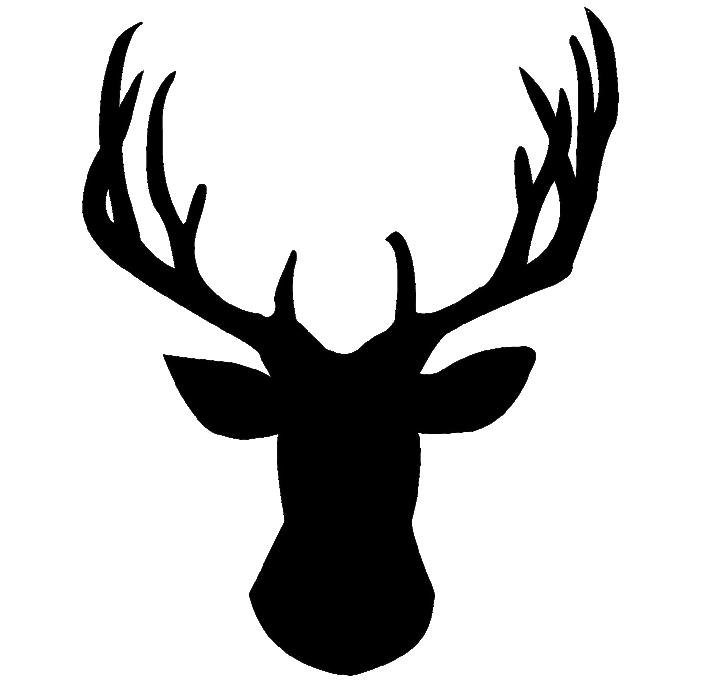
It was a November hunt in 2023 when Jake and River Long made a trip to the family ranch near Voca. Driving the same Jeep River’s grandfather, Pat, and Jake did so many years ago, they were on the same mission—kill the youngster’s first whitetail buck.
Jake has a photo of him with his first buck shot while hunting with his dad using the exact same Jeep. When the trip was over, the three of them cemented the Jeep in history as they re-enacted that same photo Jake and Pat had taken decades ago.
Hunting the family’s low-fence ranch that has been meticulously managed over the past decade, Jake and River got to the blind, and the first buck that fit the bill for an acceptable harvest came in. River just couldn’t get on it in time to make a shot.
Soon, a big buck came in and presented a shot, but dad held him off because the deer did not meet the age requirement to be considered for harvest.
And then another buck showed up, and this one fit the bill.
“This time, he was able to get ready, and he made a perfect shot,” said Jake.
The deer ran off at the shot and disappeared from view, but it was just a short search before they found him.
“The buck piled up less than 30 yards into the thicket. I didn’t want to spoil him by letting him shoot a deer that was too big as his first buck but made a perfect shot on this one using his .223. It wasn’t the same rifle I used on my first buck, but he made a great shot anyway.
With the buck on the ground, the work began, and River got some blood on his hands, helping his dad dress the deer.
“It was a group effort,” he said.
At home, the three generations smiled proudly as grandma snapped the photo.
“That old Jeep has been all over West Texas, so it has a lot of stories that go with it,” said Jake.
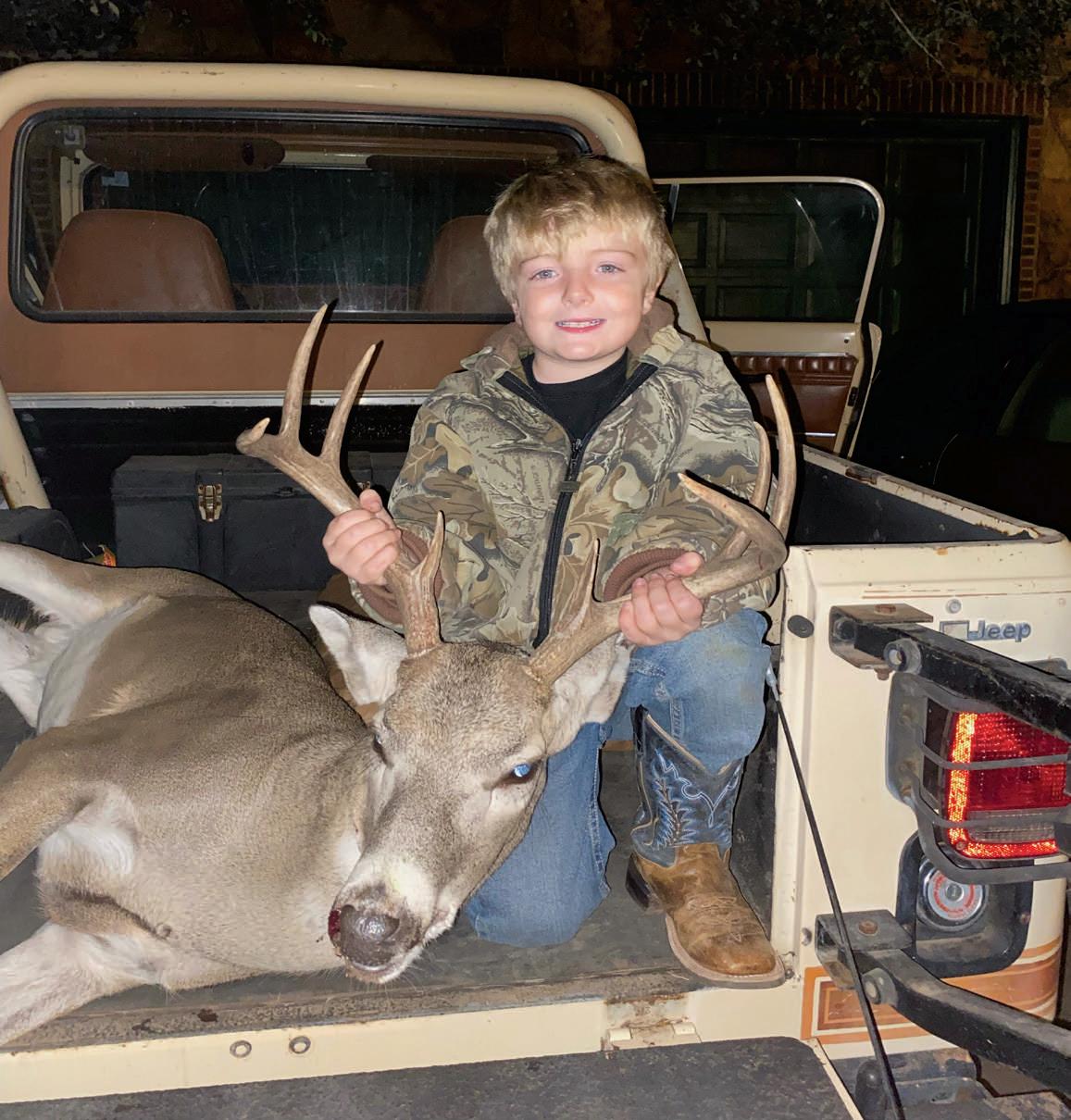
LIKE
27 years later,
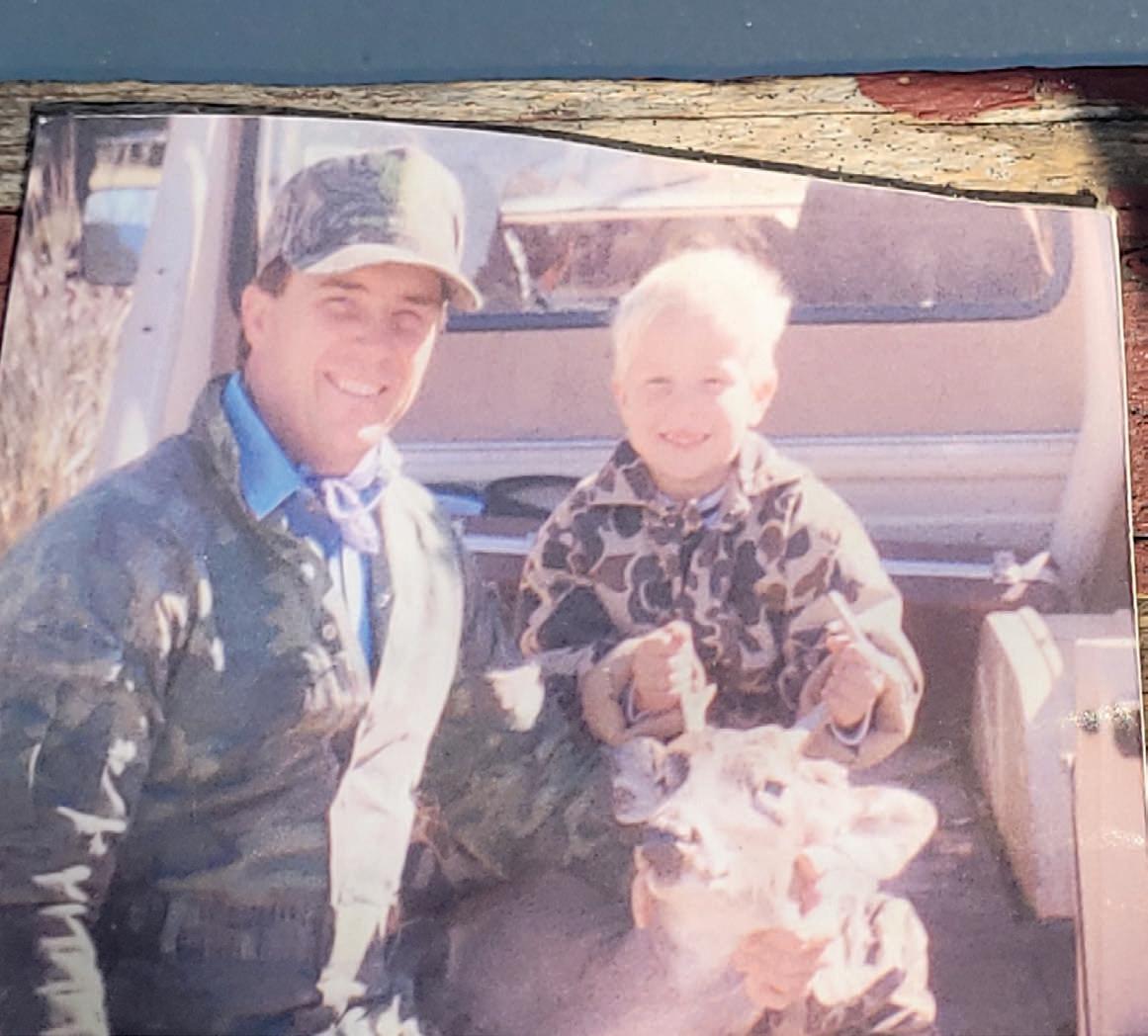
BACK IN 1996— Pat and Jake Long (above) show off Jake’s first whitetail buck. Jake and the buck were in the back of the 1981 Jeep Scrambler owned by Pat. That same Jeep (below) carted Jake and his son, River, to the same family ranch where River killed his first buck during the 2023 hunting season. After the hunt, (below) grandpa, son and grandson took time to document the ongoing tradition of using the Jeep as part of family hunting trips.
off
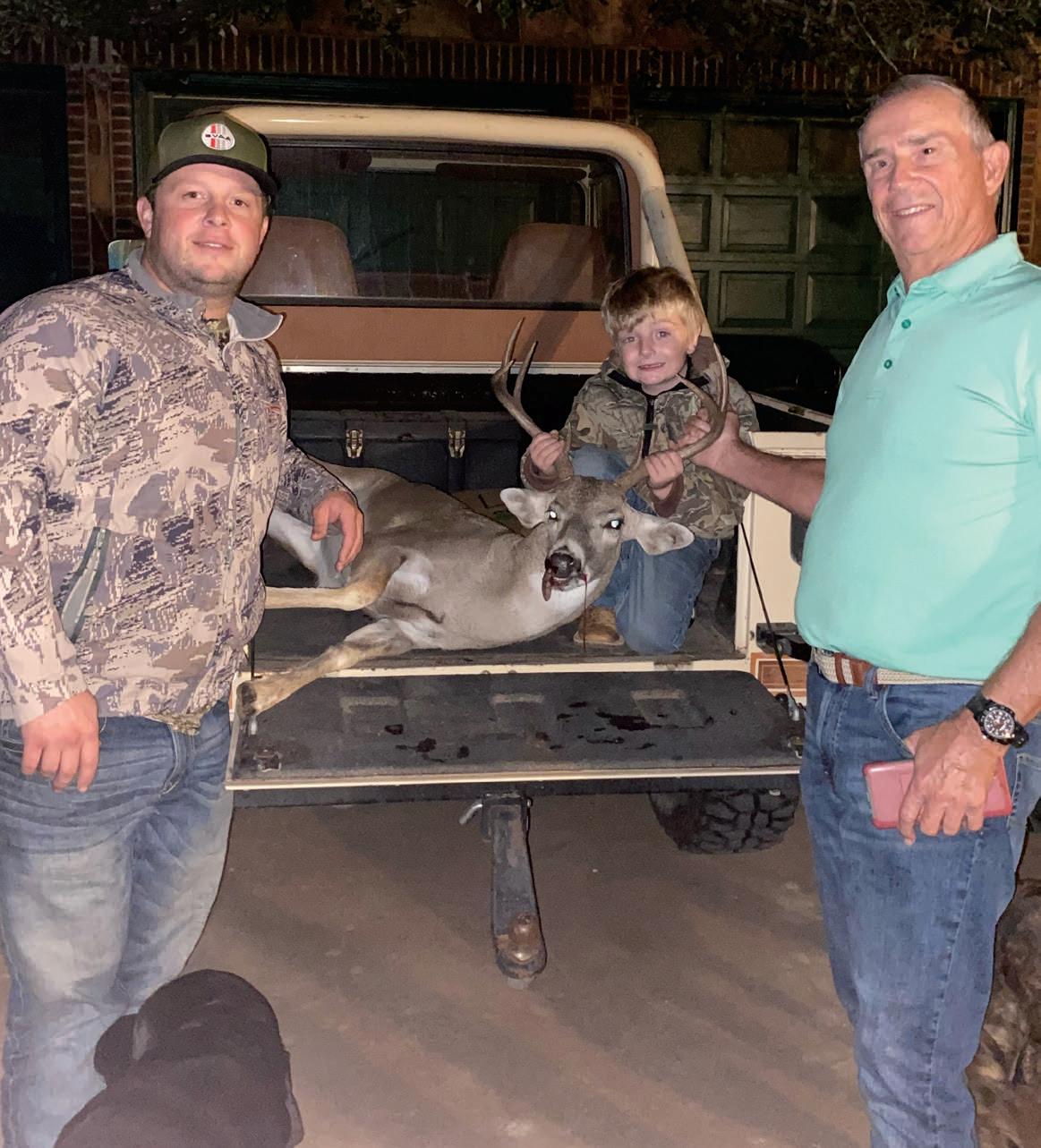



By JA mes stewA rt
Lithium batteries are everywhere. You’re likely carrying one in your cell phone right now. Rechargeable batteries of all sizes offer performance that is better than traditional closed-cell lead batteries. But as with anything these days, there are exceptions.
For one local hunter, he nearly lost his life two years ago when a lithium battery exploded in his deer blind. It happened so fast that he had no time to react. The battery was sitting on the floor of the blind between him and the locked door, and the explosion spewed burning lithium throughout the blind.
The fire that immediately engulfed the blind blocked his exit through the door, so his only hope of survival was trying to squeeze out the windows.
He was being burned to death, but he managed to squirm his way through a window, and he fell to the ground, hitting his head as he fell.
When he came to, the blind was still a blazing inferno. He looked down and saw smoke coming from what was left of his clothing, so he rolled on the ground to put out the fire. He tried to walk but kept losing his balance
when he tried to stand, so he crawled about 100 yards to his pickup.
“I remember looking down while I was crawling and seeing the skin from my arm flapping and dragging in the dirt,” he said.
He got to his pickup and, when he drove to the gate, realized he couldn’t open the gate, so he drove to another camp where he believed other hunters to be staying.
“I pulled up and was honking, and they finally came over to me, and I told them I was burned badly,” said the hunter. “The first guy looked at me and said—you’re still on fire!”
They called 911 and summoned help, and the waiting game began. It took EMS at least 30 minutes to arrive, but when they did, relief wasn’t there just yet. As it turns out, the lithium was still burning inside of his arms and legs, and the paramedics said his best option was to get a helicopter to Austin or San Antonio to get him to a burn center.
What followed was a 41-day stay in the ICU in an Austin hospital with countless surgeries, skin grafts, and him drifting in and out of consciousness. He was sedated for much of the time early on as his body recovered.
In the two years since the accident, which
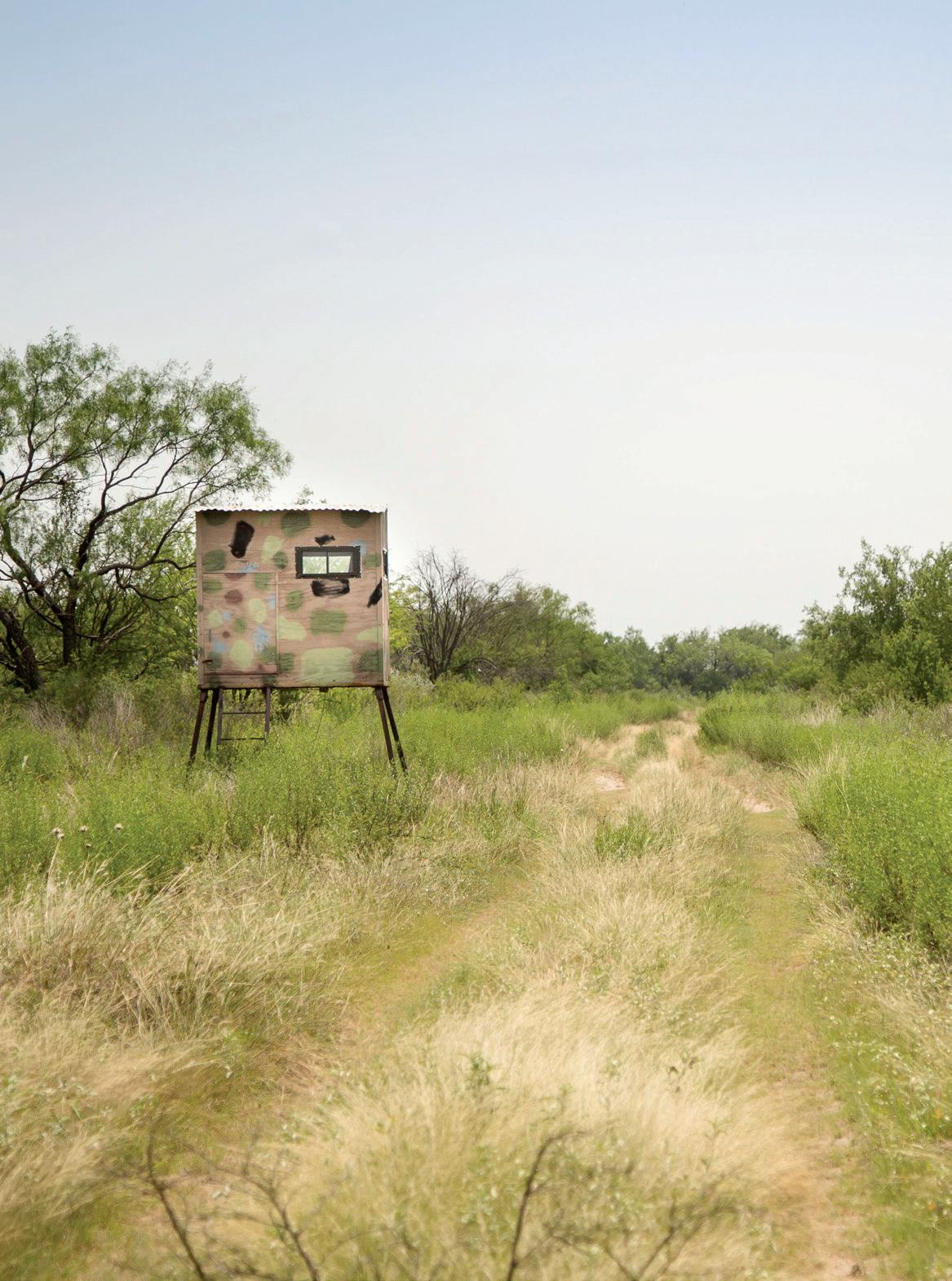


This photo shows what first responders showed up to more than two hours after the battery exploded. The lithium can be seen burning through the steel floor of the blind.
happened on Oct. 1, 2022, he’s worked through the physical pain and made a remarkable recovery. Now nearing the age of retirement, he’s determined to continue his two favorite hobbies—golf and hunting.
“The lithium burned literally into the


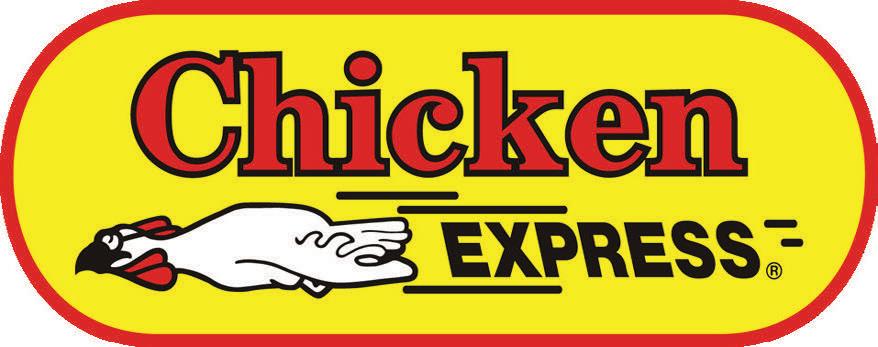
bone in my elbow, and the doctors told me they might have to amputate if the surgeries weren’t successful. My response to them was do whatever you have to because I was going to keep the use of my arm.”
The molten lithium and the fire covered 37% of his body with third and fourth-degree burns. According to the first responders who were first on the scene, when they went back to the blind more than two hours after the explosion, the blind was still on fire, with the lithium visibly burning through the steel floor.
The battery was brand new. It had been shipped to his house and had been in a temperature-controlled environment for several weeks. It had an inverter hooked to it that was going to eventually power the vent fan and charge his rifle scope, phone and laptop. The solar trickle charger had not yet been hooked up to the battery. The temperatures were mild, and nothing out of the ordinary had happened, but what caused the battery to “light off” is not known.
For this man who loves golf and the great outdoors, his life has been altered, and his acuity to being around lithium batteries has changed him forever. Some of his golfing buddies have put lithium batteries in their carts, and he told them—I won’t ever be riding with you!
The physical and emotional scars are quite visible and still a daily reminder of that frightening day. He sometimes catches people staring at his scars or muttering under their breath in the checkout line at the grocery store. Some of his scars will never completely heal, and he will forever have to care for the skin on his arms and legs. And don’t ask him to use anything with a lithium battery. He just won’t take that chance.—JS



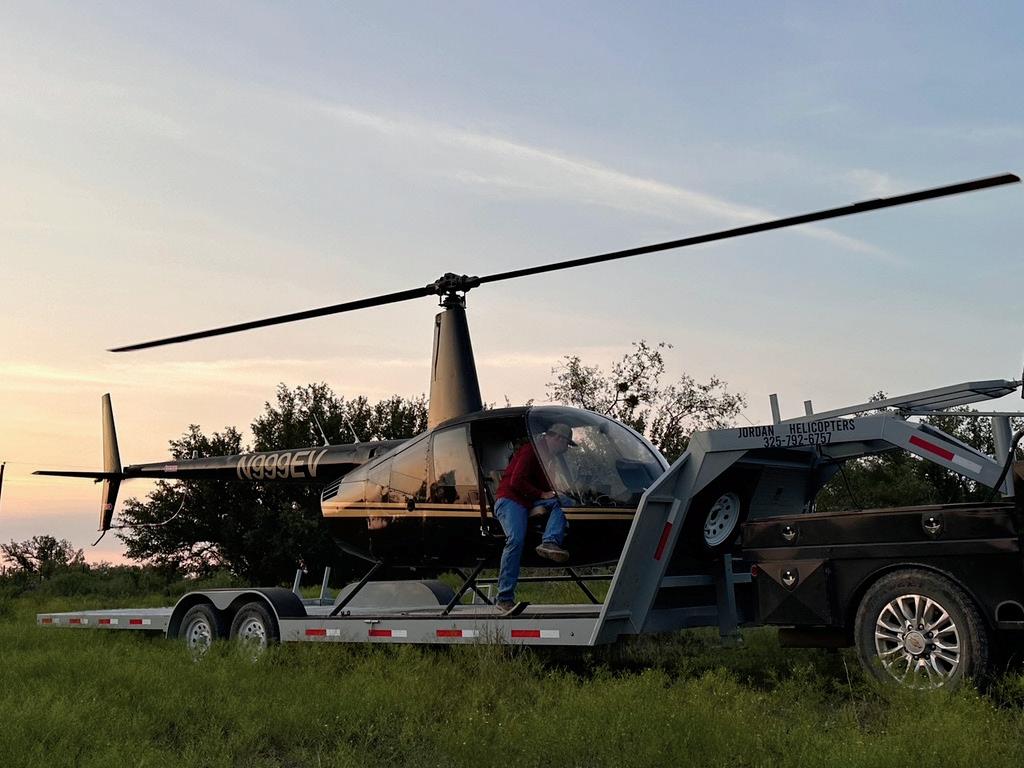
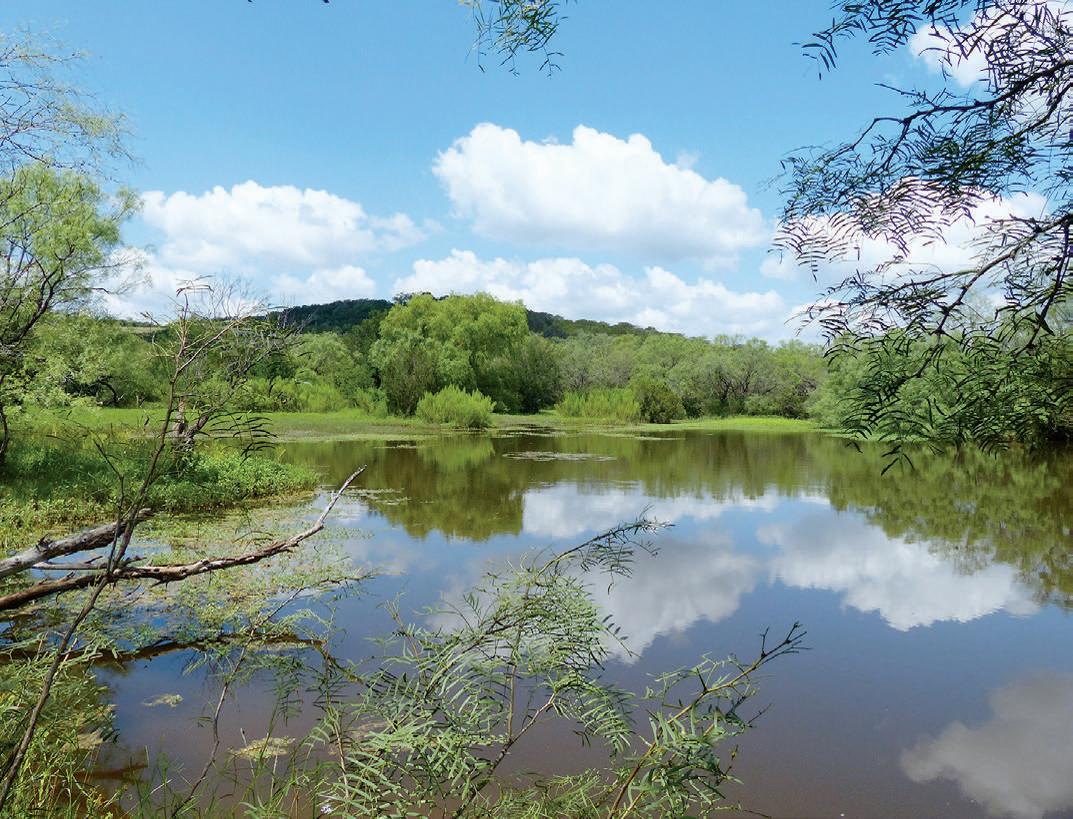





There is a simple tool that every gun owner should own—a torque wrench. Not only should it be in your arsenal, but it should also be used regularly.
I purchased a rifle from a friend a few years back. In my range session, three sub-MOA shots at 100 yards, followed by a single shot at 300, were followed next by a cold-bore shot at 868 yards on a gallon jug.
The rifle, a Savage 110 High Country in 6.5 PRC, still had the trigger set at the factory poundage, and with the adjustability of those rifles, I wanted a lighter pull.
Long story short, I dropped the poundage of the trigger re-assembled the rifle, and even though I’d used the torque wrench in that process, something was off.
A series of frustrating shooting sessions proceeded with wildly inconsistent groups.
After trying to retrace all the steps, I went back and consulted the manufacturer’s specs for torquing all aspects of my rifle, which proved to be the solution. Although only one bolt was over-torqued, it threw the accuracy of the rifle completely off. Like 8”groups at 100 yards kind of off.
Some folks love tearing apart their rifles and putting them back together. I have several friends who love building rifles, and they know more about swapping barrels, buffer tubes, scopes, and the like than I can even begin to know. I just like being able to make adjustments. Either way, just grabbing a screwdriver and cranking tight the screws is a recipe for disaster.
When I went back to zero and undid everything I had done, the correct torque settings on all of the screws allowed the rifle to once again become my favorite precision rifle.
The more you learn about what goes into making a rifle accurate, the better you become at identifying problems when they crop up. It’s not a matter of “if” but rather “when” things will go wrong with a rifle, so understanding the cause and effect will help you narrow it down much quicker than making a WAG.
I’ve enjoyed putting one of my ARs and my competition pistol through the paces at Run and Gun competitions. The whole theory behind them is to test yourself and test your gear. Add in testing the elements, and you’ll see what you and your equipment are made of. At the last event, there were two water crossings—over the head depth. That’s really when you learn how well-prepared you and your gear really are.
That torque wrench goes with me in my range bag anytime I head out to shoot. I'ts the smart thing to do.—JS

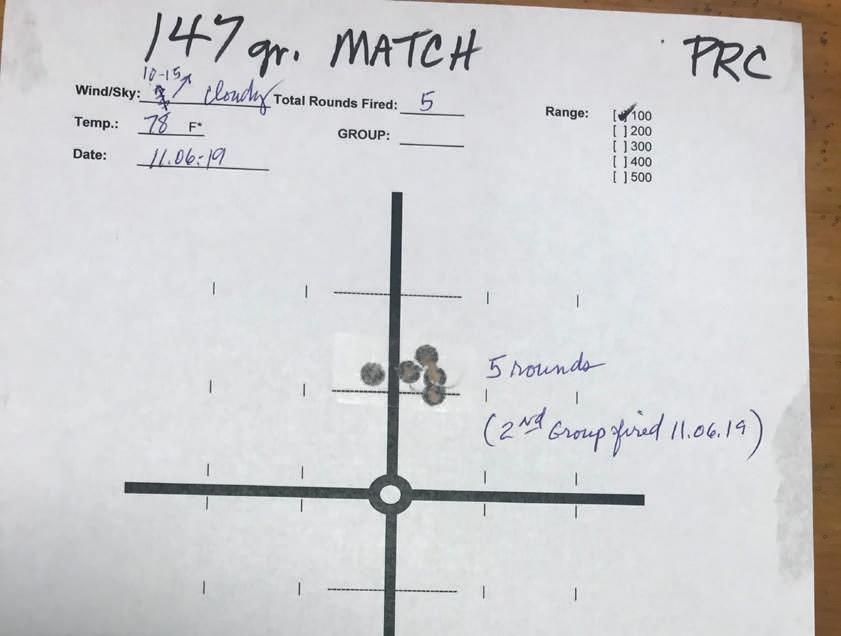
PROPER TORQUING on all screws makes a big difference when you’re looking for consistent grouping on any rifle whether it’s a .22 or a 6.5 PRC.
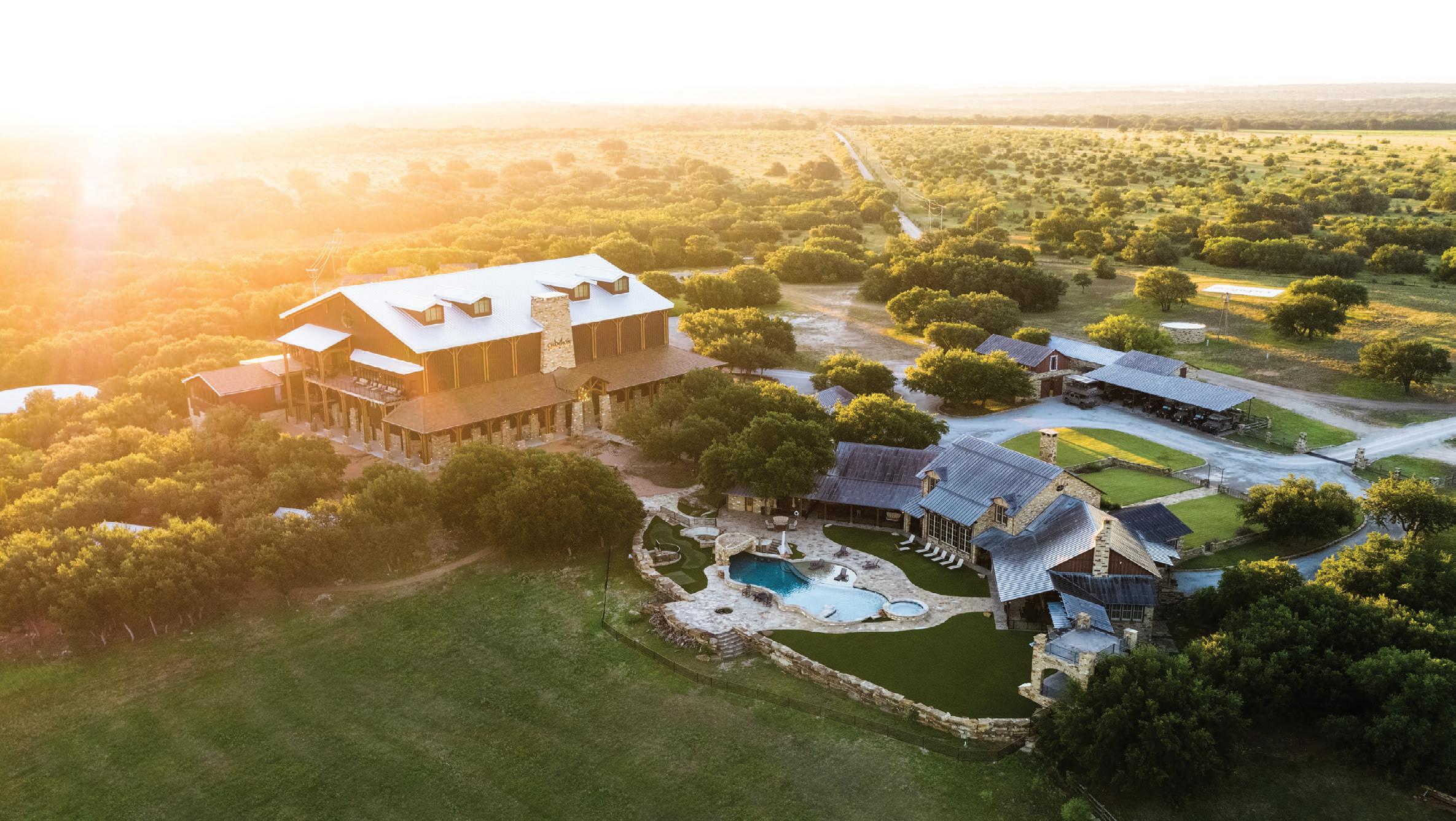
By JA mes stewA rt
I did my first backcountry hunt two years ago and was afforded the opportunity to experience the ups and downs of quality gear vs. cheap gear. Bottom line—more often than not, you get what you pay for when it comes to hunting gear. It’s definitely true when it comes to glass, clothing, boots and tripods.
I wrote about it back then and shared my adventure, which was most notable because my Danner boots failed me miserably on the first day of a seven-day backcountry Colorado winter hunt. A day of hiking in the snow and mud had me literally wringing out my socks while sitting in the snow on the side of a mountain. Thankfully, several hours and hot rocks from a campfire dried them enough to make the rest of the trip, but it nearly ended before it had even started.
That first night in my tent, I also shivered even though I was hunkered in a 10° down sleeping bag that rested on a high-end sleeping pad. All three items—boots, pad, and bag, were what most folks would consider better than average by brand name, so knowing your gear only comes with using it and knowing the proper way it should be used.
On that same hunt, the two professionals I was with each packed tripods for glassing, and now I understand why. I spent the better portion of the second day sitting on a ridge and doing my best to steady my binoculars so I could try and find game.
Packing a tripod into the backcountry when you have seven days of food and gear to take with you creates a weight/benefit ratio. For me, a tripod was not a necessity as I was a greenhorn hunting with two seasoned professionals.
But since that hunt, I’ve been in the market for a quality tripod and head. I’ve spent several days as a spotter for some shooting competitions, and having a reliable and steady rest is critical. At one of those competitions, the need for a tripod as a shooting rest also came into play.
Enter the Tricer line of tripods, heads and accessories.
What I have learned in my limited experience in backcountry trips is that size and weight come at a premium. The smaller the size, the lighter the weight, the more expensive the product will be. No matter if it’s cooking gear, sleeping bags, or actual pack frames, you get what you pay for.
When my two hunting professionals and I trekked 3.5 miles through the snow into the mountains of Colorado, having a quality and stable tripod was critical for them. They have a substantial amount of money invested in
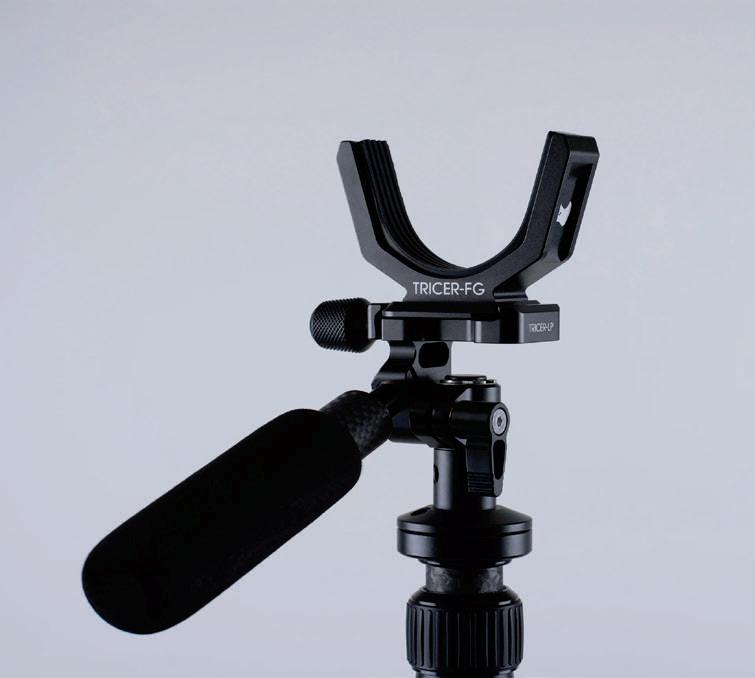
GUN REST—With the quick twist of a knob, the mount for your binoculars or spotting scope can be replaced by a rest for your rifle. Having that option makes a big difference if you end up needing a solid rest for a long shot and can’t find a tree or if the grass is too high for a bipod. The Tricer-FG is billet machined and can slip right in the proper mount for a quick change from scope to rest.
glass and gear.
Tricer has a trio of carbon fiber tripods, and thus far, I am impressed with the craftsmanship and quality. I topped the Tricer-AD with the Tricer-LP head and bino adapter on which to mount my Vortex XD range-finding binoculars.
The steady base provided by the inverted leg design is something I wonder why someone hasn’t done sooner. Putting the thicker, more robust portion of the legs at the bottom makes sense.
The ability to use the tripod from a seated position all the way standing makes it ultra-adaptable. The smooth panning and tilting of the LP head make scanning hills for animals a breeze, and the best part is when you look away, your binos or spotting scope stays in place.
The tripod, coupled with the head, tops the whole setup at just 38 oz. It’s firm and sturdy, and the more I use it, the more I like it.
The two other options in tripods include a shorter version that reaches only 40” in eight as compared to the 64” height of the AD model. There’s also one design made for heavier optics, like large objective spotting scopes or video cameras with heavier lenses and bodies.
I’ve not yet had enough time to really put them through the durability test, but already I can say that if you’re looking for quality gear, check out Tricer.—JS

The Tricer AD tripod allows the use of the tripod from a seated to a standing position and can even be adjusted to a prone position by swapping out the center post with the included short version.
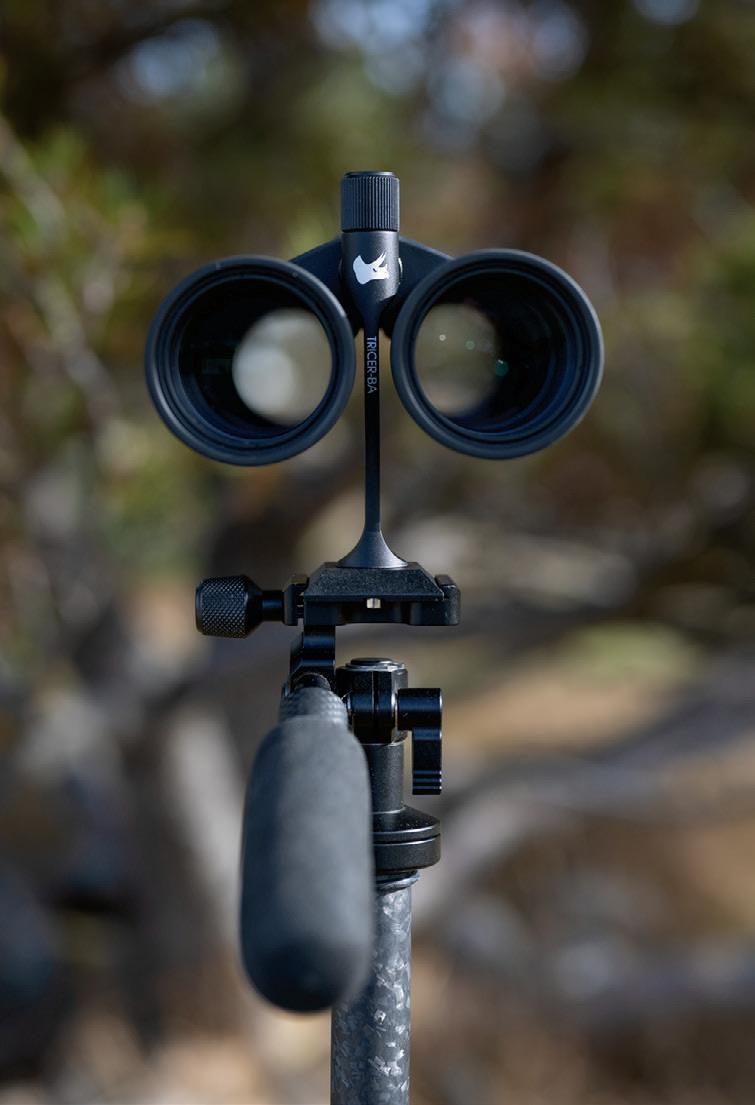
ticket for backcountry trips where weight is a premium.

Some hunt. Some barbeque. We do both. Mac’s has been a Brady institution and a favorite with locals and hunters alike for over three decades, serving up that slowsmoked, Central Texas style barbecue and Texas favorites that folks from all over –have come to love. Please come in, call-in or let us cater your next event.
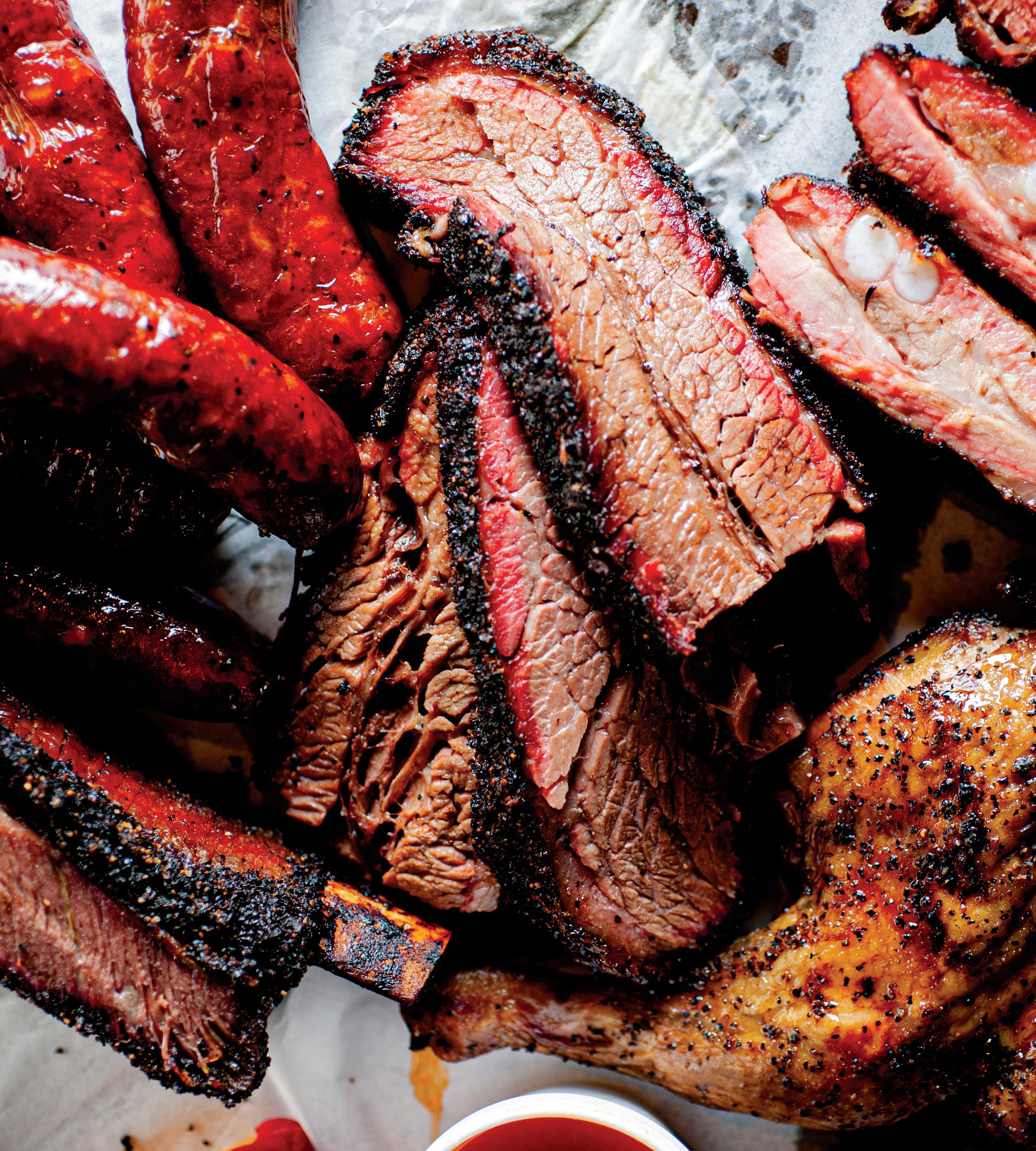

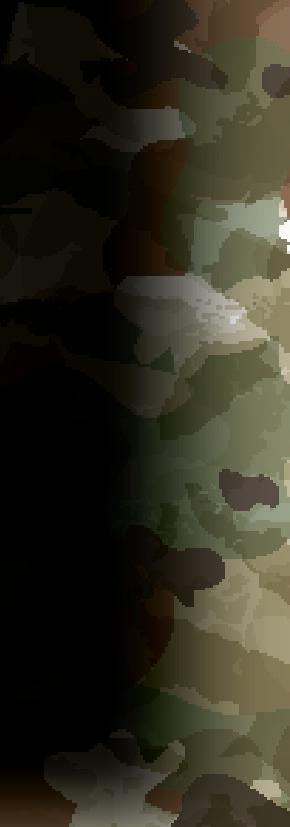
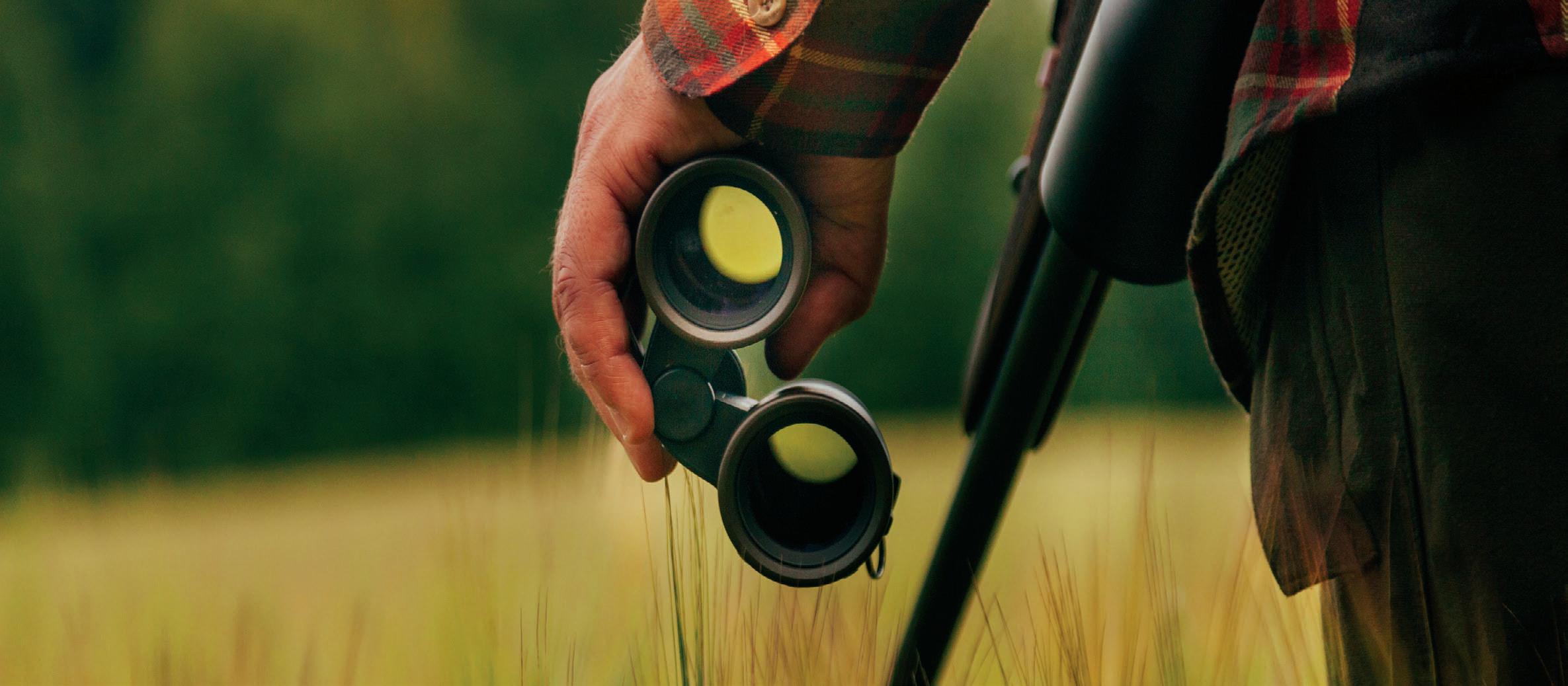
Safety is our number one concern for all of the hunters in our region. Whether you are from the local community or visiting the area, you can take comfort knowing that the healthcare services you need are right around the corner when you need them.
• 24-hour Emergency Care
• Behavioral Health
• Cardiac Rehab
• Clinical Laboratory
• Diabetes Outreach Program
• Diagnostic Imaging
- Ultrasound
- CT Scans
- MRI Scans
• Durable Medical Equipment
• Wound Care
• ESI injections
• EMS Transfer Service
• Health Education Programs
• Non Surgical Pain Management
• Laboratory
• Nutrition Services
• Physical Therapy
• Prescription Assistance Program
• Private Patient Rooms
- Accommodations for Patients’ Guests

2008 Nine Rd. | Brady, TX 76825 325-597-2901 | www.heartoftexashealthcare.org

• Pulmonary Therapy
• Respiratory Therapy
• Rural Health Clinic
• Recover Near Home Program (Swing Bed)
• Sleep Studies
• Specialty Clinic
• Surgical Services
- Endoscopy
- Cataract Surgery
AserviceofHeartofTexasHealthcareSystem
2010 Nine Rd. | Brady, TX 76825 325-597-2114
By JA mes stewA rt
For the small group of outdoors folks who bow hunt, technology and the latest gear are always a topic of conversation. It’s always been that way, and it won’t change anytime soon.
I know a couple of really experienced bow hunters. One is a professional hunting guide who spends more time in the field than most. He’s also capable of shooting effectively out past 100 yards with a bow.
I’ve spent the better portion of the past two Septembers in the mountains with him as he guides hunters on archery elk hunts. Most of the hunters come to camp with new camo, new packs, the latest ‘must have’ trinket, and new bows and arrows. There was this one guy who showed up one time with a mixed batch of arrows he’d picked up at a discount store, and I don’t think it’s a coincidence that he was the only hunter over two seasons to go home with an empty tag.
But one thing I found interesting is that the choice for broadhead use in hunting big game seems to be coming full circle. My father had Bear two-blade broadheads my whole life growing up. My biggest deer ever killed was a P&Y public land Missouri whitetail I harvested 1.5 miles from the truck while hanging from a tree. The broadhead I used was the Rage Hypodermic, an expandable broadhead that performed perfectly. Back then (2013), expandables were the trendy ones to use, and I won’t lie, my buck didn’t go 30 yards before falling over, and it looked like someone had poured a bag of blood all over the place where he fell.
But something I’ve heard when it comes to hunting bigger animals like elk is that a durable fixed-blade broadhead that flies true is the smartest thing to use. And that mentality is proving itself time and again.
“Focus on making a good shot and make them wear that broadhead,” was what one avid bow hunter used to tell me.
The sure thing about using a fixed blade is that there won’t be any excuses for blades not deploying. My older model Rage heads have small plastic retaining rings that keep the blades in position until impact. With a fixed blade, it’s not even a consideration, and I’ve even had several folks say their arrows fly better with a fixed blade than even with field points due to the aerodynamics.
Ironwill broadheads are some of the newer ones on the market. Talk among the guide world these days is that they are the
best, and apparently, the cost of them makes you hope so.
This September, we had a Texas hunter test the theory, and I must say I was impressed. He made a decent shot on a bull that was actually quartering to him, but that arrow and broadhead performed perfectly. Even with a moderate draw weight, that arrow nearly exited by the back leg.
But just because a broadhead is expensive doesn’t mean it will perform miracles. For that same hunter two days earlier, a hit high in the shoulder because the bull ducked the string kept the arrow from hitting any vitals, and the bull is likely still walking around recovering from his wound.
That second bull was hit a little farther back than ideal, but still, that little broadhead performed perfectly. The bull crashed and piled up less than 150 yards away, and if you have ever been close to a bull elk, they aren’t small. It’s all about shot placement. Period.
Not all of us can pull 80-pound draw weight bows that launch heavy arrows at blazing speeds. This guy was only shooting 64 lbs., and the arrow wasn’t long and heavy either. But it did get good penetration thanks to a solid and very sharp broadhead.
So, if you fancy a challenge, grab your

EFFECTIVE—The Ironwill broadhead is small, but effective. This blade dropped a bull elk with a single shot that nearly passed through the quartering bull.
bow and chase some pigs for practice. Those suckers are tough and will give you a good indicator of how your equipment will perform on something bigger like whitetail, axis, or even muleys or elk.
I’ll use my Rage Hypodermics unless I trade up to a new rig, but if I draw an elk tag for next year, you can bet I’ll be putting on a new set of fixed blades.—JS

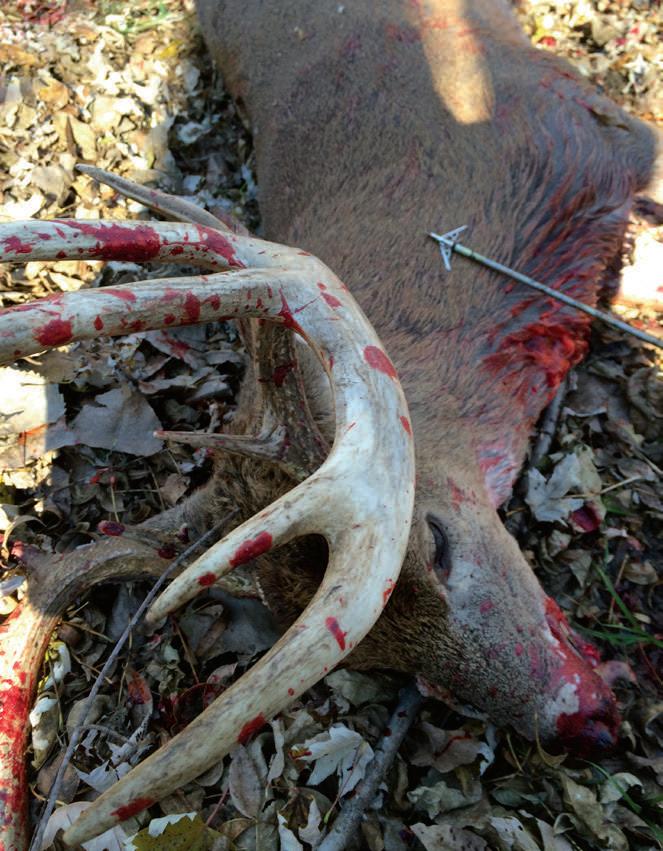
This first generation Rage Hypodermic did a number on my Missouri whitetail. While it wasn’t exactly where I was aiming, it was a ‘perfect miss’ because it sliced the jugular and the windpipe all at once and the buck didn’t go 30 yards.
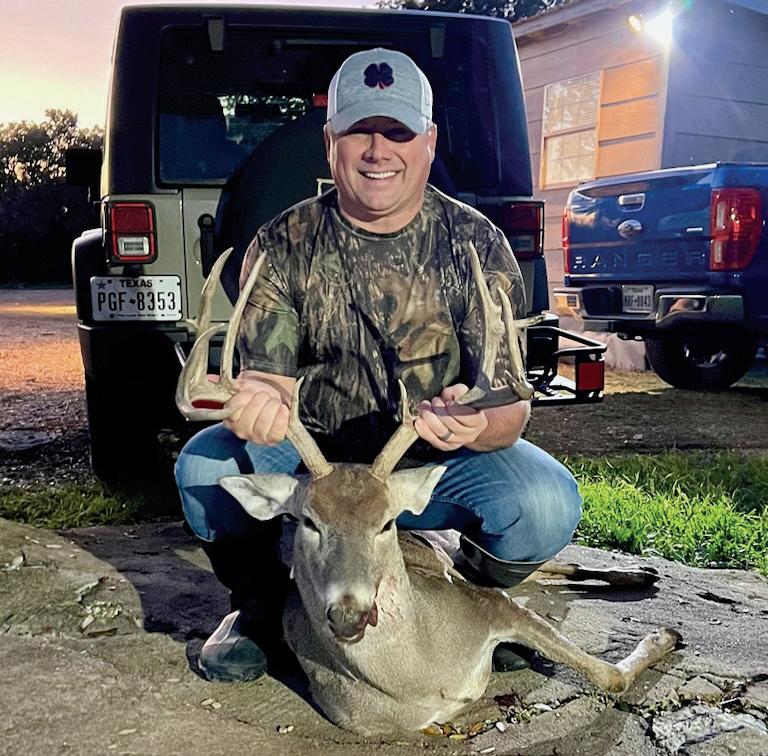
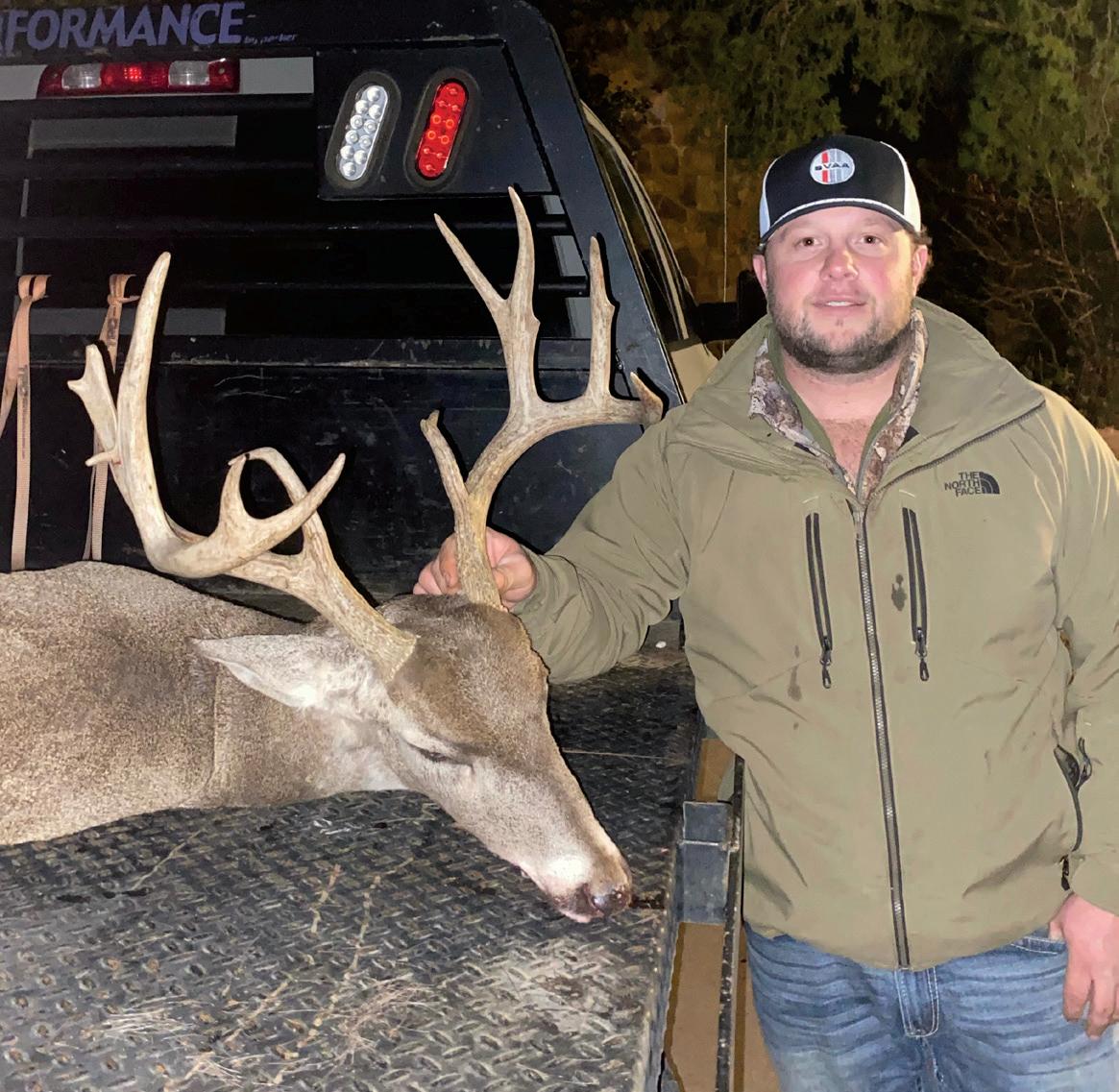

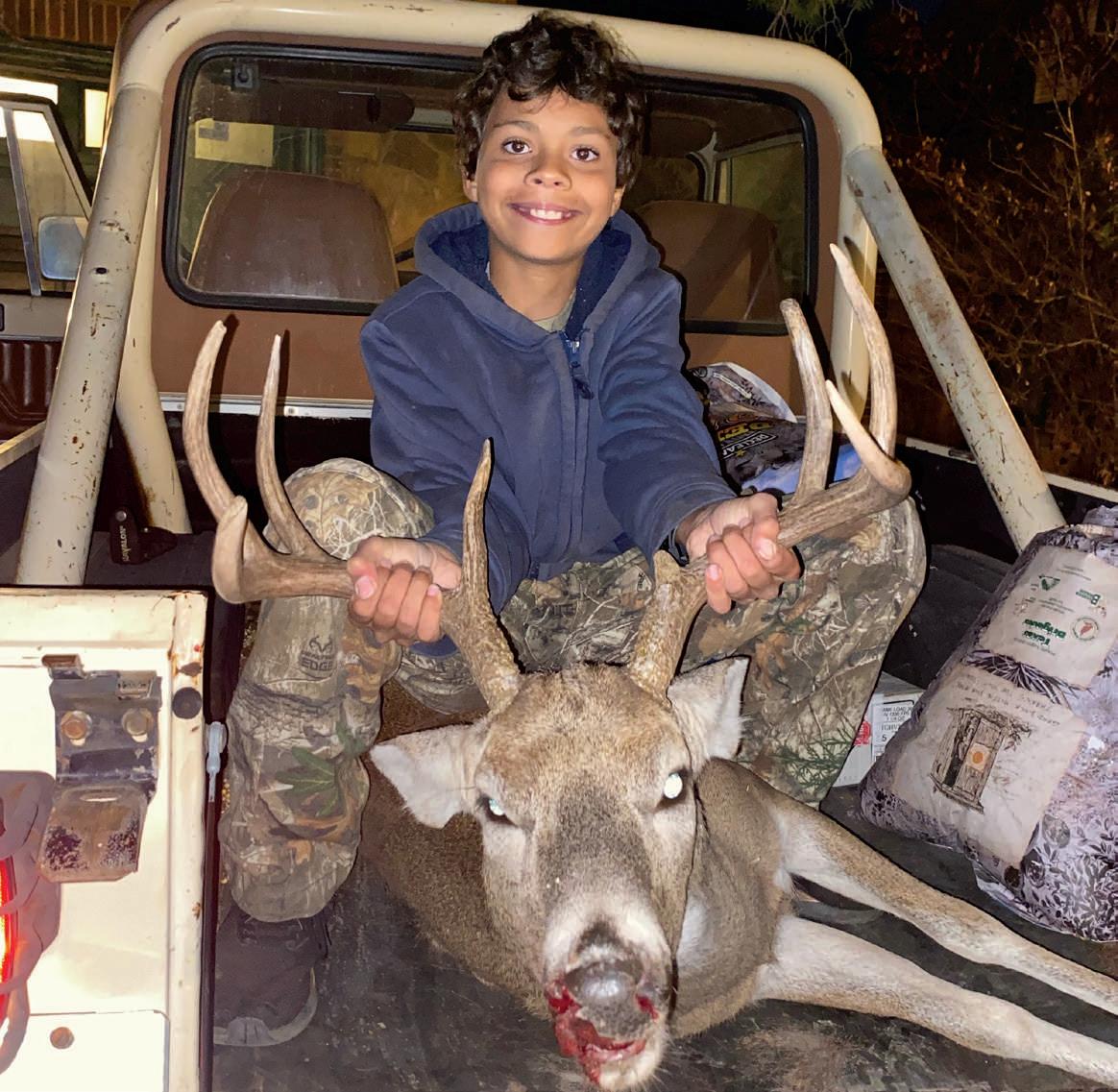

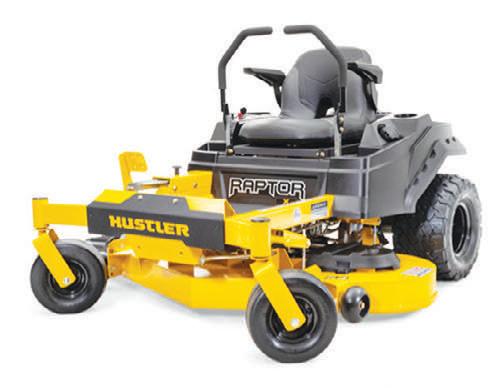

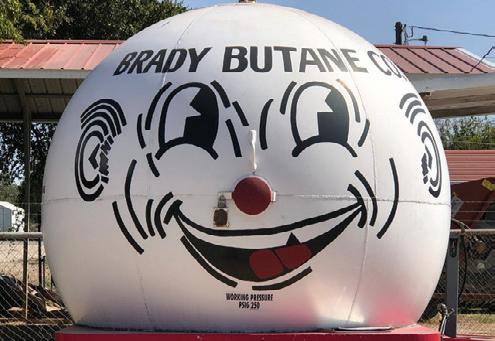

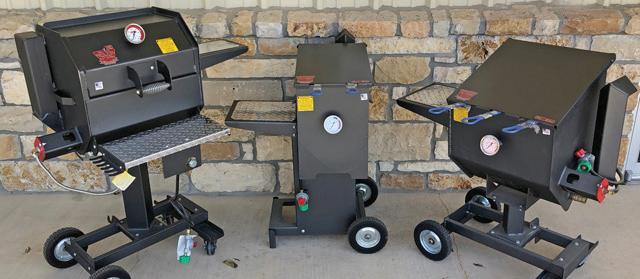
By JA mes stewA rt
I’ve been shooting pistols a lot over the past three years. Run and Gun competitions require pistol and rifle shooting to clear stages and depending upon the mood of the match director, they can be very challenging.
I used a Glock 17X without an optic for nearly two years before finally deciding what I really wanted. I settled on the Sig 220 DH3 and topped it with a Sig Romeo Pro red dot. A key element for me was the ability to co-witness the red dot with the fixed sights. Optics use batteries and it’s not ‘if’ its going to fail, but ‘when?’.
The red dot changed my pistol shooting accuracy almost instantaneously. Ever since, I’ve become much better at clearing timed stages and for the past few matches, I’ve managed to complete every stage. (Except for the time when my optic lost its zero mid-match for absolutely no reason and my co-witness ability was less than stellar). I still can’t figure out why the zero changed, but it happened without a drop, without a bump, and while the pistol was in the holster.

Shooting a red dot makes it easier. Period. But it’s an electronic and they will fail. The use of red dot sights on pistols and handguns has been gaining popularity among gun enthusiasts and professionals alike. After participating and being a range officer in more than 20 of these Run and Gun competitions, I can attest to their effectiveness. Red dot sights are designed to improve accuracy and speed in target acquisition, making it easier to hit targets in challenging situations. Following are some of the pros and cons of using red dot sights on pistols.
Pros:
ALMOST CUSTOM—The Sig Sauer DH3 topped with a red dot has become my favorite competition pistol. It’s a full-framed pistol and has aftermarket-style customizations that come straight from the factory. It’s ability to co-witness the red dot with the fixed sights was a key drawing point as was the crisp almost custom trigger.
1. Improved Accuracy: Red dot sights allow for better accuracy in shooting because they provide a clear and precise aiming point. The sight can be used to aim at the target with both eyes open, which helps in acquiring the target and maintaining focus.
2. Quick Target Acquisition: With red dot sights, it becomes easy to acquire targets quickly, especially in low-light conditions. The sight allows for faster target acquisition because the shooter can keep both eyes open, and the red dot appears on the target instead of obscuring it.
3. Better Sight Picture: Red dot sights on pistols provide a better sight picture than traditional iron sights. The dot is superimposed on the target, making it easier to focus on the target and align the shot.
4. Versatility: Red dot sights can be used on different types of pistols and handguns, making them versatile and easy to use. They can also be used in combination with magnifiers and night vision devices.
Cons:
1. Cost: Red dot sights can be expensive, and it can be difficult to choose the right one for your needs. It is essential to choose a reliable and durable sight that can withstand the recoil of the pistol.
2. Battery Life: Most red dot sights rely on batteries to function, and the battery life can vary depending on the model and use. It is important to keep spare batteries on hand, especially if you are using the sight for self-defense or tactical situations. But the solar option is catching up quickly.
3. Durability: Red dot sights are not as durable as traditional iron sights, and they can be damaged if dropped or mishandled. It is important to choose a sight that is durable and can withstand the rigors of daily use. Water resistance is another key option to consider. I’ve seen several optics fail after being submerged, or even just getting wet.
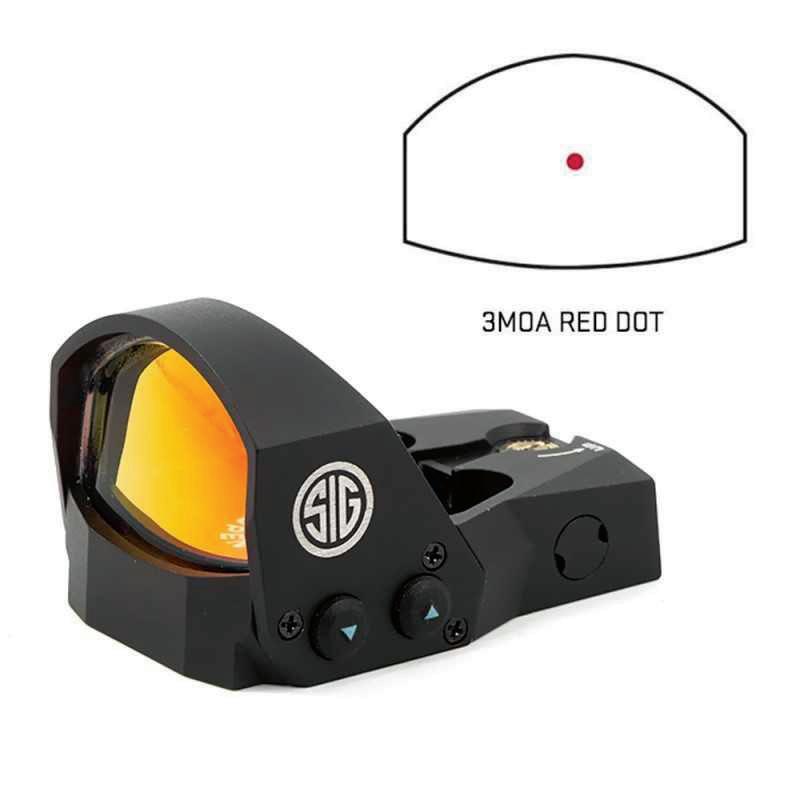
Summary:
Red dot sights on pistols and handguns can be a valuable addition to any shooter’s arsenal. They provide better accuracy, quick target acquisition, and versatility. However, they can be expensive, and they rely on batteries to function. It is important to weigh the pros and cons carefully before deciding which way you want to go. From there, do some research, ask some friends and make an educated guess. You’ll likely get a number of opinions from your shooting buddies, but ask the friend who shoots a lot and puts the gun through its paces. Ask someone in the Run and Gun community and you’ll likely get a better and more well-informed opinion because they put the pistol through some tough scenarios.

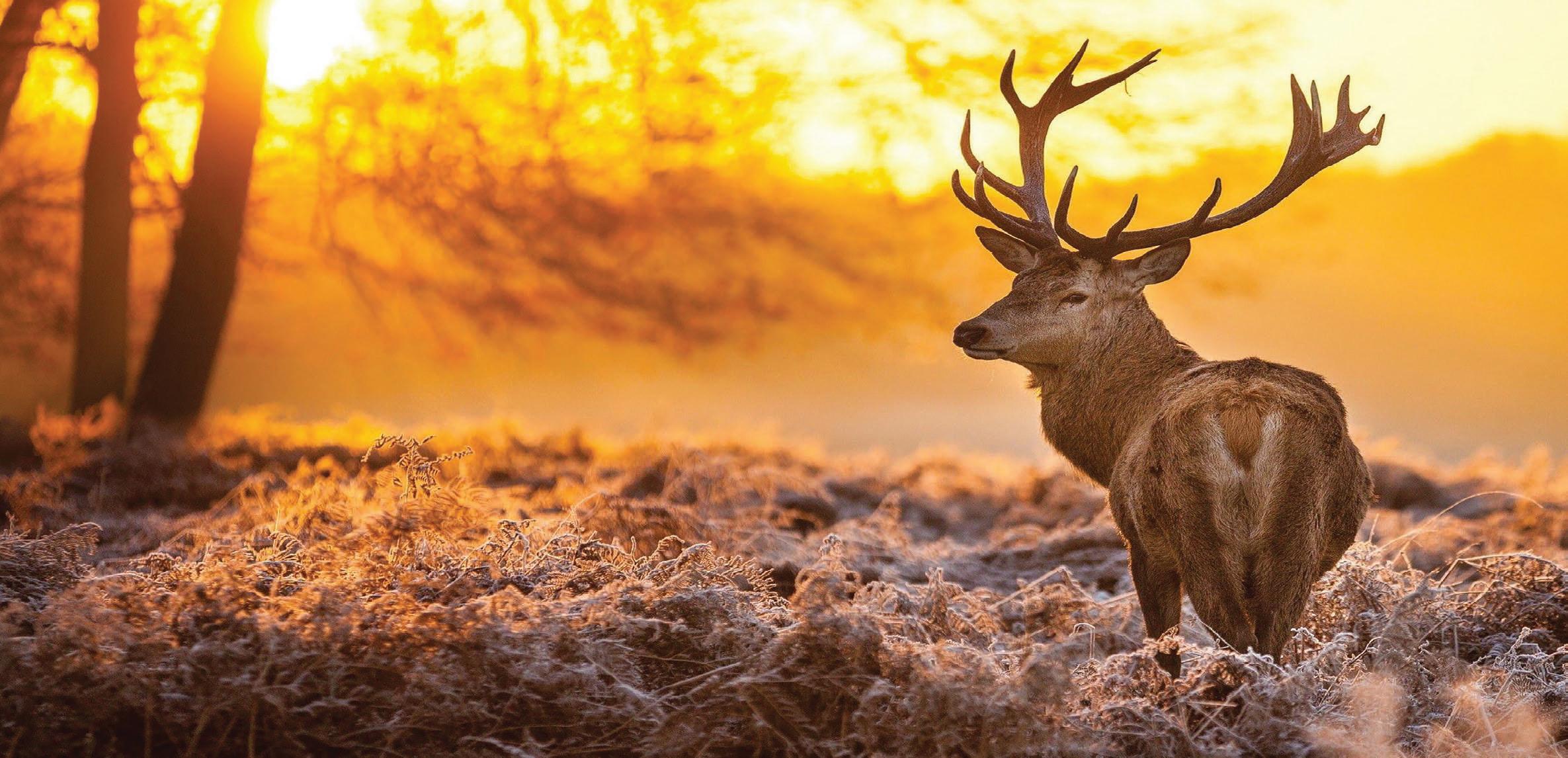

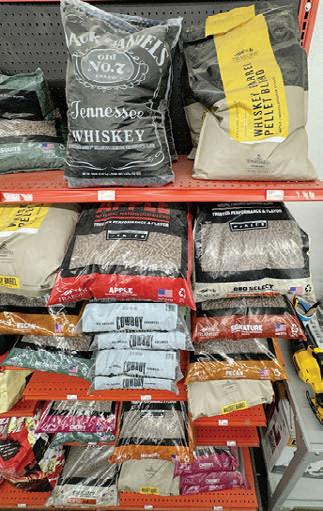




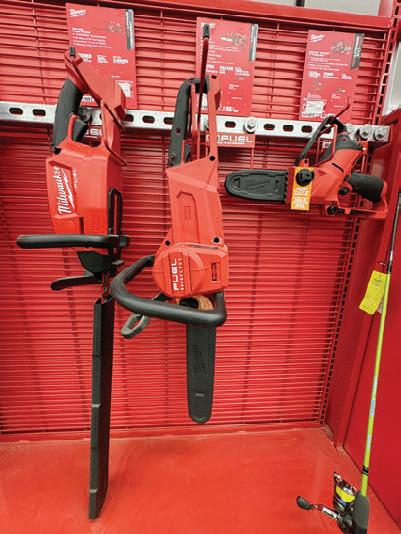
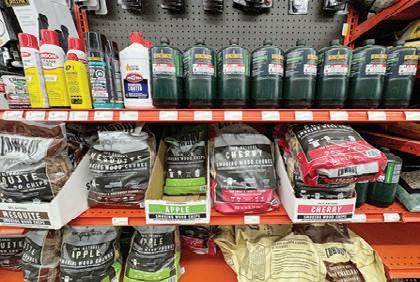

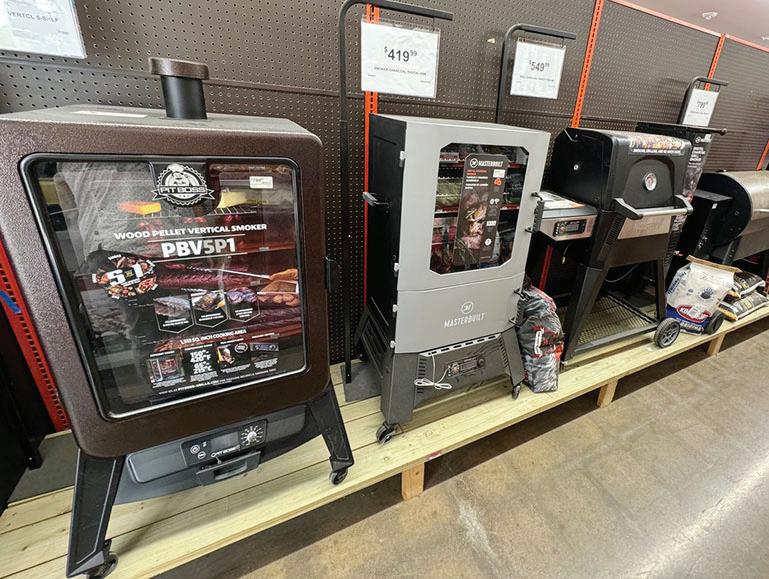

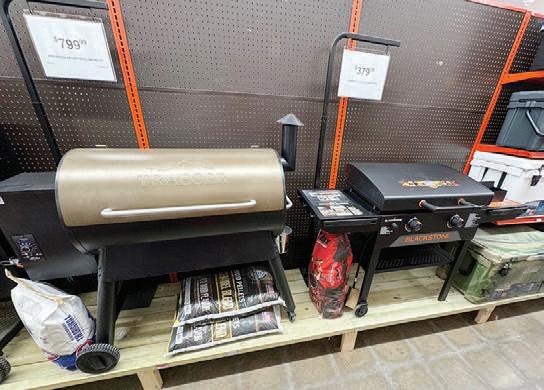

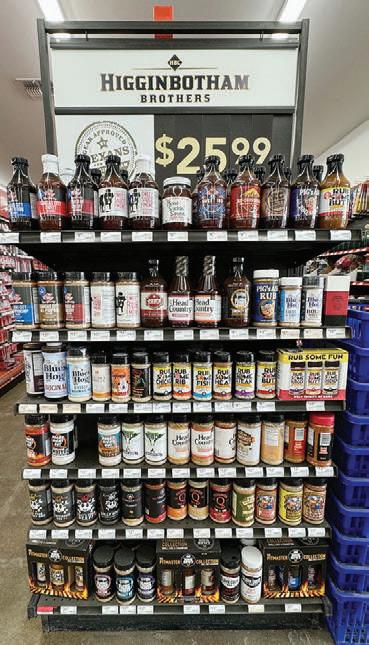
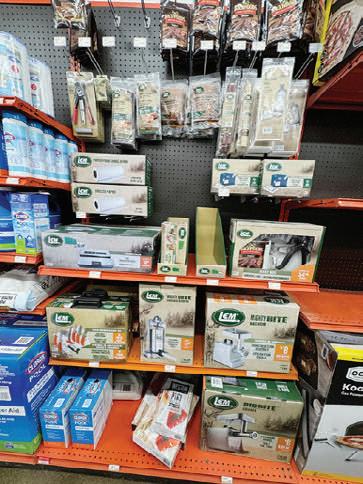

By JA mes stewA rt
I’m a big fan of Garmin devices. I love the data they record and the information they provide when out and about. I’ve owned Garmin watches for the past 10 years and after spending a few weeks in the mountains working with G3 Outfitters, I’m even more of a fan of the technology they have.
The older I’ve gotten, the more things I do that are not in reach of cellular service. Times aren’t like they used to be and you would check in upon your return from your adventure. I’ve had a family member not come home from an adventure and because of that, I’ve tried to be better about communicating with my family.
Earlier this year, my son’s hobbies of climbing rocks and fishing in the back county of Jackson Hole, WY, prompted me to gift him an InReach Mini 2 Satellite Communicator. I used it as a reason to get myself one as well.
It doesn’t happen every day or really every month, but there are several times a year when I find myself out of reach of cellular service. Having a way to communicate while there is no cell service is not only reassuring, but it’s built-in peace of mind and it’s one heck of a handy tool.
My InReach Mini 2 sat on my bedside table until I headed to the mountains of New Mexico in September for the archery elk season. As it turned out, I found a use for the Inreach Mini 2 in the first few days of the trip.
My head guide and his hunter arrowed a bull, and I was called in to help with the pack out. Many hands make light work when packing a 600-lb. bull elk from a couple miles back in the forest.

Here’s how it all played out. The guide sent me a location using OnX, another valuable digital hunting tool. That was where he wanted me to park. At the same time, he sent me his location via the Garmin Explore App. He used his Garmin satellite communicator to share his location with me via the app. I opened the location, clicked “go to,” and it created a path right to that location. Being a Garmin watch user, it gave me the option to send it to my watch and use that for navigation.
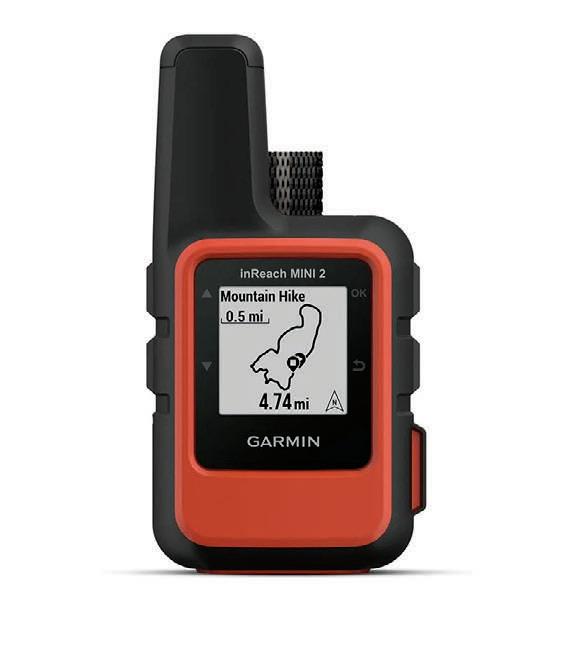
It worked like a charm. Using the combination of the Garmin Explore App on my phone and my watch it took me right to the exact spot. No confusing descriptions about draws, ridges, stumps or taking a left at a forked tree. I navigated right to their exact location. Having the ability to navigate to an exact spot—or back from one—is a time-saving and valuable bit of information to have.
As it turns out, when a dead bull elk is on the ground somewhere in the middle of the national forest, being able to call in reinforcements is quite handy.
Take that into a safety discussion, in a life-threatening situation, knowing you can summon help with the push of a button AND communicate with the folks on the other end is also comforting.
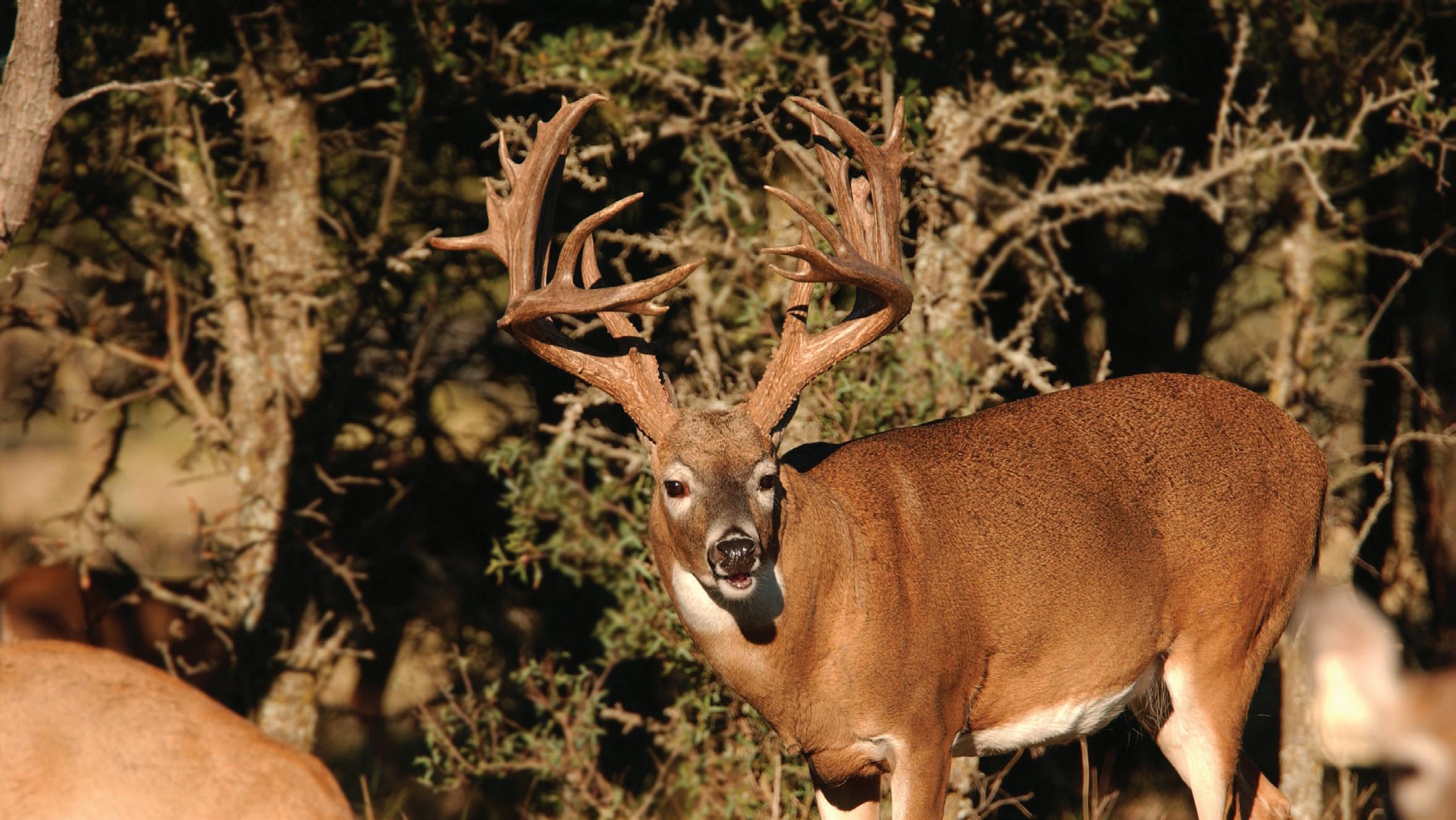


As with everything, there are costs involved, but having options is something that Garmin offers, too. I started with the basic emergency subscription but blew through the free ones and racked up $25 in charges during a 10-day hunt. So once I finally figured out how to change the subscription, I bumped up to the next level to help get me through the next hunt.
The good thing about the subscription plans is that you can pause them and re-activate them whenever you need to.
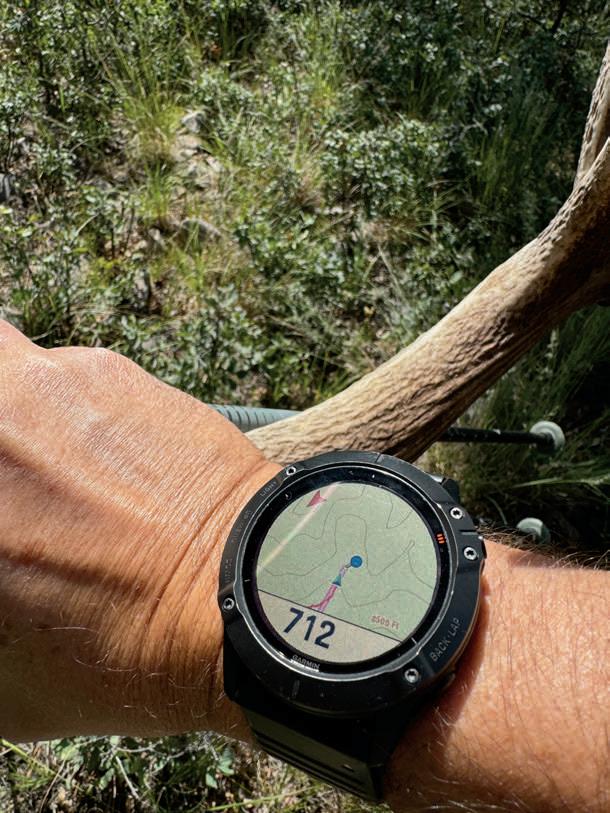
CONNECTED right to your Garmin watch, you can use devices to navigate to and from unknown locations.
And like everything, Garmin keeps upgrading their equipment. They just came out with the InReach which is a pod that essentially works like a satellite wifi. Connect your phone and you can send pictures, texts and the like. The subscription for that is considerably more, but that’s to be expected.
I’ll keep my inReach Mini 2 at the ready as I look for more opportunities to use it. Hopefully, with some luck, my schedule will include some backcountry trips, but even then, if I’m out and about here in Central Texas, there’s no guarantee of cell service, so for me, it’ll always be on my pack. It’s small, light and the battery life is substantial. I left it turned on for more than a week and
Here’s a short list of smart device tips to do before and at the start of your trip:
Check your subscription
Before you go, confirm your device is active on an inReach satellite subscription plan by signing in to your Garmin Explore™ account. From here, you can add or change your plan and find directions for syncing your device. An active inReach satellite subscription is required for tracking, messaging, account information syncing, weather forecasts, and SOS capabilities.
Turn your device on
While this may seem like an obvious action to take before starting a hike with an inReach satellite communicator, it often is the most overlooked. If an incident in which you are not able to communicate on your own occurs with the device turned on, your contacts can send a location request or — if notified by law enforcement — the Garmin IERCC (International Emergency Response Coordination Center) can check your last location within 10 minutes, determine coordinates and organize assistance.
Engage tracking
Tracking creates a breadcrumb trail as your location is automatically sent to your MapShare™ page via your Garmin Explore account, forming a defined path line of your activity that you can reference and share with your contacts. Note: Personal Recreation and Expedition plans include unlimited Track Points. There is a charge for Track Points on the Personal Safety plan.
Send your MapShare link
If you engage Tracking, take one more step and allow your contacts to follow along. MapShare is a website that allows others to see your location on a map. It is managed on the Social tab of your Garmin Explore account. Sharing your MapShare link with contacts at the start of your hike allows them to send you encouraging messages and follow your journey, creating another layer of safety as you progress toward your destination.






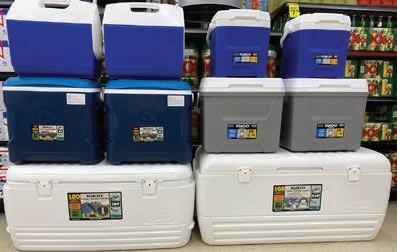






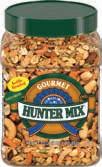

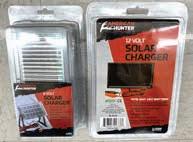
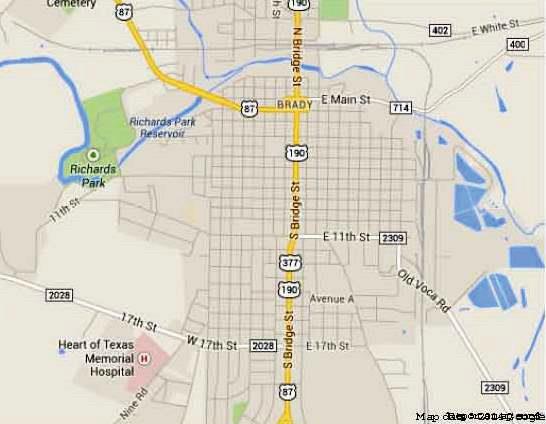

By JA mes stewA rt
When I went on my first elk hunt two years ago, I stopped at Cabelas on my way and purchased the cheapest game bags I could find. Sadly, I was able to return them on the way home from that hunt.
Having a new side gig working for G3 Outfitters, I’ve decided that there are numerous things that will become part of my hunting repertoire. Surprisingly enough, high quality game bags, and more specifically, Kuiu game bags, are at the top of the list.
Here in Texas, you most likely won’t need a game bag because for most of us, we drive our pickup or UTV right up to the animal and load it up to take it to the skinning rack. But if you have hopes of hunting big game out west, utilizing quality game bags will help you and your meat processor ensure you have clean meat packed in your freezer.
I learned something about Kuiu bags in particular that I would have lost a bet if you’d asked me. They are nearly indestructible. Here’s how I know.
Two black bears were harvested in the first few days of me being in elk camp. They were over-the-counter tags and hunting a water hole provided the opportunity for the hunters. I’d brought along a small chest freezer with intentions of filling it with self-processed elk meat, but the head guide bogarted the freezer and put a pair of bear skulls and hides in game bags and then froze them to keep them in good shape for the taxidermist.
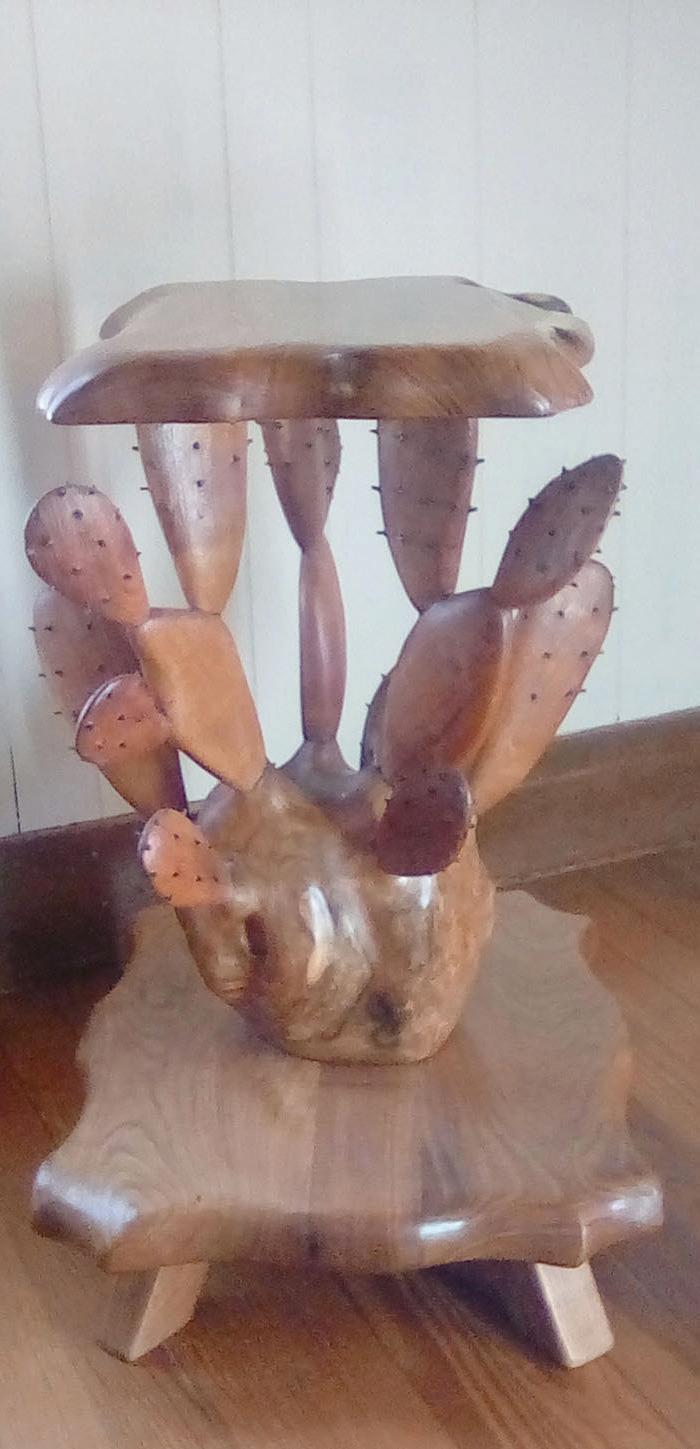

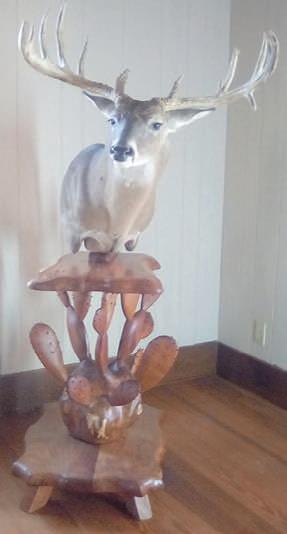

We had a limited time period to check the bears in with NMFG and as it turned out, the bears froze solid and it literally took all the strength of me and the guide to pry them from the freezer.
Both bears were in Kuiu game bags and by the time we finally pried them out, we’d tugged, pulled, strained and had darn near given up getting them out. We eventually managed only after breaking the freezer. But here’s the story—the game bags never tore, ripped, showed a hole—nothing. We literally pulled on the bags with all the grip strength I could muster and the bags never gave way. According

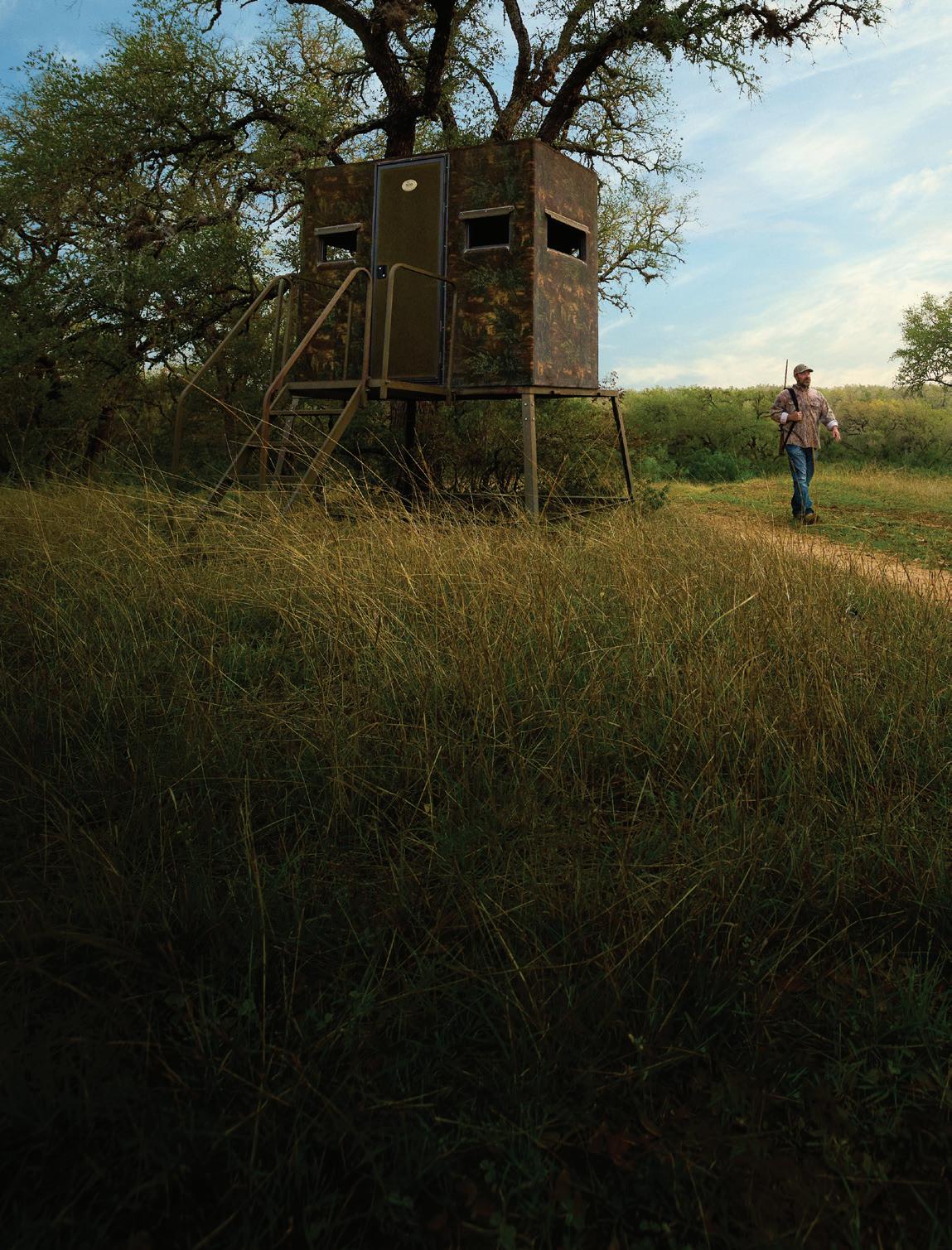


to the guide, who has been using them for several years, you almost can’t even cut a hole in them, but if you do, they still hold their own and won’t simply tear apart.
And after tugging them for a good 15 minutes with bear claws and teeth in them, I’ll stand behind that statement.
The best thing about them other than their durability is they are reusable. If you get the chance to use them more than once, they’ll pay for themselves over and over again.
The guide uses them because he packs out as many as six bull elk each season. The bags get a hose rinse, then go through a clothes washer and when they dry, go right back in the pack ready for the next time.
One bull we packed out had so much meat that three of us couldn’t carry it. The ‘extras’ bag was literally stuffed like a sausage so the lone hind quarter was hoisted into a tree for overnight storage until we could return the next day. Not a problem one.
There’s one thing I’ve learned thus far and when professional hunting guides choose a product and stick with it, there is a good reason. Whether it’s a pair of boots, a type of clothing or something as simple as a set of game bags, listen to the professionals.
I’ve helped pack out five elk and one mule deer in the last two years using these game bags. They live up to their reputation of being quality gear. Just for reference, we used the medium size and we packed out a good sized bull elk with it fitting perfectly in the bags.
www.kuiu.com - Here are the descriptions from the Kuiu web site:
Made with light weight, high strength, and extremely breathable nylon fabric, our game bags will protect your field-dressed game from debris and flies while allowing meat to cool and dry quickly. KUIU leveraged construction techniques from ultralight tent makers to improve the seams and closure points of our Quarter and Boned-Out Game Bags. Side panel construction eliminates the most vulnerable bottom seam and allows the bags to be shaped so they naturally match the curvature of a game quarter. Double needle felled seams are used throughout the bags to maximize seam strength. High visibility blaze orange side panels give a margin of safety when carrying meat and antlers on your back, while reflective webbing loops offer visibility in the dark.
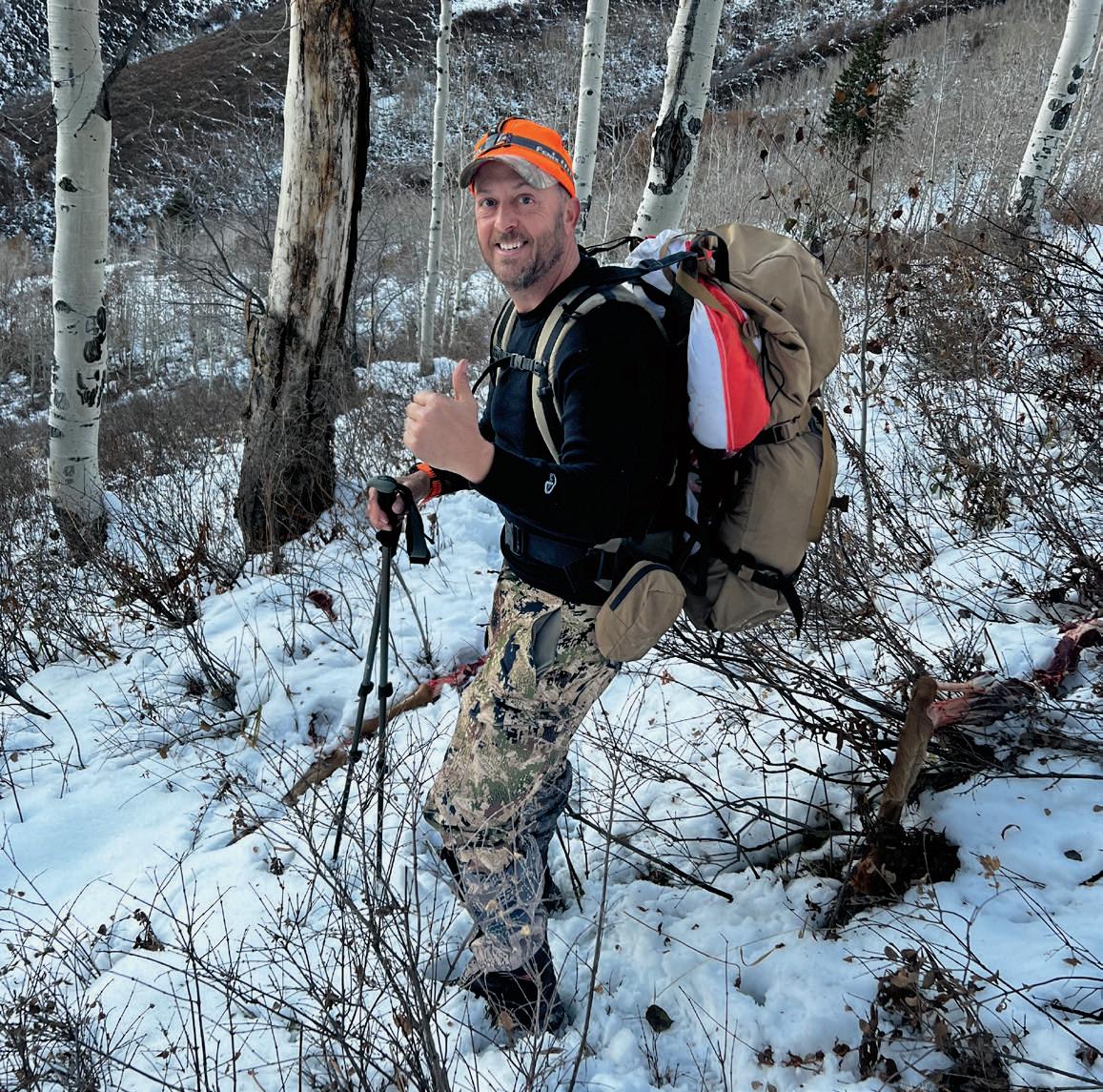
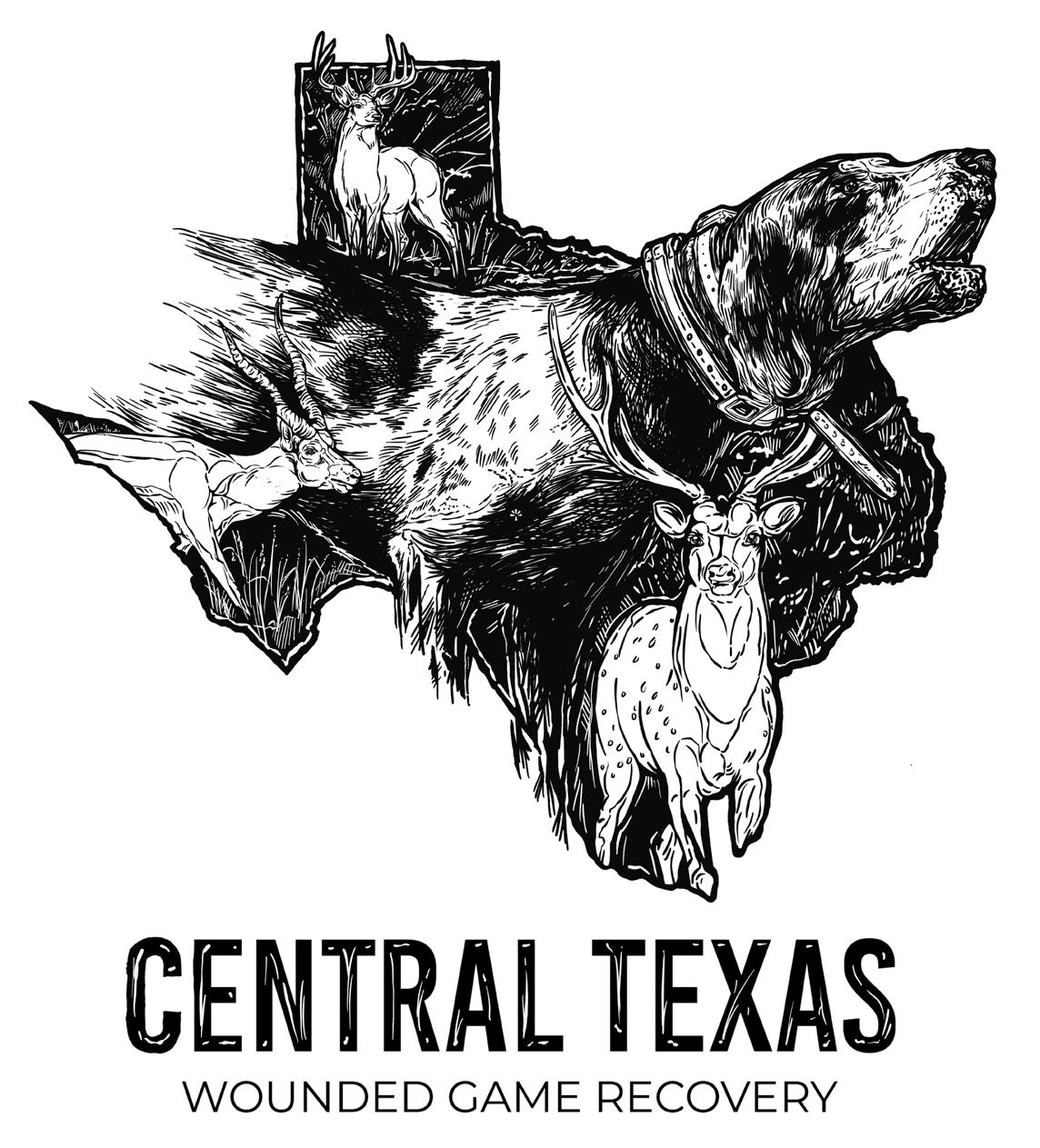
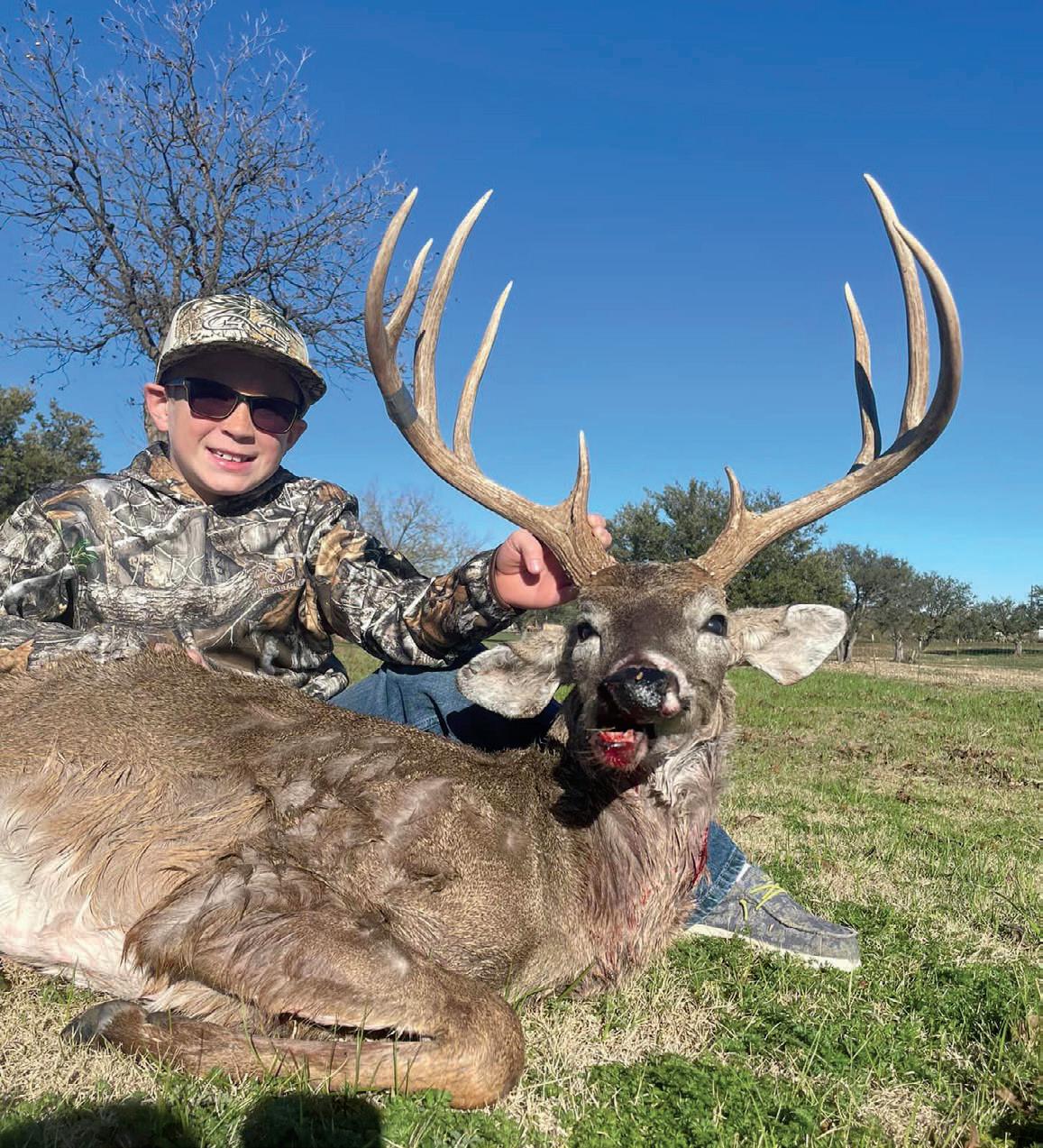

SIBLING

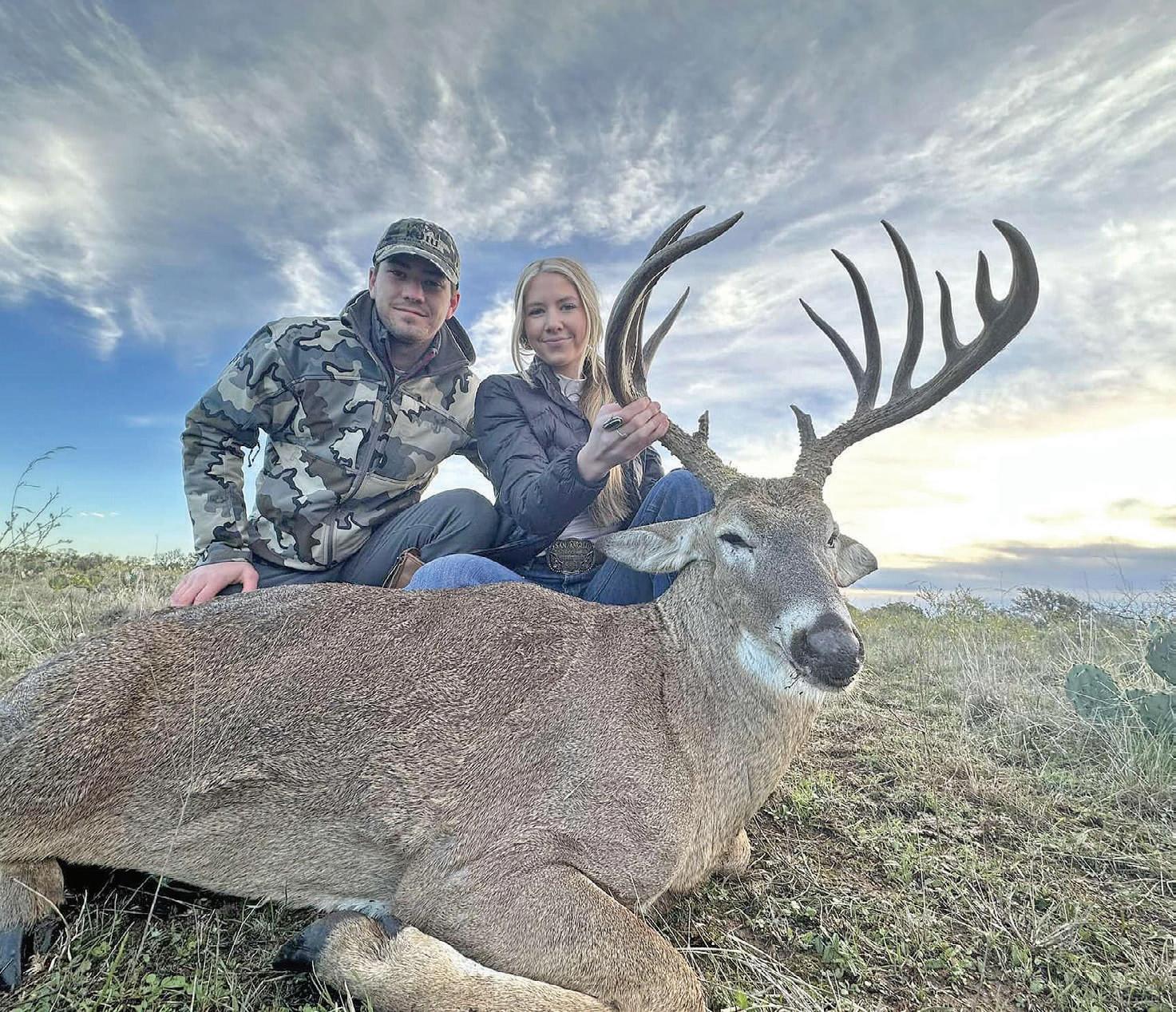
HOLIDAY HARVEST— Lili Appleton (above) had a successful whitetail deer hunt over the 2023 Thanksgiving holiday. She bagged her beautiful buck while hunting on the Brasada Ranch with her brother, Wade.
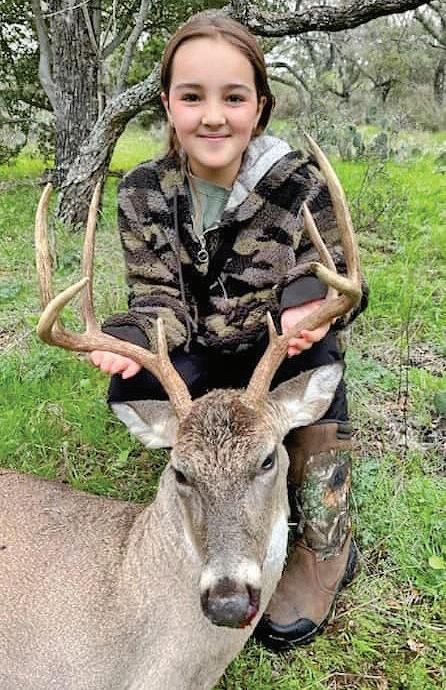
NICE ONE— Jacqueline Carrithers killed this buck on the Gray TV Ranch while hunting with her guide, Todd Haddock.


By JA mes stewA rt
In my life as a small-town journalist, I’ve often joked that I have a “license to be nosey” and that I “earn a living talking to people.” I’ve also likened myself to a unicorn—I’m a white, heterosexual, conservative Christian male who happens to make a living as a journalist.
It’s all true, although concerning the being nosey part—I try to be the exact opposite of your stereotypical news journalist.
I’ve had the opportunity to be a hunting guide at Head Springs Ranch in Menard over the past several years, but one trip last winter turned out to be something truly special. I had heard some of the particulars about some of the group’s guests, but didn’t know the details until just before they arrived. As it turns out, this group was finally making good on a hunt that had been planned for over three years, thanks to the pandemic and a variety of other setbacks. Everything was finally scheduled and the guest list was set.
As fate would have it, one of the original guests died unexpectedly in July 2023. His name was Cole Dismukes. He was 39 years old and had no prior health issues, and during a family outing on the river, he died of a massive heart attack. His brother, a firefighter/paramedic, was with him when it happened, and along with another medical professional, they were administering first aid within seconds of the incident, but it was to no avail.
Several months later, members of the original group asked Cole’s brother, Chad, and Cole’s father, “Poncho” to take Cole’s place on the hunt. I was given the privilege of being their guide.
Early on in our first interactions, I could tell the emotions were still very raw and that Cole’s passing was something that both were still dealing with. During our first evening in a blind, I began asking questions and trying to learn a little bit more about the whole situation and about who Cole was. Having heard the words “parents aren’t supposed to outlive their children” spoken by my grandmother at my father’s funeral, I told Poncho it must be one of the hardest things ever to bury a child. It’s just not supposed to happen that way.
A nice buck came to the field that first evening, but I knew the guys were holding out for a buck that Cole would have been proud to take. Poncho even said, “Cole couldn’t stop talking about possibly getting a 170-180 inch buck!”
I tucked that comment away, and that’s when I started secretly praying.
The more I was around this group, the more I began to understand the emotional connection they all shared with Cole Everyone on this trip was either a family member, co-worker, or close friend with him, and they all spoke very highly of him and his love for his friends, his family and for hunting.
I wanted this father and brother to harvest an animal that would exceed their expectations and be “the one” that Cole would have been proud to shoot. As a guide, I was praying that a buck would show up, which made me simply say, “That’s the one.”
In the hunting / guiding world, aging and field judging or “scoring” your quarry before you pull the trigger is important. I knew these guys wanted an animal in a particular size class, but making that happen is oftentimes a challenge.
We sat the next morning without seeing anything too exciting and then drove the side-by-side around, hoping to jump one during the late morning.
After some great food and a nap or two, we headed out for the evening hunt. We were dropping off another hunter and guide on the way to our blind, but as it would happen, we drove up on a shooter buck and that hunter was able to end his hunt before it even started!
Instead, they dropped us off at our blind, and our wait began. Bucks and does came and went. Things really started rolling as the light began
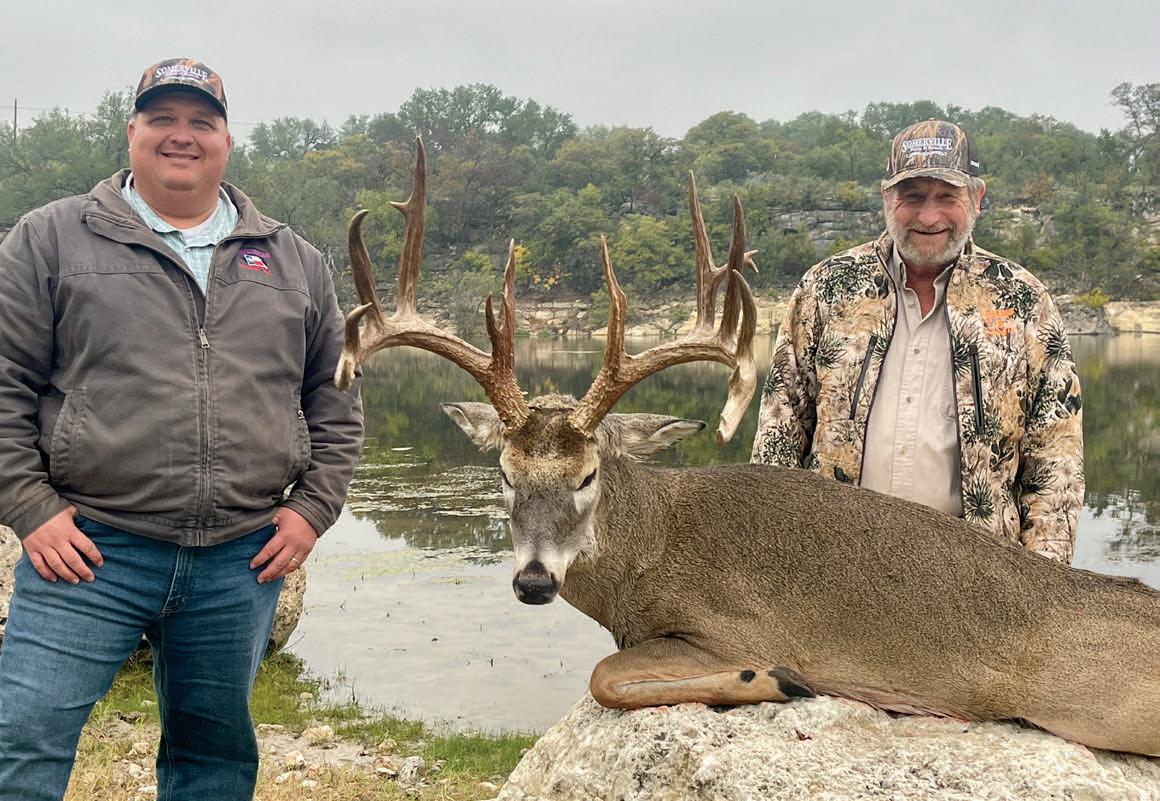
IN HONOR OF COLE— Chad and Poncho Dismukes got the chance to make some happy memories during a recent hunt on an area ranch. The hunt, originally set for their brother/ son Cole, was the next chapter in the family’s book of memories about their late family member.
to fade. Chad had rehearsed getting into shooting position, and the three of us were sandwiched in the blind with me in the middle. Chad spotted another bigger buck coming from behind the group out
See Nosey on Page 34
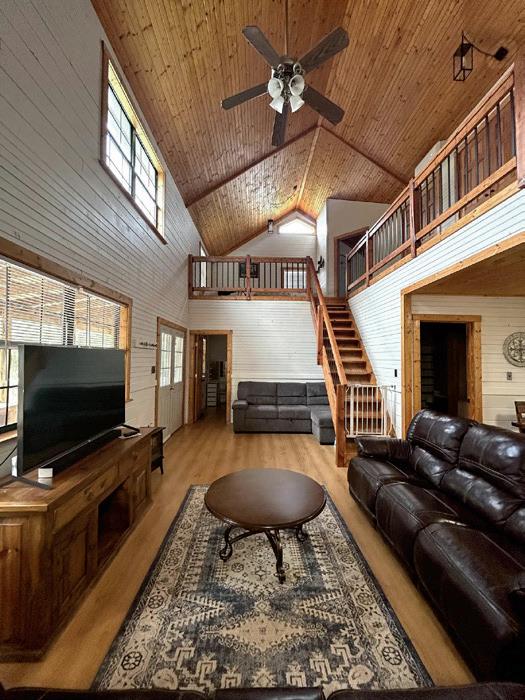
Entire cabin in Brady!
Sleeps 5 with accommodations for up to 8 guests, 2 full bathrooms. Family-friendly cabin centrally located in the Heart of Texas


Continued from Page 33
front, and as he lowered his binoculars, I raised mine.
“Get your gun,.” That’s all I said.
As it turns out, a second buck was coming in behind the one Chad had spotted. I saw one side of his rack, and as soon as I saw the other, I knew. This was a shooter.
Chad did exactly as we had rehearsed and got into shooting position. We communicated about which deer to shoot and began the back-andforth whispers about “when you have a clear shot”.
There were so many deer milling about it took a good minute or two before a clear shot presented itself. As soon as it did, the gun roared, and the buck jumped nearly straight up. We all witnessed the same thing and commented that we’d never seen a deer jump that high in the air.
As it turns out, using one of his late brother’s favorite rifles, Chad had made the perfect shot on a gorgeous 170-class buck. The deer disappeared behind a group of trees, and we waited a few minutes, but that’s all we could stand. I was confident of the shot, but until we rounded the tree where we’d last seen the deer and spotted it lying less than 20 yards away, there was the anticipation of whether or not we got him.
There was no ground shrinkage, and I nearly cried as we marveled at the gorgeous animal. High fives, big smiles, and jubilation were all part of some answered prayers.
As we recalled our recollections of the event, it was fun to hear the other two versions of what I witnessed. What I told them is that it had been a long time since I had buck fever, but this buck made it happen, and I wasn’t even the one shooting! As I peered through my binoculars as it all unfolded, I could feel my heart beating, and I struggled to keep the animal centered and in focus. I wanted my prayers to be answered—not for my sake, but for these men who were wanting to honor their loved one.
Back at the lodge, everyone gathered around and marveled at the
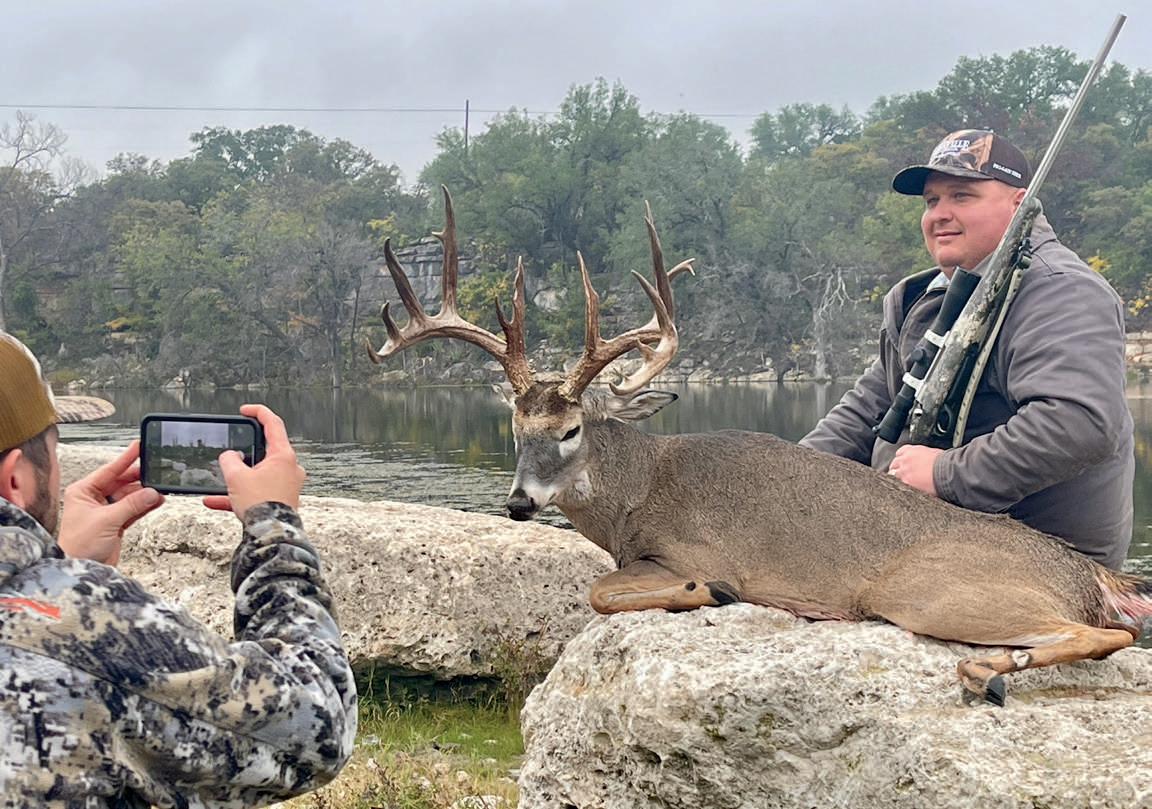
COLE’S RIFLE— Chad Dismukes poses for photos taken by his father, Pancho. Chad took the place of his late brother on this particular hunt, and using his brother’s favorite rifle and with his dad by his side, harvested this trophy buck fulfilling a lifelong dream of his late brother.
trophy. At some point over the next 12 hours, while recalling how it all happened, I shared with the group what I had been praying for. I’m convinced this was one of those times that my prayers were in line with God’s will, and it happened just the way I had hoped it would.
The weekend ended with 100 percent success, and from what I could tell, this group of hunters was leaving with happy stories to tell.
For Chad and Poncho, I’m quite certain there’s already a spot picked out on the wall where the deer will one day hang, and for them, maybe now they have some new happy memories to replace the sad ones of losing Cole.—JS



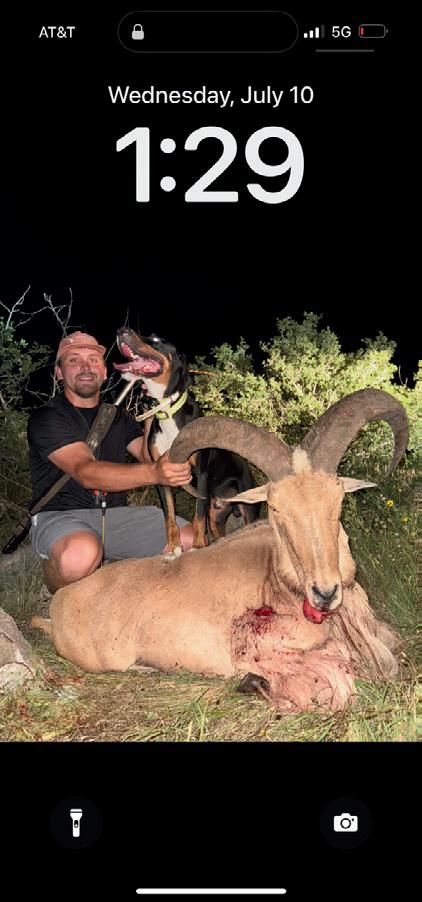
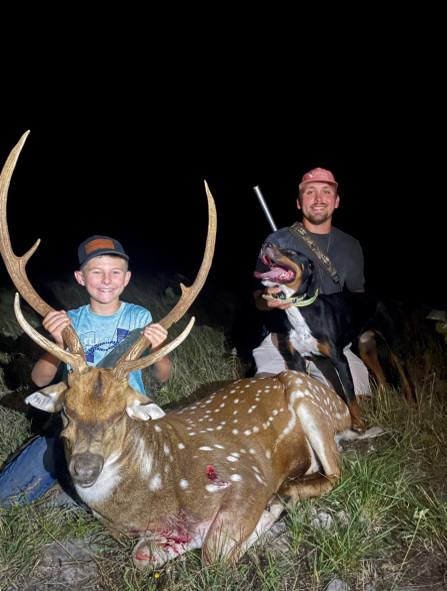







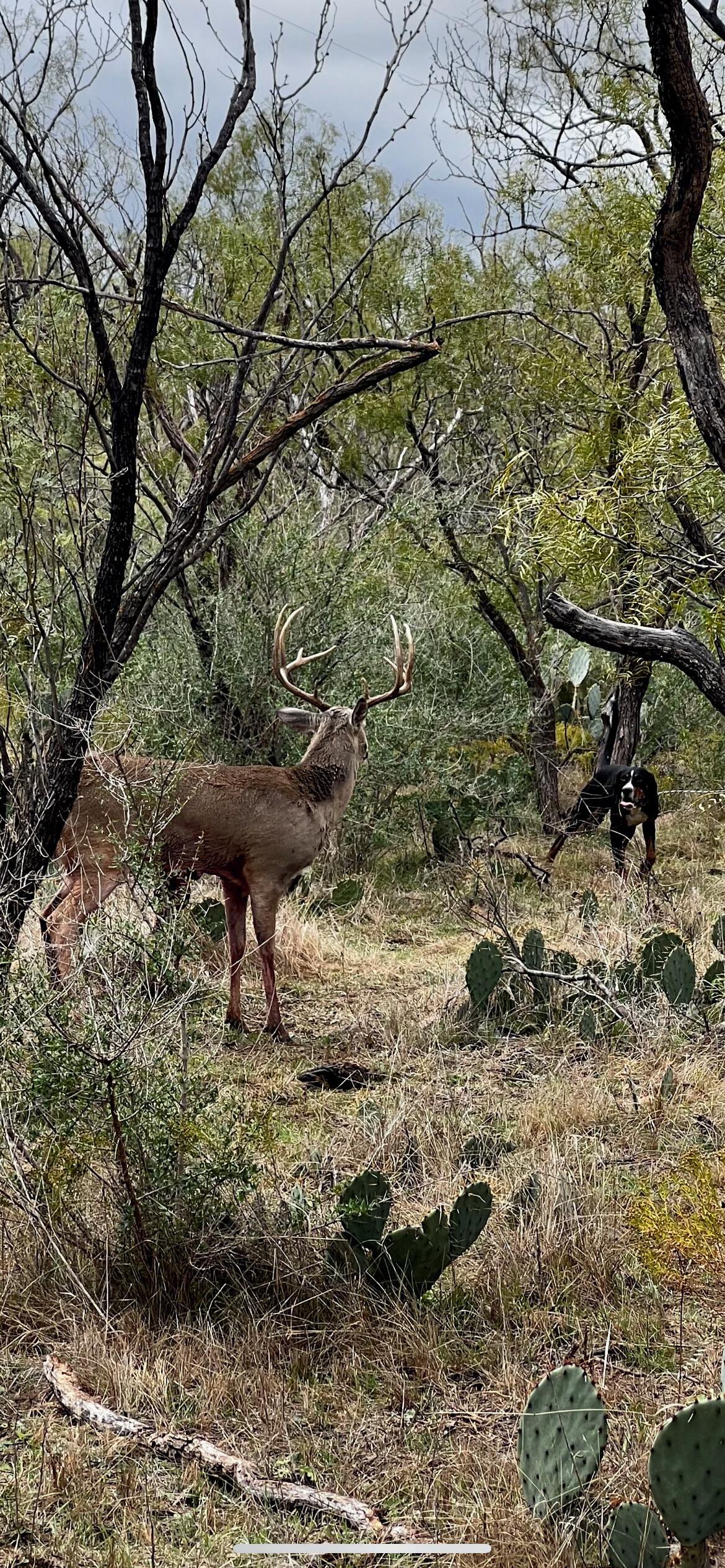

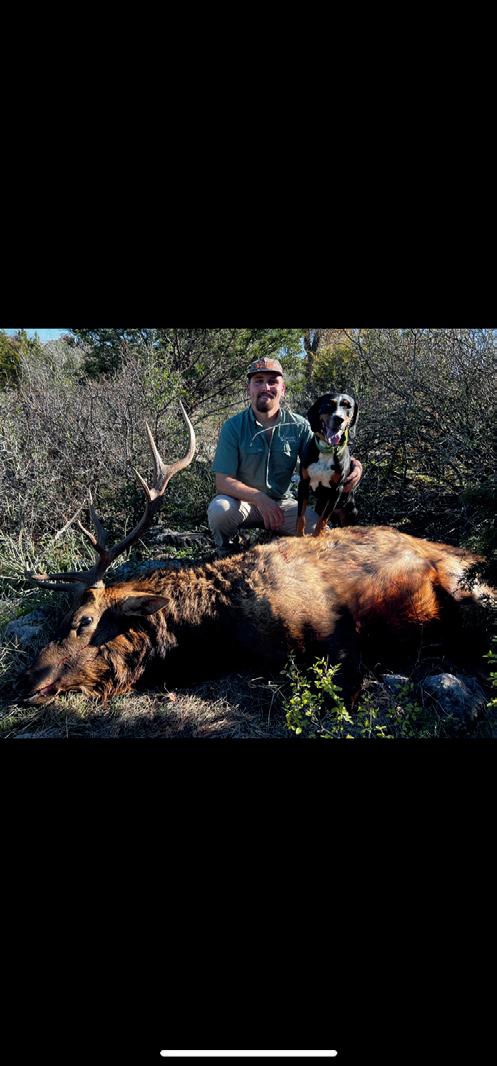


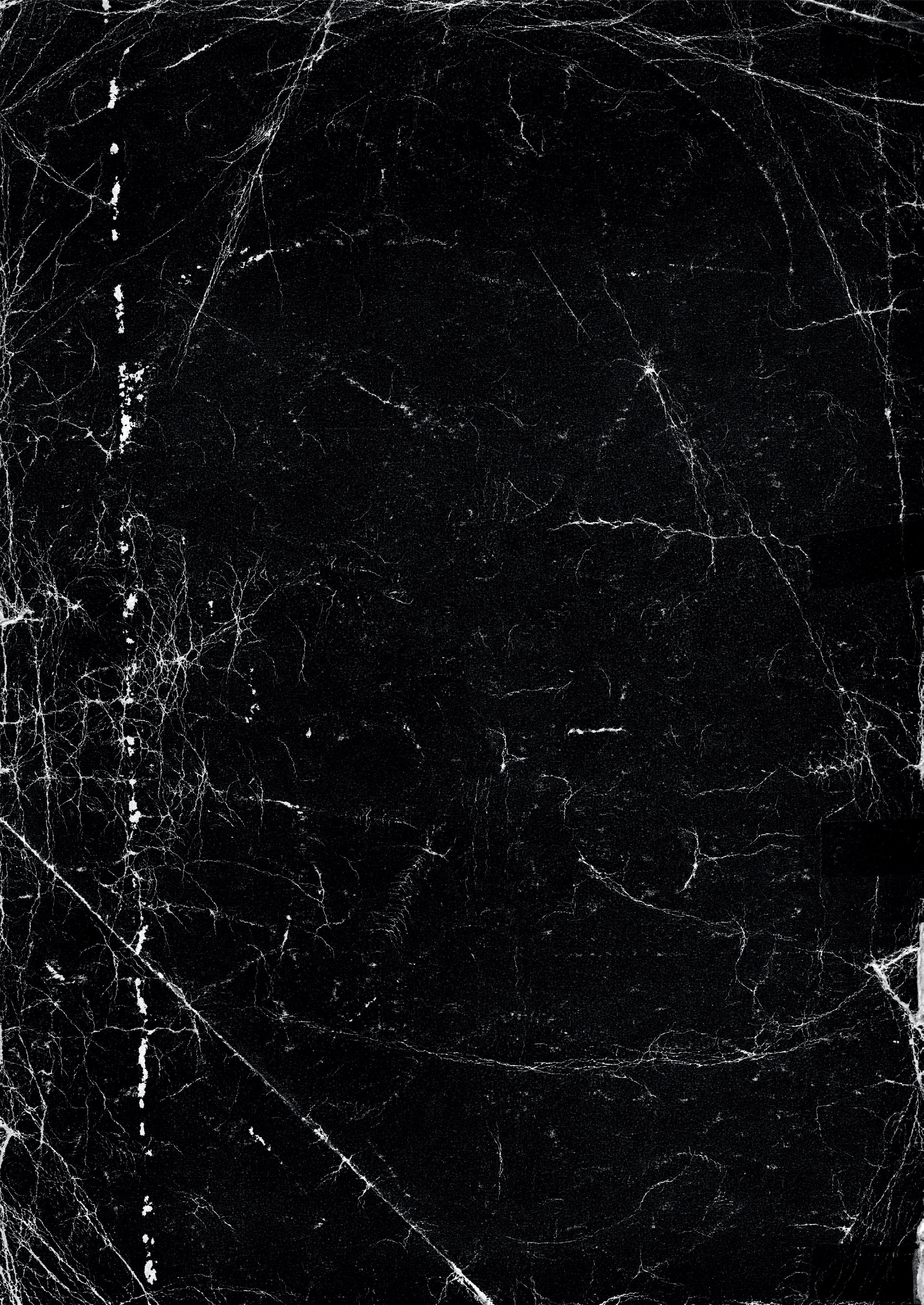

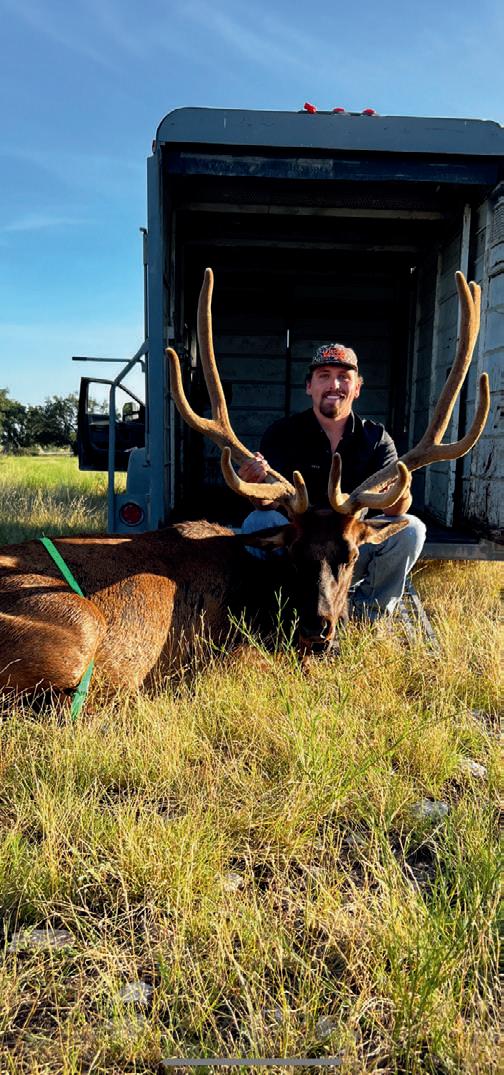

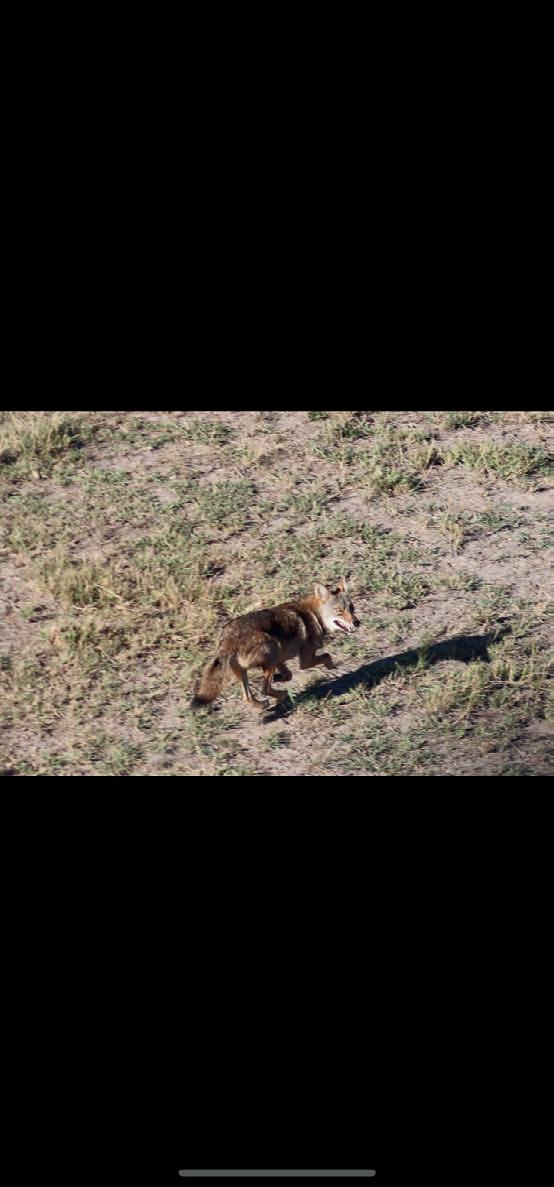

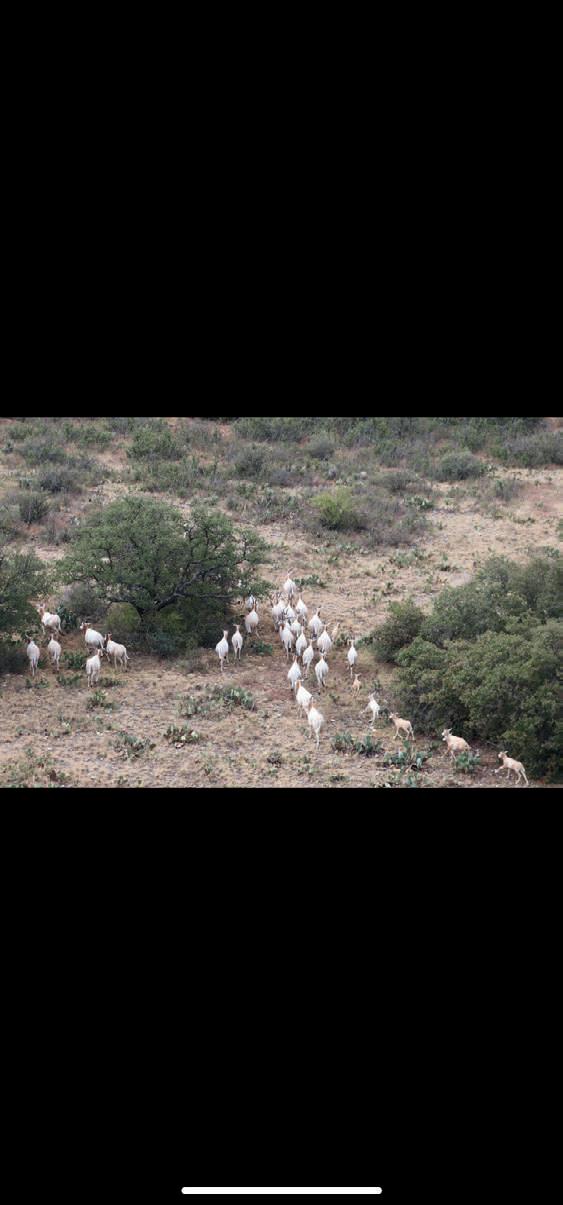
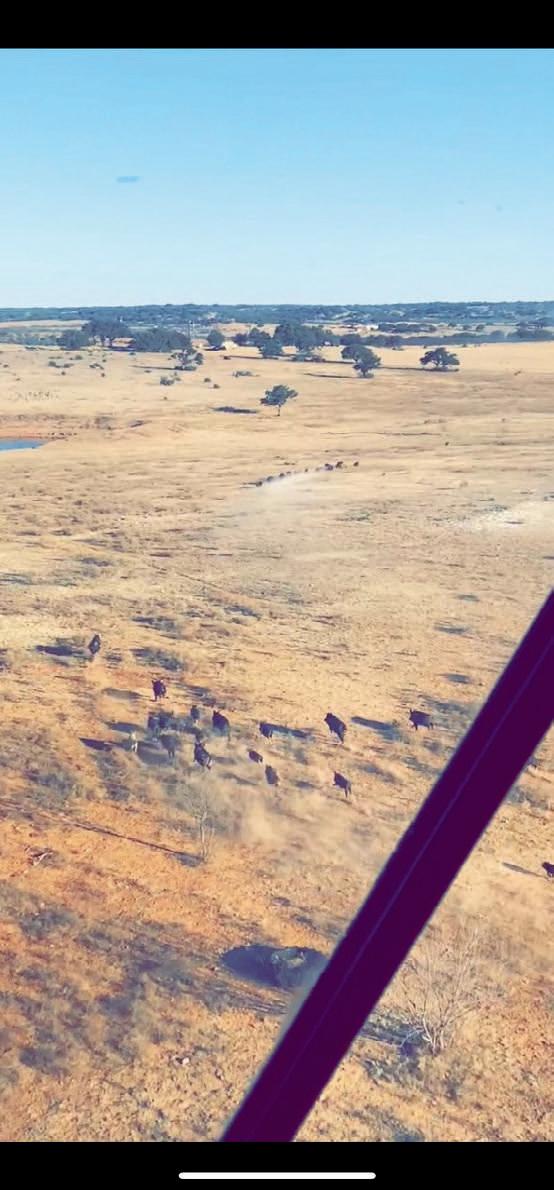
Health Mart PHArMACy
Try these tasty new recipes that are from the venison cookbook. These recipes are sponsored by City Drug of Brady.
Tamale-Style Venison Loaf
1 cup celery, finely chopped
1/2 cup Vidalia onion, finely chopped
1 green pepper, chopped
4 Tbsp. butter
1 Ib. ground venison
2 cans tomato sauce
1 cup yellow cornmeal
1 (No. 2) can cream-style corn
2 eggs, well beaten
2 tsp. salt
1/2 tsp. black pepper
1 Tbsp. chili powder
1 small can pitted ripe olives
Cook the celery, onion and green pepper in butter in a saucepan until tender. Add the venison and cook until venison is light brown. Add the tomato sauce and mix well. Stir in cornmeal, corn, eggs, salt, pepper, chili powder and olives and mix well. Place in a greased loaf pan. Bake for 1 hour at 350 degrees. Serves 4 to 6.
Jerry DeBord, Broker/Appraiser Office: 1402 S. Bridge • Brady, Texas 76825 325-597-4357 • 1-866-237-1145 • www.debordrealestate.com
E-Mail: jerry@debordrealestate.com
Persian Venison Meatballs
1 1/2 Ibs. ground venison, with 10% fat filler
2 med. cloves garlic
3/4 cup white onion, minced
13 oz. canned beef broth
1 tsp. salt, divided
1 Tbsp. lime juice
1/2 tsp. black pepper
20 oz. canned chick-peas
1 1/4 tsp. coriander, ground, divided
10 cups fresh, deveined spinach leaves
Mix ground venison, onion, 3/4 tsp. salt, pepper, and 1/4 tsp. coriander. Shape into sixteen 1-1/2” meatballs, approximately 3 Tbsp. of mixture to each ball. Sprinkle remaining 1/4 tsp. of salt on the bottom of a Dutch oven and heat over moderately-high heat. Add meatballs and cook for 5 minutes, turning once, until browned. Cover pot and cook until meatballs are no longer pink in the center. Place a colander over a bowl; pour meatballs and liquid into the colander and allow to drain. Return meatballs to Dutch oven. Skim fat from liquid and return liquid to Dutch oven. Add the remaining 1 tsp. of coriander, peeled garlic, beef broth and lime juice. Cover and cook over moderately-low heat for 15 minutes. Discard garlic. Stir in chick-peas and arrange spinach on top. Cover and cook for 5 minutes or until the spinach has wilted. Serves 4. (See more recipes on Pg. 38)
85± Ac.—Brown Co.— Scenic with good hunting and a metal cabin. It has rural water and some of the blinds and feeders will convey. PRICE REDUCED TO $624,995
3279 Acres - McCulloch County ~ One of the best trophy deer hunting properties available with high fence, hunting lodge, several tanks and excellent water. Call for details!
915 Acres - McCulloch County ~ One of the very best whitetail hunting ranches located in the Brady Mountains. It is game fenced with many trophy bucks and hundreds of turkeys. Improvements include a large 5 bedroom, 3 bath native rock home on top of the mountain overlooking the Lohn Valley, 6 car garage/shop, hunters lodge, guide housing, large barn, breeding pens, first rate blinds and many extras. This is a top of the line, well designed trophy hunting property with fabulous views. This indeed is a must see for the serious buyer. $4,000 per acre. 594 Acres - Concho County ~ Very scenic excellent hunting ranch with heavily wooded hills and valleys. Cover consists of large liveoaks, mesquite and mixed brush. It has a neat 3/2 home with a large covered porch, 2 wells, and a 30' X 40' metal barn. Frontage on a 4 lane highway about 30 minutes from San Angelo is a big plus. Abundant large whitetail, axis, turkey and quail. $1,200,000.00.
514 Acres - Menard County ~ Ideal family or corporate hunting property with nice lodge and 2 wells. This is located in the heart of good liveoak hills and valleys with excellent hunting. Very few available like this one. $1950 per acre.
407 Acres - San Saba County ~ Great hunting and cattle ranch with a creek, tanks, coastal and an abundance of wildlife cover. This low fenced property also has a beautiful 5 bedroom, 4 bath lodge or home, a large barn and a foreman’s home. It is very scenic with hills and valleys and ideal for recreation and livestock. $4,950 per acre. Reduced $4,250 per acre. Greatly reduced $3,750 per acre.
100± Ac.—McCulloch Co.— One of the most unique 100 acre properties in the Heart of Texas. Great for hunting and livestock. Also includes a 3BR/2.5BA 2-story home with tremendous views from the balcony. The huge patio with fireplace and barbecue pit are just right for outside enjoyment. Numerous ponds and scenic spots dot the wooded land-scape. Too many other amenities besides the travel trailer to list. A must see! $850,000
320 Acres -McCulloch County ~ Good combination property in mesquite country. Deer, dove, quail, and turkey do well with woods, fields and tanks. It has county road frontage and is game fenced on 2 sides. Only $1600 per acre.

200 Acres -McCulloch County ~ Tremendous small hunting and fishing property with scenic liveoak hills. There are two large dirt tanks and numerous header dams. Highway frontage with phone, electricity and rural water available make this a very desirable ranch. It has great homesites or campsites with good views. Just right for a family to enjoy. $2,750 per acre. Reduced to $2,500 per acre.
117 Acres -McCulloch County ~ Great small property that is game fenced and loaded with wildlife located next to Brady. With the live oaks, rural water and electricity, it would also make a good potential development area. Has a nice 2BR/ 1BA manufactured home on it. Don’t Miss This One! $3,200 per acre.
334± Ac.—McCulloch Co.— Great hunting and livestock property. Live oaks, mesquites and mixed brush provide good cover for deer, turkey and quail. There are 2 wells (not working presently), a reservoir and one pond. A 90 ac. field of improved grass provides additional grazing for livestock. Only $3,450 per acre
100 Acres -McCulloch County ~ Hunters paradise with thick native cover, high hills and rugged country. Surrounded by large ranches. Located at the end of a country road in the Voca area. Well with solar pump and small dirt tank. Some minerals will convey. $2,900 per acre. Call to View!!!!!!!!!!!


Continued from Page 36
Swedish Venison Meatballs
1 lb. ground venison
2 1/4 cups whole milk
2 Tbsp. white onion, finely chopped
2 eggs, slightly beaten
1 tsp. salt
4 cups cornflakes
1/8 tsp. black pepper
Place the ground venison in a bowl and add the onion, salt, pepper, 1 1/4 cups milk and eggs. Roll cornflakes into crumbs and add to ground venison mixture. Mix thoroughly and form into balls. Saute in butter in a skillet over low heat until brown and remove from skillet. Add remaining milk to the skillet drippings and heat through. Pour over the meatballs. Serves 4 to 5. *
Venison Pepper Steak
1 medium onion, sliced
1/4 cup soy sauce
1 green pepper, sliced
1/2 cup Venison Soup Stock or canned beef broth
1/2 lb. mushrooms, sliced
2 Tbsp. butter
1 tsp. tomato puree
1 1/2 Ibs. venison steak, cut 1/2”+ thick
1/3 cup cold water
1/2 tsp. garlic powder
1 1/2 tsp. cornstarch
2 Tbsp. butter
boiled rice
Saute onion, green pepper, mushrooms in butter and remove from pan. Saute venison and garlic in butter until meat is medium rare. Mix soy sauce, Venison Soup Stock, and tomato puree in a saucepan and bring to a boil. Thoroughly mix cornstarch with cold water and slowly stir into boiling liquid. Add cooked vegetables to meat. Pour sauce over vegetables and meat. Simmer until tender. Serve over boiled rice. Serves 2 to 4. * * *
French Onion Venison Roast
1 (3-lb.) boneless venison roast
6 small potatoes, halved
6 med. onions, halved
2 cloves garlic, chopped
2 bay leaves
1/8 tsp. Tabasco sauce
1/4 tsp. pepper
2 cans French onion soup
boiled rice
In a 6-qt. crock pot, add venison roast, potatoes, onions, garlic, bay leaves, Tabasco sauce, pepper and
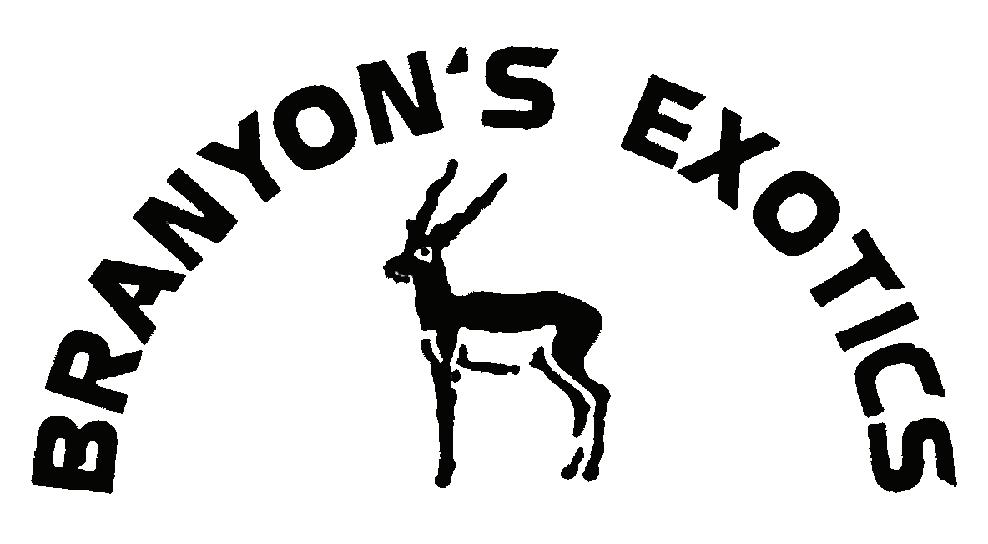
French onion soup. Set heat control on low. Cook for 8 hours. Serve over boiled rice. Serves 4 to 6.
Poppy Seed Venison Pot Roast with Sour Cream Gravy
1 tsp. canola oil
1 (4-lb. to 5-lb) venison roast
2 cups water
2 1/2 tsp. salt, divided
1/4 tsp. pepper
2 tsp. poppy seed
1 lb. carrots, cut into pieces
1 can peas, drained
1 Tbsp. all-purpose flour
4 Tbsp. cold water
1 tsp. paprika
1/2 cup sour cream
Heat the oil in a Dutch oven and brown the venison roast well on all sides. Add the water, 1 1/2 tsp. salt, pepper and poppy seeds and cover Dutch oven. Simmer for 3 1/2 hours and remove. Place the carrots in a saucepan and drain enough of the liquid from the Dutch oven to cover carrots and bring to a boil. Simmer until carrots are done and place them into the Dutch oven. Add the peas to the Dutch oven. Heat liquid to boiling point. Thicken with flour mixed with water and season with the remaining salt and paprika. Remove from heat, add sour cream and mix well.
Remove roast and allow to rest 10 minutes before slicing. Serve sauce with roast. Serves 2 to 4.
* * *
Pot Roast of Venison with Vegetables and Burgundy
1/8 tsp. thyme
2 bay leaves
2 strips lemon peel
salt
10 peppercorns
2 cups Burgundy
2 cups water
1/2 cup sour cream
1 venison haunch or backstrap
salt pork
3 med. yellow onions
4 carrots
2 small turnips
4 stalks of celery
parsley
1/8 tsp. rosemary
Trim venison. Generously lard venison with salt pork. Place the vegetables, spices, burgundy and water in a large Dutch oven, bring to a boil and simmer for 30 minutes. Add venison and simmer for 2 hours. Remove the venison, strain and reserve the pan liquid. Place the venison in a covered roasting pan. Pour the reserved pan liquid over the roast; add sour cream. Cook slowly 2 to 4 hours or until tender. Serves 6 to 8.
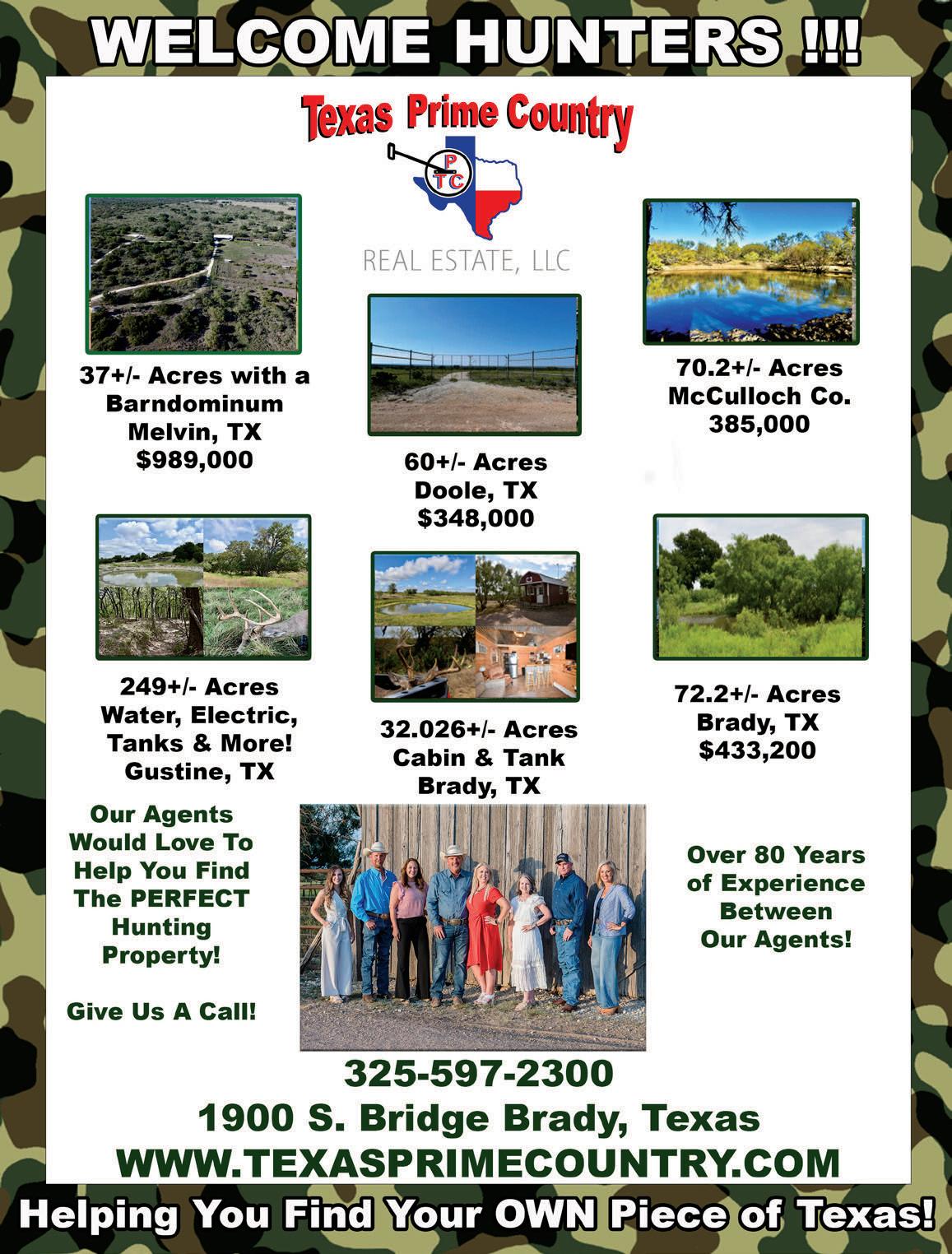
Burgundy Wine-Roasted Venison Roast
6 lb. to 7 lb. quarter of venison, deboned
1 bay leaf
6 dried juniper berries
1 tsp. salt
6 to 10 slices salt pork
2 cups Burgundy
1 cup canned beef broth
1 large white onion, sliced
2 med. garlic cloves, chopped
Make marinade by combining Burgundy, beef broth, onion, garlic, bay leaf, juniper berries and salt. Place venison roast in a large glass bowl and completely cover with marinade. Refrigerate for 24 hours. Remove venison and allow to drain. Tie with cotton butcher twine to retain shape. Strain marinade and reserve. Place venison in an uncovered roasting pan. Preheat oven to 450 degrees. Place slices of salt pork over roast. Insert a meat thermometer into the thickest part of the roast. Roast for 10 minutes. Reduce oven temperature to 325 degrees and roast 15 to 18 minutes per lb. or to 145 degrees on the meat thermometer. Baste venison occasionally with reserved marinade. When done, remove roast; strain
drippings; pour off fat and serve as a sauce for the roast. Serves 8 to 10.
*
Venison Roast with Buttermilk
3 lb. to 5 lb. venison quarter roast
black pepper
fresh onion, sliced into rings
1 qt. non-cultured buttermilk
salt
garlic powder
Trim all fat from roast. Mix salt, garlic powder and black pepper. Rub seasoning into roast. Brown roast on all sides. Insert toothpicks all over roast and hang onion rings on toothpicks. Pour non-cultured buttermilk over roast and bake in a 375 degree oven to 145 degrees internal temperature. Allow to rest 10 minutes before slicing. Remove toothpicks and serve onion rings with sliced roast.
Ginger Flavored Venison Roast
1 (3 lb. to 4 lb.) venison quarter
roast
1 bay leaf, ground
1 medium white onion, diced
salt
black pepper
8 whole allspice
30 gingersnap cookies about 1
1/2” wide
Mix ground bay leaf, onions, salt, and pepper. Rub venison with mixed spices. Insert allspice deep into venison. Place venison in a roasting pan. Lay gingersnap cookies on the roast. Place roast in a 325 degree oven and cook for about 3 hours or until internal temperature reaches 145 degrees. Remove gingersnap cookies. Make a gravy with pan juices. Serves 6 to 8.
Greek-Style Venison Platter
2 cans red kidney beans
1 can whole mushrooms
1 can whole kernel corn
2 Tbsp. capers
1/2 tsp. salt substitute
1/4 tsp. black pepper
2/3 cup Cheddar and Wine Dressing
12 slices cold venison roast mixed salad greens
1 can pimentos
1 1/2 cups diagonally sliced celery
2 Tbsp. onion, finely chopped

corn, onion, half the pimento strips, 2 tbsp. parsley and 1 tbsp. capers in a mixing bowl and sprinkle with salt substitute and pepper. Add the dressing and toss to mix well. Chill. Fold slices of roast venison and arrange along sides of a serving platter. Place salad greens at the ends of platter and spoon the corn, bean and vegetable mixture in mound in center. Garnish with remaining pimento strips, parsley and capers. Serves 6. *
Cold Venison Salad
2 cups cooked venison, chopped
1 cup celery, thinly sliced
1/4 cup pickle, chopped
2 Tbsp. white onion, chopped
3 1/2 Tbsp. French dressing salt
white pepper
1/2 cup Russian dressing
mixed salad greens
parsley stuffed olives
1/4 cup parsley, finely chopped
Drain the kidney beans, mushrooms, corn, and pimentos and cut the pimentos in strips. Combine the celery, kidney beans, mushrooms,

Combine venison, celery, pickle, onion and French dressing. Chill. Drain and season with salt and pepper. Mix Russian dressing and serve on a bed of salad greens. Garnish with parsley and stuffed olives. Serves 4 to 6.

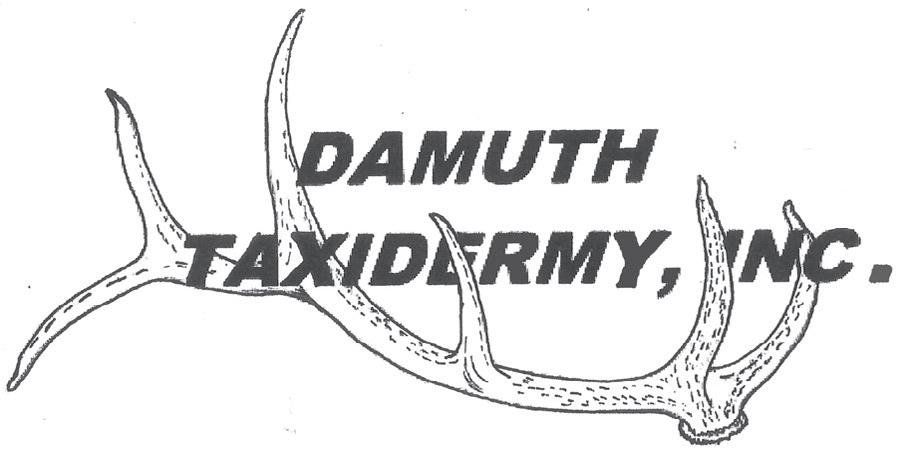
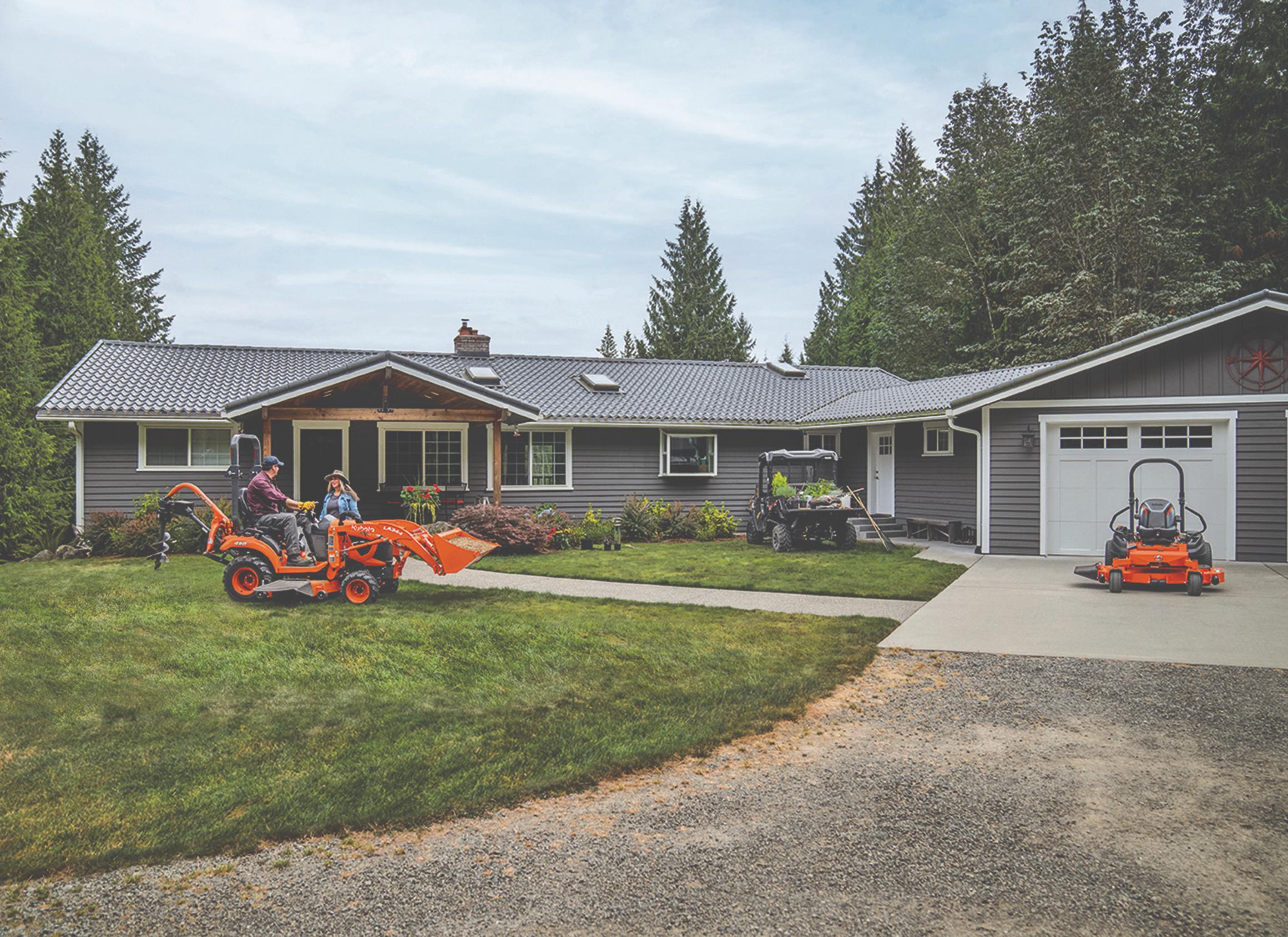







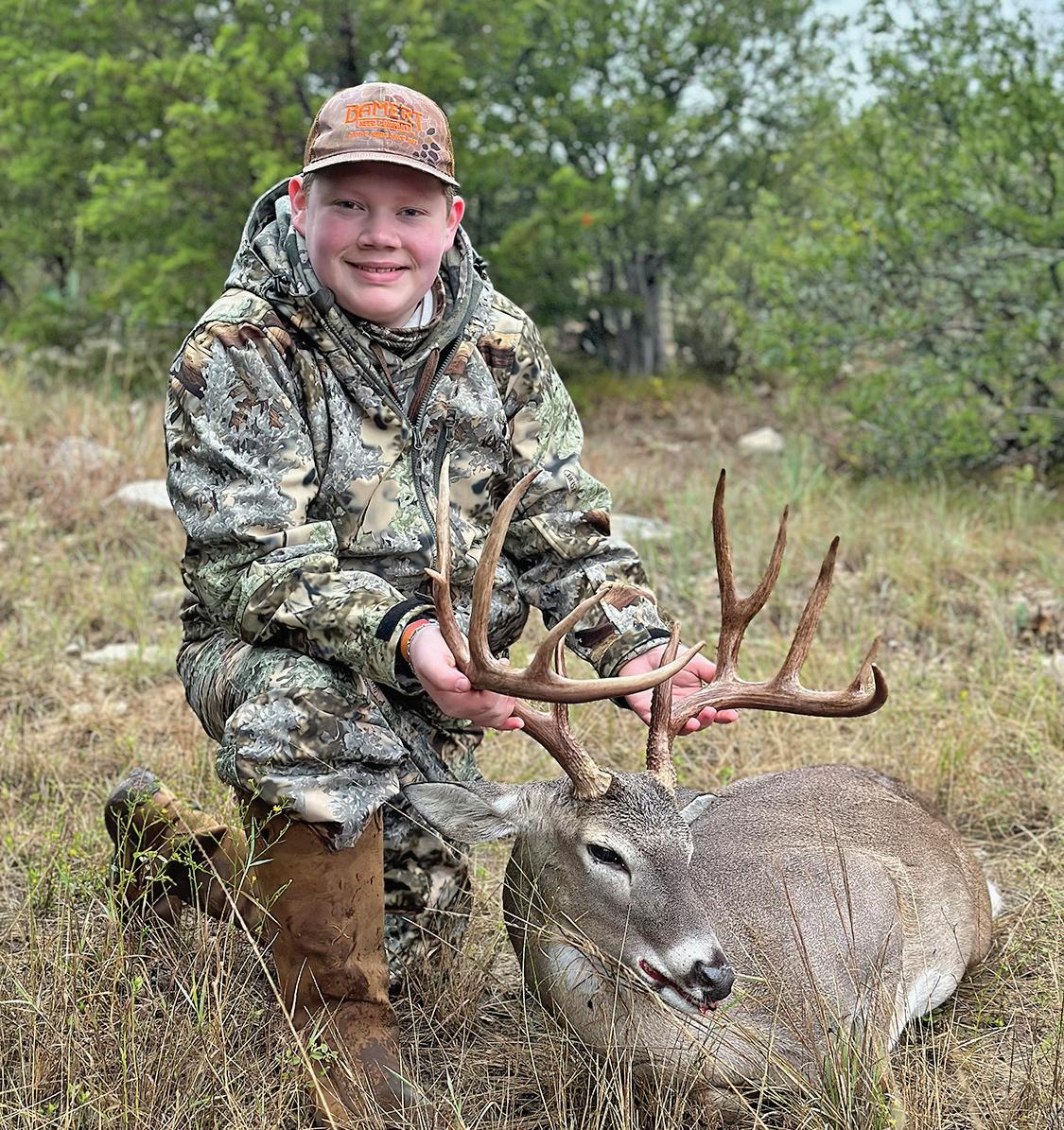
NICE BUCK— Matthan Ellis had a great youth hunt in 2023. He harvested this nice and healthy McCulloch County buck during the youth weekend hunting here in McCulloch County with his grandfather, Quincy Ellis.
Do you have a big doe harvest this season but don't need the meat? Too many whitetails that need to be thinned out? Get your tags and your hunters and help our local food bank. If you love hunting but don't need all the meat you can harvest, McCulloch County is working with one local deer processor (Steve’s Meat Market) to help stock the shelves of our county's food pantry.
Hunters for the Hungry has provided over 10 million servings of venison to Texans in need. Through the program, hunters can drop off legally tagged, field-dressed whitetail to Steve’s Meat Market who will prepare the venison for distribution through local food banks.
The Brady Clergy Association in cooperation with the McCulloch County Resource Center, is organizing the McCulloch County Hunters for the Hungry. Any deer donated to the program will be used to provide healthy venison to families in need in McCulloch County
The Resource Center recently upgraded and expanded its food pantry capabilities to include a refrigeration locker that can now store large quantities of bulk frozen food including processed venison.
Venison can't be sold but it can be donated and given out as high quality protein as part of the food pantry operations.
But the processing of each deer comes at a price and hunters are encouraged to pay for the processing costs if they are able. If the local food bank has to pay for the processing fees, that decreases the purchasing power they have in other areas. The cost for a basic processing fee for the food pantry is $65.
Steve's Meat Market 325-597-4971 is Brady’s only donation point for the food pantry. Please help the McCulloch County Resource Center by donating your surplus venison.
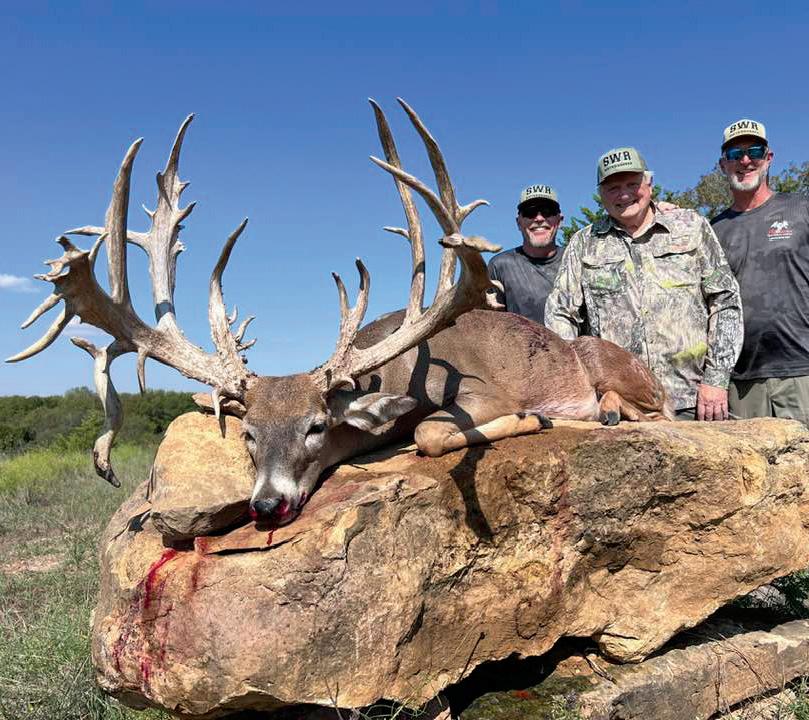
307” WITH A CROSSBOW—Former Bradyite Skip Priess bagged yet another world class monster this fall while hunting on the Sullivan Whitetail Ranch—only this time, he one-upped his big buck from two years ago when he killed this monster with a crossbow. The buck scored 307 1/8” in the Los Cazadores contest he which puts him #13 all time crossbow kill in Texas.

Financially supporting the program with a monetary donation! $65 covers the cost to process one field dressed whitetail deer that will be distributed through the McCulloch County Food Pantry. Your donation helps us provide hungry Texans with lean, healthy protein! Funds help promote our program and cover the costs of processing donated deer meat that goes to hungry families.
Bringing your legally tagged, field-dressed whitetail deer to Steve’s Meat Market. Due to state and federal health regulations, Hunters for the Hungry is not able to accept donations of feral hog.
When you purchase your Texas hunting license, choose the option to donate to Hunters for the Hungry. Your donation supports meat processing fees.
Brady location: Steve’s Meat Market: 1510 S. Bridge St. 325-597-4971



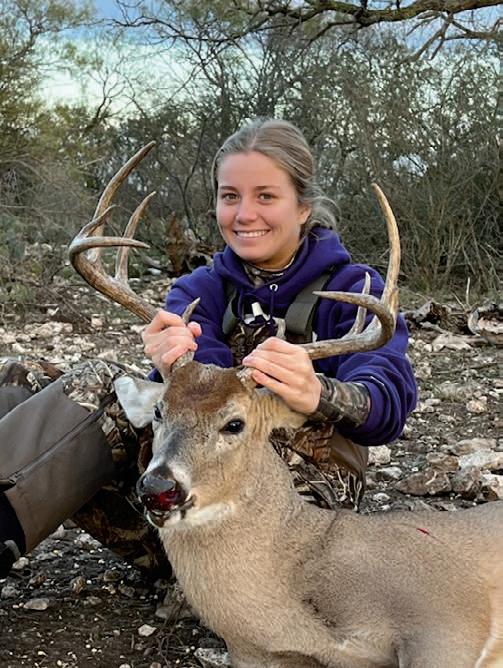

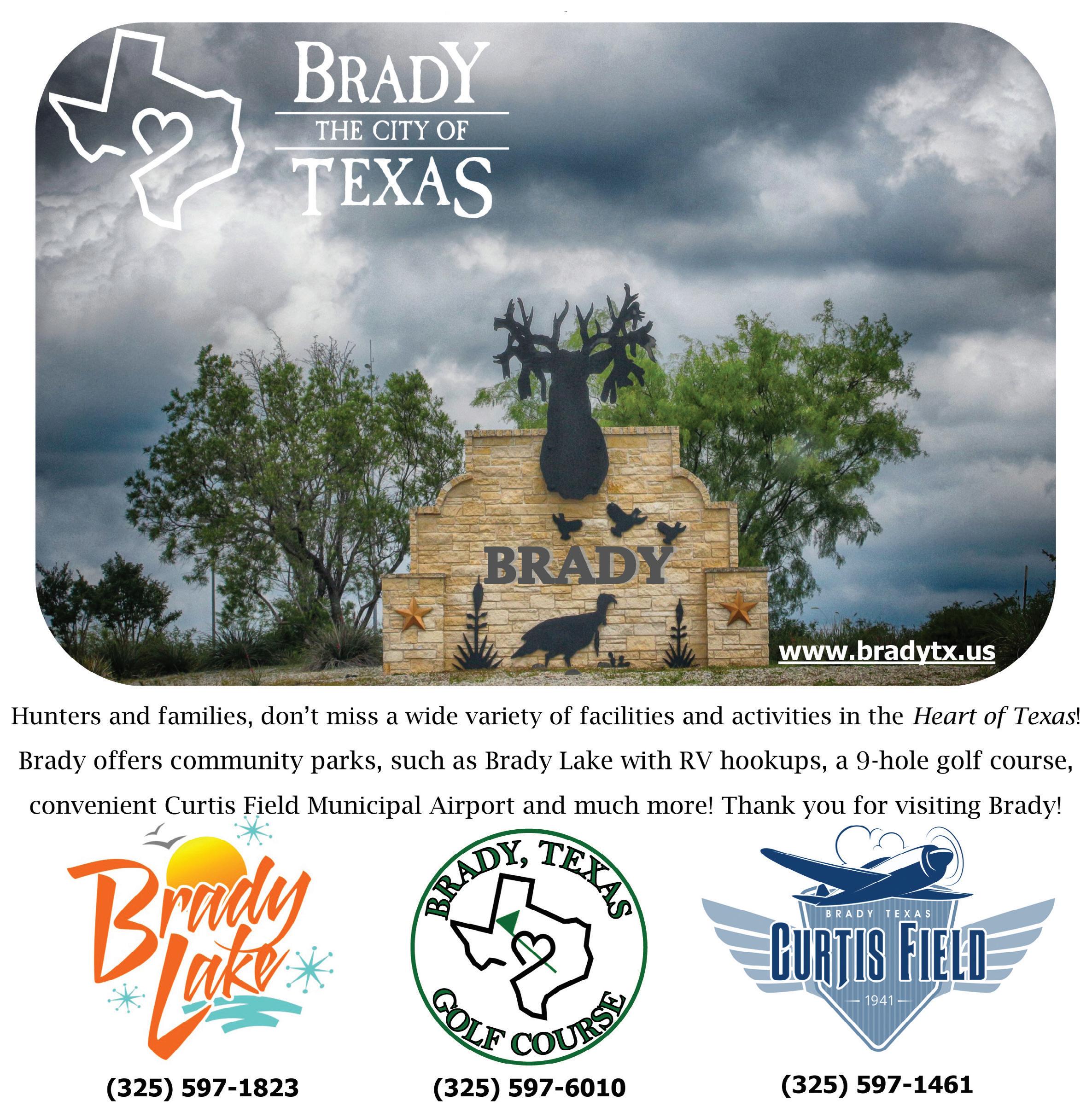
By JA mes stewA rt
The older I get, the more I enjoy doing things with friends and family—especially if it concerns something in God’s great outdoors.
For the past four years, my brother and I have made various trips that revolve around hunting, shooting, backpacking, and fishing. Whether it be a Run & Gun competition or a backpacking trip to the mountains of Colorado, the trips have become something I look forward to with great anticipation whenever they get placed on the schedule.
This year’s summer trip was a repeat of last year’s when my son joined us for a 4-mile hike to an alpine lake in the Colorado wilderness. This year’s trip came about due mainly to the desire to escape the Texas heat, but even up at 11,750’, it was hotter than normal.
This year’s trip was to be my brother, Todd, and sister-in-law, Sarah, who were up for the adventure. We elected to repeat last year’s trail so Sarah could join in, especially since she can see the trail from her porch on her Colorado property. Last year’s trip with my son was so successful, Sarah all-in. She even purchased a new backpack, and with enough extra gear between my brother and me, we were able to outfit both her and her husband, Zack.
Zack actually had no desire to do the whole trip but opted instead for a day hike and an overnight stay and hike back down the next day. I’m pretty sure it was a “one-and-done” trip for him. He’s more about hanging around the cabin and using 4-wheelers to get around.
The best thing about these Colorado hikes the past few years is that we can stand on Zack and Sarah’s porch and see the location where we hiked. Use a spotting scope, and you can see waterfalls and trails.
Thanks to social media, the first friend I made when I moved to Texas ended up joining us for this trip. Nick still lives in California, and it was a 2-day drive for him, but he used it as a forced vacation during his transition from one job to the next.
It was all happenstance—like me, he’s not one to post much on social media, but he made a post while on a solo bike-packing trip, and I commented on it and mentioned we should meet up for a fishing trip. Little did I know the stars would align, and we soon found ourselves becoming reacquainted while humping it up a four-mile trail into the backcountry.
For me, it’s just under 11 hours of driving
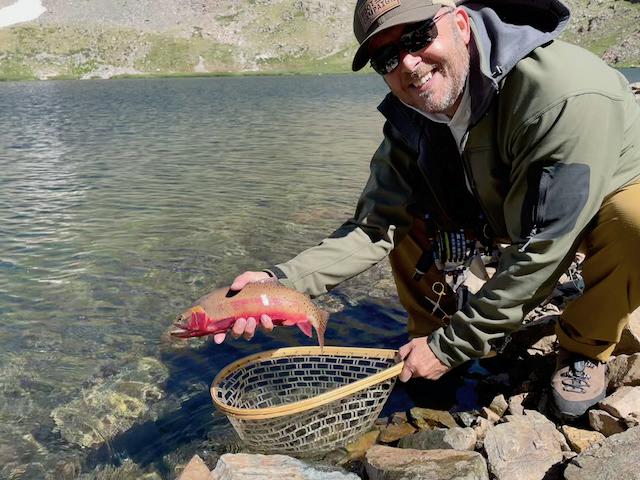

to get to the Smith’s. I meet my brother in Amarillo, and we ride on together. With all the adjustments in schedules, we managed to arrive at Zack and Sarah’s place a mere two hours apart. We prepped our gear, slept on beds in the shop that night, and were at the trailhead by 8 a.m.
From the time we said hello, it was almost like Nick and I picked up where we left off. We each had loads of questions, and we spent the next few days filling in the gaps of the past 40 years. It was shocking how familiar things between us still were.
Nick’s previous job was for an outdoor marketing group, so he had loads of tech gear, all designed for backpacking. He even had an ultralight inflatable tube, waders, and fins that allowed him to float around the alpine lake in comfort. I’m still kicking myself for not taking him up on the offer to give the tube a whirl.
Our trek was a four-mile trail with 4,000’ of vertical elevation. Thanks to a pile of wood left by US Forest crews, we missed a turn and added an additional mile of hiking to our trip up, but we made it safe and sound, and all of us were extremely happy to make it to camp.
The trip was scheduled for three nights. Zack hiked up solo on the last full day, carrying a pack with the bare necessities. We’d all been working to train for the trip, but my 40-pound pack still felt heavy when climbing in thin air.
My biggest worry was that the fishing wouldn’t be as amazing as it was last year, but thankfully, it was just as good. Sarah was determined to dine on fresh fish, so we did exactly that two nights in a row. There’s something about eating fish you just pulled from the water. It’s still fish and not a ribeye, but looking out across the valley with a roaring fire and cool temps and a warm meal sure made for a great way to end the day.
The howling winds kept us all awake all night the first night, but we were given a reprieve on night two. We camped at a slightly lower altitude to take advantage of trees with hopes of avoiding the pesky marmots who managed to destroy equipment and harass us last year. The little critters
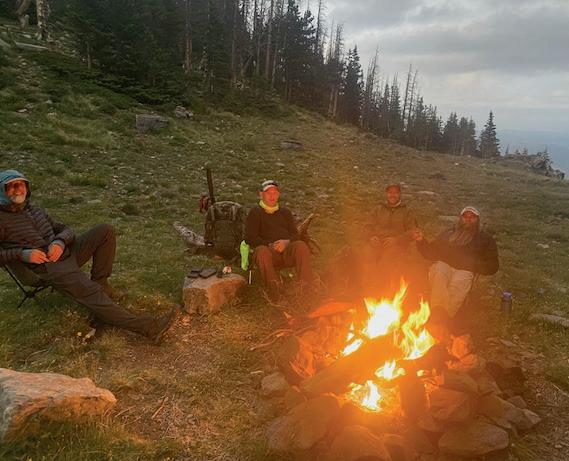
still managed to hit each of us with their destructive tendencies during this trip. If you left something on the ground, they got into it. Apparently, they are drawn to salt, i.e., sweaty clothes, headbands, fishing rods and trekking pole handles.
The days passed faster than I realized, and before I knew it, we were packing up and heading back down the mountain. I was the slow one of the bunch, as usual, so Nick and I let Todd go at his own pace. We spent the last few hours going down the mountain, continuing to fill in the gaps in the timeline of our respective lives. At one point, we started naming out things we enjoyed doing and things we had in common. It was uncanny how, over 40 years apart, I could easily see both how and why we had been such good friends in our younger years.
It only took half the time of the way up to get back to the truck, and it all happened with much less effort. A calf cramp hampered my stride, but I still don’t know whether the physical exertion going up is worse than the foot and knee pain of coming down. It’s one of life’s mysteries.
We all made it safely to our respective homes, and even with sore muscles, I found myself longing to go back and do it all over again. No, it wasn’t easy. No, I didn’t get great sleep, but I did get the chance to reconnect with old friends and spend time with family. It doesn’t get much better than that.—JS
